Lesson "art of the late renaissance". Venice renaissance art
Send your good work in the knowledge base is simple. Use the form below
Students, graduate students, young scientists who use the knowledge base in their studies and work will be very grateful to you.
Hosted at http://www.allbest.ru
Venetian school
The Venetian school, one of the main schools of painting in Italy, with its center in the city of Venice (sometimes also in the small towns of Terraferma - areas of the mainland adjacent to Venice). The Venetian school is characterized by the predominance of the pictorial principle, special attention to the problems of color, the desire to embody the sensual fullness and colorfulness of life. Closely related to countries Western Europe and the East, Venice drew from a foreign culture everything that could serve as its decoration: the elegance and golden sheen of Byzantine mosaics, the stone surroundings of Moorish buildings, the fantasticness of Gothic temples. At the same time, its own original style in art was developed here, gravitating towards ceremonial colorfulness. The Venetian school is characterized by a secular, life-affirming beginning, a poetic perception of the world, man and nature, subtle colorism. The Venetian school reached its greatest prosperity in the era of the Early and High Renaissance, in the work of Antonello da Messina, who opened up for his contemporaries the expressive possibilities of oil painting, the creators of ideally harmonic images of Giovanni Bellini and Giorgione, the greatest colorist Titian, who embodied in his canvases the cheerfulness and colorfulness inherent in Venetian painting. plethora. In the works of the masters of the Venetian school of the 2nd half of the 16th century, virtuosity in conveying the multicolored world, love for festive spectacles and a diverse crowd coexist with overt and hidden drama, an alarming sense of the dynamics and infinity of the universe (paintings by Paolo Veronese and Jacopo Tintoretto). In the 17th century, the traditional interest of the Venetian school in the problems of color in the works of Domenico Fetti, Bernardo Strozzi and other artists coexisted with the techniques of Baroque painting, as well as realistic tendencies in the spirit of caravagism. The Venetian painting of the 18th century is characterized by the flourishing of monumental and decorative painting (Giovanni Battista Tiepolo), household genre(Giovanni Battista Piazzetta, Pietro Longhi), documentary-accurate architectural landscape - veduta (Giovanni Antonio Canaletto, Bernardo Belotto) and lyrical, subtly conveying the poetic atmosphere of everyday life in Venice city landscape (Francesco Guardi).
From the workshop of Gianbellino came two great artists of the High Venetian Renaissance: Giorgione and Titian.
George Barbarelli da Castelfranco, nicknamed Giorgione (1477-1510), is a direct follower of his teacher and a typical artist of the High Renaissance. He was the first on Venetian soil to turn to literary themes, to mythological subjects. Landscape, nature and the beautiful naked human body became for him an object of art and an object of worship. Leonardo is close to Giorgione with a sense of harmony, perfection of proportions, exquisite linear rhythm, soft light painting, spirituality and psychological expressiveness of his images, and at the same time, Giorgione's rationalism, which undoubtedly had a direct influence on him when he was passing from Milan in 1500. in Venice. But Giorgione is more emotional than the great Milanese master, and, like a typical Venice artist, he is interested not so much in linear perspective as in airy and mainly color problems.
Already in the first known work "Madonna of Castelfranco" (circa 1505), Giorgione appears as a fully developed artist; the image of the Madonna is full of poetry, thoughtful dreaminess, permeated with that mood of sadness that is characteristic of all female images of Giorgione. Over the last five years of his life (Giorgione died of the plague, which was a particularly frequent visitor to Venice), the artist created his the best works, executed in oil technique, the main one in the Venetian school at a time when the mosaic became a thing of the past along with the entire medieval artistic system, and the fresco turned out to be unstable in the humid Venetian climate. In the painting of 1506 "Thunderstorm" Giorgione depicts man as part of nature. A woman feeding a child, a young man with a staff (who can be mistaken for a warrior with a halberd) are not united by any action, but are united in this majestic landscape by a common mood, a common state of mind. Giorgione owns the finest and extraordinarily rich palette. The muted tones of the young man's orange-red clothes, his greenish-white shirt, echoing the woman's white cloak, are, as it were, enveloped in that semi-twilight air that is characteristic of pre-storm lighting. The green color has a lot of shades: olive in the trees, almost black in the depths of the water, lead in the clouds. And all this is united by one luminous tone, conveying the impression of unsteadiness, anxiety, anxiety, but also joy, like the very state of a person in anticipation of an impending thunderstorm.
The same feeling of surprise in front of the complex spiritual world of a person is also evoked by the image of Judith, which combines seemingly incompatible features: courageous majesty and subtle poetry. The picture is written in yellow and red ocher, in a single golden color. The soft black-and-white modeling of the face and hands is somewhat reminiscent of Leonard's "sfumato". The pose of Judith, standing by the balustrade, is absolutely calm, her face is serene and thoughtful: a beautiful woman against the backdrop of beautiful nature. But in her hand a double-edged sword glistens coldly, and her tender foot rests on the dead head of Holofernes. This contrast brings a sense of confusion and deliberately breaks the integrity of the idyllic picture.
Spirituality and poetry permeate the image of the "Sleeping Venus" (circa 1508-1510). Her body is written easily, freely, gracefully, and it is not without reason that researchers speak of the "musicality" of Giorgione's rhythms; it is not devoid of sensual charm. But the face with closed eyes is chaste and strict, in comparison with it, the Titian Venuses seem to be true pagan goddesses. Giorgione did not have time to complete work on "Sleeping Venus"; according to contemporaries, the landscape background in the picture was painted by Titian, as in another late work of the master - "Country Concert" (1508--1510). This picture, depicting two gentlemen in magnificent clothes and two naked women, one of whom takes water from a well, and the other plays the flute, is the most cheerful and full-blooded work of Giorgione. But this living, natural feeling of the joy of being is not associated with any specific action, full of enchanting contemplation and dreamy mood. The combination of these features is so characteristic of Giorgione that it is precisely the "Country Concert" that can be considered his most typical work. Sensual joy in Giorgione is always poeticized, spiritualized.
Titian Vecellio (1477?--1576) - the greatest artist Venetian Renaissance. He created works on both mythological and Christian subjects, worked in the portrait genre, his coloristic talent is exceptional, compositional inventiveness is inexhaustible, and his happy longevity allowed him to leave behind a rich creative heritage that had a huge impact on posterity. Titian was born in Cadore, a small town at the foot of the Alps, in a military family, studied, like Giorgione, with Gianbellino, and his first work (1508) was joint painting with Giorgione of the barns of the German Compound in Venice. After the death of Giorgione, in 1511, Titian painted in Padua several rooms of scuolo, philanthropic brotherhoods, in which the influence of Giotto, who once worked in Padua, and Masaccio is undoubtedly felt. Life in Padua introduced the artist, of course, to the works of Mantegna and Donatello. Glory to Titian comes early. Already in 1516, he became the first painter of the republic, from the 20s - the most famous artist of Venice, and success does not leave him until the end of his days. Around 1520, the Duke of Ferrara commissioned him a series of paintings in which Titian appears as a singer of antiquity who managed to feel and, most importantly, embody the spirit of paganism ("Bacchanal", "Feast of Venus", "Bacchus and Ariadne").
Venice of these years is one of the centers of advanced culture and science. Titian becomes the brightest figure in the artistic life of Venice, together with the architect Jacopo Sansovino and the writer Pietro Aretino, he forms a kind of triumvirate that leads the entire intellectual life of the republic. Wealthy Venetian patricians order altarpieces from Titian, and he creates huge icons: the Ascension of Mary, the Pesaro Madonna (named after the customers depicted in the foreground) and much more - a certain type of monumental composition on a religious plot, which simultaneously plays the role of not only an altar image, but also a decorative panel. In Madonna Pesaro, Titian developed the principle of decentralizing composition, which was unknown to the Florentine and Roman schools. Having shifted the figure of the Madonna to the right, he thus contrasted two centers: the semantic one, personified by the figure of the Madonna, and the spatial one, determined by the vanishing point, placed far to the left, even beyond the frame, which created the emotional intensity of the work. The sonorous pictorial range: Mary's white veil, green carpet, blue, carmine, golden clothes of the upcoming ones - does not contradict, but acts in harmonious unity with the bright characters of the models. Brought up on the "smart" painting of Carpaccio, on the exquisite coloring of Gianbellino, Titian in this period loves plots where you can show the Venetian street, the splendor of its architecture, the festive curious crowd. This is how one of his largest compositions, "The Introduction of Mary into the Temple" (circa 1538), is created - the next step after the "Madonna of Pesaro" in the art of depicting a group scene, in which Titian skillfully combines life's naturalness with majestic elation. Titian writes a lot on mythological subjects, especially after a trip to Rome in 1545, where the spirit of antiquity was comprehended by him, it seems, with the greatest completeness. It was then that his versions of Danae appear (an early version is 1545; all the rest are around 1554), in which, strictly following the plot of the myth, he depicts the princess, languishing awaiting the arrival of Zeus, and the maid, greedily catching the golden rain. Danae is beautiful in accordance with the ancient ideal of beauty, which the Venetian master follows. In all these variants, the Titian interpretation of the image carries a carnal, earthly beginning, an expression of the simple joy of being. His "Venus" (circa 1538), in which many researchers see a portrait of the Duchess Eleonora of Urbino, is close in composition to Dzhordzhonevskaya. But the introduction of a domestic scene in the interior instead of a landscape background, the attentive look of the model's wide-open eyes, the dog in her legs are details that convey the feeling of real life on earth, and not on Olympus.
Throughout his life, Titian was engaged in portraiture. In his models (especially in portraits of the early and middle periods of creativity), the nobility of appearance, the majesty of bearing, the restraint of posture and gesture, created by an equally noble color scheme, and stingy, strictly selected details (portrait of a young man with a glove, portraits of Ippolito Riminaldi , Pietro Aretino, daughter of Lavinia).
If the portraits of Titian are always distinguished by the complexity of the characters and the intensity of the internal state, then in the years of creative maturity he creates especially dramatic images, contradictory characters, presented in confrontation and clash, depicted with truly Shakespearean force (a group portrait of Pope Paul III with his nephews Ottavio and Alexander Farnese, 1545--1546). Such a complex group portrait developed only in the 17th century Baroque, just as an equestrian ceremonial portrait like Titian's "Charles V at the Battle of Mühlberg" served as the basis for the traditional representative composition of Van Dyck's portraits.
Towards the end of Titian's life, his work undergoes significant changes. He still writes a lot on ancient subjects ("Venus and Adonis", "The Shepherd and the Nymph", "Diana and Actaeon", "Jupiter and Antiope"), but more and more often he turns to Christian themes, to scenes of martyrdom, in which pagan cheerfulness, antique harmony is replaced by a tragic worldview ("Flagellation of Christ", "Penitent Mary Magdalene", "St. Sebastian", "Lamentation"),
The writing technique is also changing: golden light coloring and light glazing give way to powerful, stormy, pasty painting. The transfer of the texture of the objective world, its materiality is achieved by wide strokes of a limited palette. "St. Sebastian" is written, in fact, only ocher and soot. The brushstroke conveys not only the texture of the material, but with its movement the form itself is molded, the plasticity of the depicted is created.
The immeasurable depth of sorrow and the majestic beauty of the human being are conveyed in Titian's last work, Lamentation, completed after the death of the artist by his student. The Madonna, holding her son on her knees, froze in grief, Magdalena throws up her hand in despair, the old man remains in deep mournful thought. The flickering bluish-gray light unites the contrasting color spots of the heroes' clothes, the golden hair of Mary Magdalene, the almost sculpturally modeled statues in the niches and at the same time creates the impression of a fading, passing day, the onset of twilight, enhancing the tragic mood.
Titian died at an advanced age, having lived for almost a century, and is buried in the Venetian church dei Frari, decorated with his altarpieces. He had many students, but none of them was equal to the teacher. The enormous influence of Titian affected the painting of the next century, it was experienced to a large extent by Rubens and Velasquez.
Venice throughout the 16th century remained the last stronghold of the independence and freedom of the country; as already mentioned, it remained faithful to the traditions of the Renaissance for the longest time. But at the end of the century, the features of the impending new era in art, the new artistic direction. This can be seen in the work of two major artists of the second half of this century - Paolo Veronese and Jacopo Tintoretto.
Paolo Cagliari, nicknamed Veronese (he was from Verona, 1528-1588), was destined to become the last singer of the festive, jubilant Venice of the 16th century. He began by making paintings for the Verona palazzos and images for the Verona churches, but fame came to him when, in 1553, he began to work on murals for the Doge's Palace in Venice. From now on, Veronese's life is forever connected with Venice. He makes paintings, but more often he paints large oil paintings on canvas for the Venetian patricians, altarpieces for Venetian churches on their own order or on the official order of the republic. He wins the competition to decorate the library of St. Mark. Glory accompanies him all his life. But no matter what Veronese wrote: "Marriage in Cana of Galilee" for the refectory of the monastery of San George Maggiore (1562--1563; size 6.6 x 9.9 m, depicting 138 figures); paintings whether on allegorical, mythological, secular subjects; whether portraits, genre paintings, landscapes; "The Feast at Simon the Pharisee" (1570) or "The Feast at the House of Levi" (1573), later rewritten at the insistence of the Inquisition, are all huge decorative pictures of the festive Venice, where the Venetian crowd dressed in elegant costumes is depicted against the backdrop of a widely painted perspective of the Venetian architectural landscape, as if the world for the artist was a constant brilliant extravaganza, one endless theatrical action. Behind all this is such a wonderful knowledge of nature, everything is executed in such an exquisite single (silver-pearl and blue) color with all the brightness and variegation of rich clothes, so inspired by the talent and temperament of the artist that the theatrical action acquires a life of credibility. There is a healthy sense of joy in life in Veronese. His powerful architectural backgrounds are not inferior to Raphael's in their harmony, but complex movement, unexpected angles of figures, increased dynamics and congestion in the composition - features that appear at the end of creativity, a passion for image illusionism speak of the advent of art of other possibilities and other expressiveness.
The tragic attitude manifested itself in the work of another artist - Jacopo Robusti, known in art as Tintoretto (1518--1594) ("tintoretto" is a dyer: the artist's father was a silk dyer). Tintoretto spent a very short time in Titian's workshop, however, according to contemporaries, the motto hung on the doors of his workshop: "Michelangelo's drawing, Titian's coloring." But Tintoretgo was perhaps a better colorist than his teacher, although, unlike Titian and Veronese, his recognition was never complete. Numerous works of Tintoretto, written mainly on the subjects of mystical miracles, are full of anxiety, anxiety, and confusion. Already in the first painting that brought him fame, The Miracle of St. Mark (1548), he presents the figure of the saint in such a complex perspective, and all people in a state of such pathos and such stormy movement, which would have been impossible in the art of the High Renaissance in its classical period. Like Veronese, Tintoretto writes a lot for the Doge's Palace, Venetian churches, but most of all for philanthropic brotherhoods. Two of his largest cycles are performed for Scuolo di San Rocco and Scuolo di San Marco.
The principle of Tintoretto's figurativeness is built, as it were, on contradictions, which probably frightened off his contemporaries: his images are clearly of a democratic warehouse, the action takes place in the simplest setting, but the plots are mystical, full of exalted feelings, express the ecstatic fantasy of the master, executed with manneristic sophistication . He also has subtly romantic images, fanned by a lyrical feeling (The Salvation of Arsinoe, 1555), but here, too, the mood of anxiety is conveyed by a wavering unsteady light, cold greenish-grayish flashes of color. Unusual is his composition "Introduction to the Temple" (1555), which is a violation of all accepted classical norms of construction. The fragile figure of little Mary is placed on the steps of a steeply rising staircase, at the top of which the high priest awaits her. The feeling of the vastness of space, the swiftness of movement, the power of a single feeling gives special significance to the depicted. Terrible elements, flashes of lightning usually accompany the action in the paintings of Tintoretto, enhancing the drama of the event ("The Abduction of the Body of St. Mark").
Since the 60s, Tintoretto's compositions have become simpler. He no longer uses contrasts of color spots, but builds a color solution on an unusually diverse transition of strokes, either flashing or fading, which enhances the drama and psychological depth of what is happening. So he wrote "The Last Supper" for the brotherhood of St. Mark (1562--1566).
From 1565 to 1587 Tintoretto worked on the decoration of the Scuolo di San Rocco. The giant cycle of these paintings (several dozen canvases and several plafonds), occupying two floors of the room, is imbued with piercing emotionality, a deep human feeling, sometimes a caustic feeling of loneliness, a person’s absorption in boundless space, a feeling of insignificance of a person in front of the greatness of nature. All these sentiments were deeply alien to the humanistic art of the High Renaissance. In one of the last versions of The Last Supper, Tintoretto already presents an almost established system means of expression baroque. A table placed diagonally, flickering light refracted in dishes and grabbing figures from the darkness, sharp chiaroscuro, a plurality of figures presented in complex foreshortenings - all this creates the impression of some kind of vibrating environment, a feeling of extreme tension. Something ghostly, surreal is felt in his later landscapes for the same Scuolo di San Rocco ("Flight into Egypt", "St. Mary of Egypt"). In the last period of creativity, Tintoretto works for the Doge's Palace (composition "Paradise", after 1588).
Tintoretto did a lot of portraiture. He portrayed the Venetian patricians, closed in their grandeur, proud Venetian doges. His painting style is noble, restrained and majestic, as is the interpretation of models. Full of heavy thoughts, painful anxiety, mental confusion, the master depicts himself in a self-portrait. But this is a character to which moral suffering has given strength and greatness.
Concluding the review of the Venetian Renaissance, it is impossible not to mention the greatest architect, who was born and worked in Vicenza near Venice and left there excellent examples of his knowledge and rethinking of ancient architecture - Andrea Palladio (1508--1580, Villa Cornaro in Piombino, Villa Rotunda in Vicenza, completed already after his death by students according to his project, many buildings in Vicenza). The result of his study of antiquity was the book "Roman Antiquities" (1554), "Four Books on Architecture" (1570-1581), but antiquity was for him a "living organism", according to the researcher's fair observation. "The laws of architecture live in his soul as instinctively as the instinctive law of verse lives in Pushkin's soul. Like Pushkin, he is his own norm" (P. Muratov).
In subsequent centuries, the influence of Palladio was enormous, even giving rise to the name "Palladianism". The "Palladian Renaissance" in England began with Inigo Jones, continued throughout the 17th century, and only br. Adams began to move away from him; in France, his features are carried by the work of Blondels St. and Ml.; in Russia, "Palladians" were (already in the 18th century) N. Lvov, br. Neyolov, C. Cameron and most of all -J. Quarenghi. In the Russian estate architecture of the 19th century and even in the modern era, the rationality and completeness of the Palladio style manifested itself in the architectural images of neoclassicism.
During the late Middle Ages and early Renaissance, Venice was a powerful trading state. Since the 12th century, the arts have flourished here; on the tiny island of Murano, art glassmaking has progressed to such an extent that it is the envy of the rulers of other countries. Glassmaking is very well organized and regulated by the Guild of Glassblowers. Success is ensured by strict quality control, the introduction of new technologies and the protection of trade secrets; in addition, thanks to the well-developed merchant fleet of the Venetian Republic, excellent conditions have developed on the market.
Significant technological progress is observed in the production of colorless, exceptionally pure glass. Due to its resemblance to rock crystal, it was called spaiano. It was first made around 1450, and the authorship is attributed to Angelo Barovier. Crustallo has become synonymous with the term "Venetian glass", which was understood as a combination of the highest purity and transparency with plasticity.
The secrets of blowing technology and new forms are passed from hand to hand. Molds are usually made from other materials, most commonly metal or ceramic. Gothic lines, common as far back as the 16th century, are gradually being replaced by classical, streamlined, more characteristic of the Renaissance.
As for the decor technique, the Venetian masters use everything: both novelties, and the Romanesque and Byzantine techniques that have come into fashion again, and the technique of the Middle East.
The most common among the Venetians was the "hot" technique, in which the decoration is part of the process of making a glass product and is completed in an annealing furnace, when the master gives the object its final shape. The glassblowers of Venice used the dipping method to create the ribbed pattern.
To obtain an elegant, plastic pattern, the product is additionally processed: individual parts are superimposed on hot glass, which allows you to "dress" it in an intricate ornament.
Venetian decorative technique
Venice specializes in glass decoration, which is its integral part. Calcedonio glass is similar to marble, which is achieved by a complex process of mixing glass of different colors and processing accordingly. Invented around 1460, it resembles the semi-precious stone agate or chalcedony, from which its name comes.
To obtain millefiori (thousand colors) glass, a bubble of hot colorless glass from a glass tube is rolled over a smooth board on which pieces of colored glass are randomly scattered. They adhere to the surface of the bladder and are rolled into the surface until it is smooth, after which the bladder is inflated and shaped into the desired shape. The result is the effect of bright patterned inclusions in clear colorless glass. The technique of making "thousand flowers" and chalcedony glass is considered complex. The hot technique for filigree glass is more widely used: thin frosted strips are attached to colorless glass; the resulting glass may have a simple striped pattern (fili) or, in a more complicated version, a pattern with swirling stripes (ritorti). The result is achieved by combining with figured forms.
In cold methods, the decor is applied to the finished glass. Engraving with a diamond needle involves drawing a pattern on glass surfaces with a sharp piece of diamond. It can be an ornament with arabesques or grotesques, made with a contour and shaded with parallel lines. Cold reverse drawing is done on plates and dishes; the pattern turns out to be a detail-nvsh, but it is almost not protected from scratches and chips.
The surface of the products is covered with enamel, made from pigments based on glass mass. The pattern is applied to the surface as long as the glass and enamels remain soft and fusible by lightly heating the object to be decorated and placing it back in the oven. Rough enamel paste allows only a simple design, and was suitable for simple designs. Sometimes a gold leaf was glued to the surface and fired together with enamel.
Venetian style
As the prestige of Venetian glass grows, so does the number of orders; dukes from other countries seek to open their own production of this luxurious glass. Venetian glassmakers do their best to keep the technology secret, but their craftsmen are poached abroad. By the end of the 16th century, Murano glassblowers had lit their kilns in several countries north of the Alps. They try to produce glass in the Venetian style, the same as they did in their homeland, and it is often difficult to distinguish their products from Murano.
The workshops of Solbad Hall, Tyrol, Austria, are among the first to adopt the Venetian blowing style. Some products are attributed to them only because they bear the corresponding coat of arms. Tyrolean workshops specialize in cold painting, although the form of their products remains purely Venetian.
In the northern part of Europe, Antwerp became one of the main producers of Venetian glass. Many glassblowers came from Venice. Nevertheless, local styles also developed, especially in the 17th century.
From Antwerp, the Venetian masters scattered to other countries. The Italian Giacomo Vercellini (1522-1606) moved to London. He is credited with some amazingly elegant glassware of the 1580s. The engraving was done in London by the Frenchman Anthony de Lisle. The masters of a rival glassblower from Altare, northeast Italy, begin to work in the Venetian style in France. They create completely different, usually angular models and more figurative enamel ornamentation.
In Spain, local traditions are strong, the influence of the Venetians was insignificant. Glass is usually honey-colored. When enamel fell out of fashion in the first quarter of the 16th century even among the glassblowers of Venice, the Spaniards still continued to use and improve this technique, incorporating a motif of bright green leaves and stylized animal figures into the ornament.
forest glass
In the vast forests of Central and Northern Europe, since the late Middle Ages, a different style has developed in glassblowing. The forests provided fuel for the glassblowers, and they moved to new places, clearing them of vegetation. Most of all, local raw materials are used: beech and fern ash. because of high level the content of iron oxides used in production, the glass turns out to be an unusual greenish color. It is known as waldglas (forest glass).
Forest glassblowing workshops produce mainly the same type of glassware for wine and beer. Most of the products are in the form of a cone-shaped or barrel-shaped glass, sometimes with a rim at the bottom, most often made using metal clips. The dishes are decorated with "lollipops", or drops, creating a regular pattern. "Lollipops" have both decorative and practical sense- it is convenient to take them with oily fingers.
A common type of drinking ware from the 15th and 16th centuries was the so-called Maigelen (barrel-shaped goblets with a honeycomb motif or faceted).
In the 16th century, models are introduced that originate from barrel-shaped glasses with "lollipops". Krautstrunk (stump) is a thick-walled glass, decorated with elongated "lollipops" as if elongated with tweezers. Another variety is made - Berkemeyer, glasses with a short stem and a relatively cylindrical, two-piece body, which bends inwards at the top.
Reomer, one of the most popular 17th century drinking utensils, originated from Berkemeyer. The top of the Reomer is spherical or egg-shaped; around 1620, they began to be made with a high mouth or stem, which were decorated with "candy" stuck on in a hot way. Reomer is usually used for white wines: the greenish glass goes well with the color of the wine.
Hosted on Allbest.ru
Similar Documents
Prerequisites for the emergence and general characteristics of the Venice Charter. general characteristics applied new modern restoration technologies. Reflection of the provisions of the Venice Charter in the Russian restoration science of the second half of the 20th century.
thesis, added 12/29/2016
Brief information about the life path and creative activity of Giorgione - an Italian artist, a representative of the Venetian school of painting, one of the greatest masters High Renaissance. Brief analysis the most outstanding works of the great artist.
abstract, added 04/26/2013
The concept of the Venetian school of painting. Early Madonnas, landscapes, portraits, altarpieces and mythological compositions. Bellini's life path and legacy. The influence and significance of Andrea Mantegna for the work of Giovanni, the relationship of the two artists.
abstract, added 04/26/2013
Giorgione is an Italian artist, a representative of the Venetian school of painting, one of the greatest masters of the High Renaissance. Subtle poetry, deep lyrical feeling, hidden experiences in the paintings of the master. Intimate-lyrical portraits of Giorgione.
abstract, added 05/13/2013
The study of the Arzamas school of painting - A.V. Stupin and his students. The Stupino school was the only hotbed of artistic knowledge for serf talents, mostly forgotten by history. The history of the school, its features and reasons for the liquidation.
abstract, added 04/20/2008
Study of representatives of the Italian school of painting. Characterization of the features of the main types of fine arts: easel and applied graphics, sculpture, architecture and photography. Study of techniques and methods of working with oil paints.
term paper, added 02/15/2012
The study of the art of the Renaissance, including the development of architecture, the founder of which was Filippo Brunelleschi. Features of the Tuscan, Lombard and Venetian schools, in the style of which the Renaissance trends were combined with local traditions.
abstract, added 01/05/2011
The main approaches to the conceptualization of the concept of "scientific school", its main criteria, classification features. Stages of formation and development of the scientific school "Annals". The creative path of the main representatives of the "Annals" school and their contribution to its development.
thesis, added 06/14/2017
Features of Venetian painting in the Renaissance. Creativity El Greco, the most famous of his paintings. Masterpieces of Spanish artists Diego Velasquez and Francisco Goya. French representatives of impressionism Auguste Renoir and Edouard Manet.
presentation, added 10/01/2012
Analysis of the situation in the field of color and color systems. The study of the features of color theories. Study of the meaning of color in painting. The concept of color harmony. Dependence of chiaroscuro and color. The main stages of creating color in the picture.
On the opposition of the two characters, Titian builds the composition "Caesar's Denarius" (1515-1520, Dresden, Picture gallery): the nobility and sublime beauty of Christ are emphasized by the predatory expression and ugliness of the money-grubbing Pharisee. A number of altar images, portraits and mythological compositions belong to the period of Titian's creative maturity. Titian's fame spread far beyond the borders of Venice, and the number of orders constantly increased. In his works of 1518-1530, grandiose scope and pathos are combined with the dynamics of the construction of the composition, solemn grandeur, with the transfer of the fullness of being, the richness and beauty of rich color harmonies. Such is the “Ascension of Mary” (“Assunta”, 1518, Venice, the church of Santa Maria dei Frari), where the powerful breath of life is felt in the very atmosphere, in the running clouds, in the crowd of apostles, looking with admiration and surprise at the figure of Mary ascending into the sky , strictly majestic, pathetic. The chiaroscuro modeling of each figure is energetic, complex and wide movements, filled with a passionate impulse, are natural. Deep red and blue tones are solemnly sonorous. In The Madonna of the Pesaro Family (1519-1526, Venice, Santa Maria dei Frari), abandoning the traditional centric construction of the altar image, Titian gives an asymmetrical but balanced composition shifted to the right, full of bright vitality. Sharp portrait characteristics endowed with Maria's upcoming customers - the Pesaro family.
In the years 1530-1540, the pathos and dynamics of Titian's early compositions are replaced by vitally direct images, clear balance, and slow narrative. In paintings on religious and mythological themes, the artist introduces a specific environment, folk types, accurately observed details of life. In the scene "Entrance into the Temple" (1534-1538, Venice, Academy Gallery), little Mary is depicted climbing the wide stairs to the high priests. And right there, among the noisy crowd of townspeople who have gathered in front of the temple, the figure of an old woman merchant stands out, seated on the steps next to her goods - a basket of eggs. In the painting "Venus of Urbino" (circa 1538, Florence, Uffizi), the image of a sensual naked beauty is reduced from poetic heights by the introduction in the background of the figures of maids, taking something out of a chest. The color scheme, while maintaining sonority, becomes restrained and deep.
Throughout his life, Titian turned to the portrait genre, acting as an innovator in this area. He deepens the characteristics of the portrayed, noticing the originality of posture, movements, facial expressions, gestures, manners of wearing a suit. His portraits sometimes develop into paintings that reveal psychological conflicts and relationships between people. Already in the early portrait of the “Young Man with a Glove” (1515-1520, Paris, Louvre), the image acquires individual concreteness, and at the same time, it expresses the typical features of a Renaissance man, with his determination, energy, sense of independence, the young man seems to ask a question and waits response. Compressed lips, sparkling eyes, the contrast of white and black in clothes sharpen the characterization. Great drama and complexity of the inner world, psychological and social generalizations are distinguished by portraits of later times, when the theme of a person's conflict with the outside world is born in Titian's work. The portrait of Ippolito Riminaldi (late 1540s, Florence, Pitti Gallery) is striking in revealing the refined spiritual world, whose pale face imperiously attracts with the complexity of the characterization, quivering spirituality. Inner life is concentrated in a glance, at the same time intense and scattered, in it the bitterness of doubts and disappointments.
As a kind of document of the era, a group portrait in the growth of Pope Paul III with his nephews, cardinals Alessandro and Ottavio Farnese (1545-1546, Naples, Capodimonte Museum), is perceived as a kind of document of the era, exposing selfishness and hypocrisy, cruelty and greed, authoritativeness and servility, decrepitude and tenacity - all that that connects these people. The heroic equestrian portrait of Charles V (1548, Madrid, Prado) in knightly armor, against the backdrop of a landscape illuminated by the golden reflections of the setting sun, is vividly realistic. This portrait had a tremendous impact on the composition of the Baroque portrait of the 17th and 18th centuries.
In the 1540s-1550s, the features of picturesqueness sharply increase in Titian's work, he achieves complete unity of plastic light and shade and color solutions. Powerful strokes of light make the colors shine and shimmer. In life itself, he finds the ideal of full-blooded mature beauty embodied in mythological images - "Venus in front of a mirror" (circa 1555, Washington, National Gallery of Art), "Danae" (circa 1554, Madrid, Prado).
The strengthening of the feudal-Catholic reaction and the deep crisis experienced by the Venetian Republic cause an aggravation of the tragic beginning in the late works of the artist. They are dominated by plots of martyrdom and suffering, irreconcilable discord with life, stoic courage; "The Torment of Saint Lawrence" (1550-1555, Venice, Jesuit Church), "Penitent Magdalene" (1560s, St. Petersburg, Hermitage), "Coronation with Thorns" (circa 1570, Munich, Pinakothek), "Saint Sebastian "(about 1570, St. Petersburg, Hermitage)," Pieta "(1573-1576, Venice, Academy Gallery). The image of a person in them still has a powerful force, but loses the features of internal harmonic balance. The composition is simplified, based on a combination of one or more figures with an architectural or landscape background, immersed in twilight; evening or night scenes are illuminated by ominous lightning, the light of torches. The world is perceived in variability and movement. In these paintings, the artist's late pictorial manner was fully manifested, acquiring a freer and broader character and laying the foundations for tonal painting of the 17th century. Refusing bright, jubilant colors, he turns to cloudy, steely, olive complex shades, subordinating everything to a common golden tone. He achieves an amazing unity of the colorful surface of the canvas, using various textural techniques, varying the finest glazes and thick pasty open strokes of paint, sculpting form, dissolving a linear pattern in a light-air medium, giving the form the thrill of life. And in his later, even the most tragic-sounding works, Titian did not lose faith in the humanistic ideal. Man for him until the end remained the highest value of the existing. Full of consciousness of his own dignity, faith in the triumph of reason, wise life experience appears before us in the "Self-Portrait" (circa 1560, Madrid, Prado), an artist who carried the bright ideals of humanism through his whole life.
Y. Kolpinsky
Venetian Renaissance art is an integral and inseparable part of Italian art in general. Close relationship with other foci artistic culture Renaissance in Italy, common historical and cultural destinies - all this makes Venetian art one of the manifestations of Renaissance art in Italy, just as it is impossible to imagine the High Renaissance in Italy in all its diversity of creative manifestations without the work of Giorgione and Titian. The art of the late Renaissance in Italy cannot be understood at all without studying the art of the late Titian, the work of Veronese and Tintoretto.
However, the originality of the contribution of the Venetian school to the art of the Italian Renaissance is not only somewhat different from that of any other school in Italy. The art of Venice represents a special version of the development of the principles of the Renaissance in relation to all art schools in Italy.
The art of the Renaissance took shape in Venice later than in most other centers, in particular than in Florence. The formation of the principles of the artistic culture of the Renaissance in the fine arts in Venice began only in the 15th century. This was determined by no means by the economic backwardness of Venice. On the contrary, Venice, along with Florence, Pisa, Genoa, Milan, was one of the most economically developed centers of Italy. Paradoxical as it may seem, it was precisely the early transformation of Venice into a great commercial, and, moreover, predominantly commercial, rather than a manufacturing power, which began in the 12th century. and especially accelerated in the course of the crusades, is to blame for this delay.
The culture of Venice, this window of Italy and Central Europe, "cut through" to the eastern countries, was closely connected with the magnificent grandeur and solemn luxury of the imperial Byzantine culture and partly with the subtly decorative culture of the Arab world. Already in the 12th century, that is, in the era of the dominance of the Romanesque style in Europe, a wealthy trading republic, creating art that affirmed its wealth and power, widely turned to the experience of Byzantium - the richest, most developed Christian medieval power at that time. In essence, the artistic culture of Venice as early as the 14th century. It was a kind of interweaving of magnificently festive forms of monumental Byzantine art, enlivened by the influence of the colorful ornamentation of the East and peculiarly elegant, decoratively rethought elements of mature Gothic art. In fact, proto-Renaissance tendencies made themselves felt under these conditions very weakly and sporadically.
Only in the 15th century there is an inevitable and natural process of the transition of Venetian art to the secular positions of the artistic culture of the Renaissance. Its originality was manifested mainly in the desire for increased festivity of color and composition, in greater interest in the landscape background, in human environment landscape environment.
In the second half of the 15th century there is a formation of the Renaissance school in Venice as a significant and original phenomenon, which occupied an important place in the art of the Italian Quattrocento.
Venice in the middle of the 15th century reaches the highest level of his power and wealth. The colonial possessions and trading posts of the "Queen of the Adriatic" covered not only the entire eastern coast of the Adriatic Sea, but also spread widely throughout the eastern Mediterranean. In Cyprus, Rhodes, Crete, the banner of the Lion of St. Mark flutters. Many of the noble patrician families that make up the ruling elite of the Venetian oligarchy act overseas as rulers of large cities or entire regions. The Venetian fleet firmly controls almost the entire transit trade between East and Western Europe.
However, the defeat of the Byzantine Empire by the Turks, which ended with the capture of Constantinople, shook the trading positions of Venice. Yet in no way can one speak of the decline of Venice in the second half of the 15th century. The general collapse of the Venetian eastern trade came much later. The Venetian merchants, who at that time had been partially released from trade, invested huge amounts of money in the development of crafts and manufactories in Venice, and partly in the development of rational agriculture in their possessions located on the peninsula adjacent to the lagoon (the so-called terra farm). Moreover, the rich and still full of vitality republic in 1509-1516 managed to defend its independence in the fight against the hostile coalition of a number of European powers, combining the force of arms with flexible diplomacy. The general upsurge, due to the successful outcome of the difficult struggle that temporarily rallied all sections of Venetian society, caused the growth of the features of heroic optimism and monumental festivity that are so characteristic of the art of the High Renaissance in Venice, starting with Titian. The fact that Venice retained its independence and, to a large extent, its wealth, determined the duration of the heyday of the art of the High Renaissance in the Venetian Republic. The turn to the late Renaissance was outlined in Venice only around 1540.
The period of formation of the High Renaissance falls, as in the rest of Italy, at the end of the 15th century. It was during these years that the narrative art of Gentile Bellini and Carpaccio began to resist the art of Giovanni Bellini, one of the most remarkable masters of the Italian Renaissance, whose work marks the transition from the early to the High Renaissance.
Giovanni Bellini (c. 1430-1516) not only develops and improves the achievements accumulated by his immediate predecessors, but also raises Venetian art to a higher level. In his paintings, the connection between the mood created by the landscape and the state of mind of the heroes of the composition is born, which is one of the remarkable achievements of modern painting in general. At the same time, in the art of Giovanni Bellini, and this is the most important thing, the significance of the moral world of man is revealed with extraordinary force. True, the drawing in his early works is sometimes somewhat harsh, the combinations of colors are almost sharp. But the feeling of the inner significance of a person's spiritual state, the revelation of the beauty of his inner experiences, reach in the work of this master already in this period of enormous impressive power.
Giovanni Bellini frees himself early from the narrative verbosity of his immediate predecessors and contemporaries. The plot in his compositions rarely receives a detailed dramatic development, but all the more through the emotional sound of color, through the rhythmic expressiveness of the drawing and, finally, through the restrained, but full of inner strength mimicry, the greatness of the spiritual world of man is revealed.
The early works of Giovanni Bellini can be brought closer to the art of Mantegna (for example, The Crucifixion; Venice, Correr Museum). However, already in the altarpiece in Pesaro, the clear linear “Mantenevian” perspective is enriched by a more subtly conveyed aerial perspective than that of the Padua master. The main difference between the young Venetian and his older friend and relative (Mantegna was married to Bellini's sister) is expressed not so much in the individual features of the letter, but in the more lyrical and poetic spirit of his work as a whole.
Particularly instructive in this regard is his so-called "Madonna with a Greek inscription" (1470s; Milan, Brera). This image of a mournfully pensive Mary, vaguely reminiscent of an icon, gently hugging a sad baby, speaks of another tradition from which the master repels - the tradition of medieval painting. However, the abstract spirituality of the linear rhythms and color chords of the icon is decisively overcome here. Restrainedly strict in their expressiveness, the color ratios are concrete. The colors are true, the solid modeling of the volumes of the modeled form is very real. The subtly clear sadness of the rhythms of the silhouette is inextricably linked with the restrained vital expressiveness of the movements of the figures themselves, with the lively human expression of Mary's face. Not abstract spiritualism, but a poetically inspired, deep human feeling is expressed in this simple and modest-looking composition.
In the future, Bellini, deepening and enriching the spiritual expressiveness of his artistic language, simultaneously overcomes the features of rigidity and harshness of the early manner. Since the end of the 1470s. he, relying on the experience of Antonello da Messina (who worked in Venice from the mid-1470s), introduces colored shadows into his compositions, saturating them with light and air (“Madonna with Saints”, 1476), giving the whole composition a wide rhythmic breath.
In the 1580s Bellini enters the time of his creative maturity. His "Lamentation of Christ" (Milan, Brera) is striking in its combination of almost merciless truthfulness of life (the mortal cold blue of Christ's body, his half-pendulous jaw, traces of torture) with the genuine tragic grandeur of the images of mourning heroes. The general cold tone of the gloomy radiance of the colors of the robes of Mary and John is fanned by the evening grayish-blue light. The tragic despair of the look of Mary, who clung to her son, and the mournful anger of John, not reconciled with the death of a teacher, rhythms that are severely clear in their straightforward expressiveness, the sadness of a desert sunset, so consonant with the general emotional structure of the picture, are composed into a kind of mournful requiem. It is no coincidence that at the bottom of the board on which the picture is written, an unknown contemporary inscribed the following words in Latin: “If the contemplation of these mourning eyes will tear your tears, then the creation of Giovanni Bellini is capable of crying.”

During the 1580s Giovanni Bellini takes a decisive step forward, and the master becomes one of the founders of the art of the High Renaissance. The originality of the art of the mature Giovanni Bellini comes out clearly when comparing his "Transfiguration" (1580s; Naples) with his early "Transfiguration" (Museum Correr). In the "Transfiguration" of the Correr Museum, the rigidly traced figures of Christ and the prophets are located on a small rock, reminiscent of both a large pedestal and an iconic "bream". Somewhat angular in their movements (in which the unity of vital characteristic and poetic elation of gesture has not yet been achieved) the figures are stereoscopic. Light and cold-clear, almost flashy colors of volumetrically modeled figures are surrounded by a cold-transparent atmosphere. The figures themselves, despite the bold use of colored shadows, are still distinguished by a certain static and uniform uniformity of illumination.
The figures of the Neapolitan "Transfiguration" are located on a gently undulating plateau, characteristic of the northern Italian foothills, whose surface, covered with meadows and small groves, spreads over the rocky-vertical walls of the cliff located in the foreground. The viewer perceives the whole scene as if he were on a path running along the edge of a cliff, fenced with a light railing of hastily tied, unpeeled felled trees. The immediate reality of the perception of the landscape is extraordinary, especially since the entire foreground, and the distance, and the middle plan are bathed in that slightly damp, light-air environment that would be so characteristic of Venetian painting of the 16th century. At the same time, the restrained solemnity of the movements of the majestic figures of Christ, the prophets and prostrate apostles, the free clarity of their rhythmic juxtapositions, the natural dominance of human figures over nature, the calm expanse of landscape distances create that mighty breath, that clear grandeur of the image, which make us foresee in this work the first features of a new stage in the development of the Renaissance.
The calm solemnity of the style of the mature Bellini is embodied in the monumental balance of the composition “Madonna of St. Job” (1580s; Venice Academy). Bellini places Mary, seated on a high throne, against the background of the conch of the apse, which creates a solemn architectural background, consonant with the calm grandeur of human images. The upcoming ones, despite their relative abundance (six saints and three angels praising Mary), do not clutter up the compositions. The figures are harmoniously distributed in easily readable groups, which are clearly dominated by a more solemn and spiritually rich image of Mary with the baby.
Colored shadows, soft shining light, calm sonority of color create a feeling of general mood, subordinate numerous details to the general rhythmic, coloristic and compositional-figurative unity of the whole.
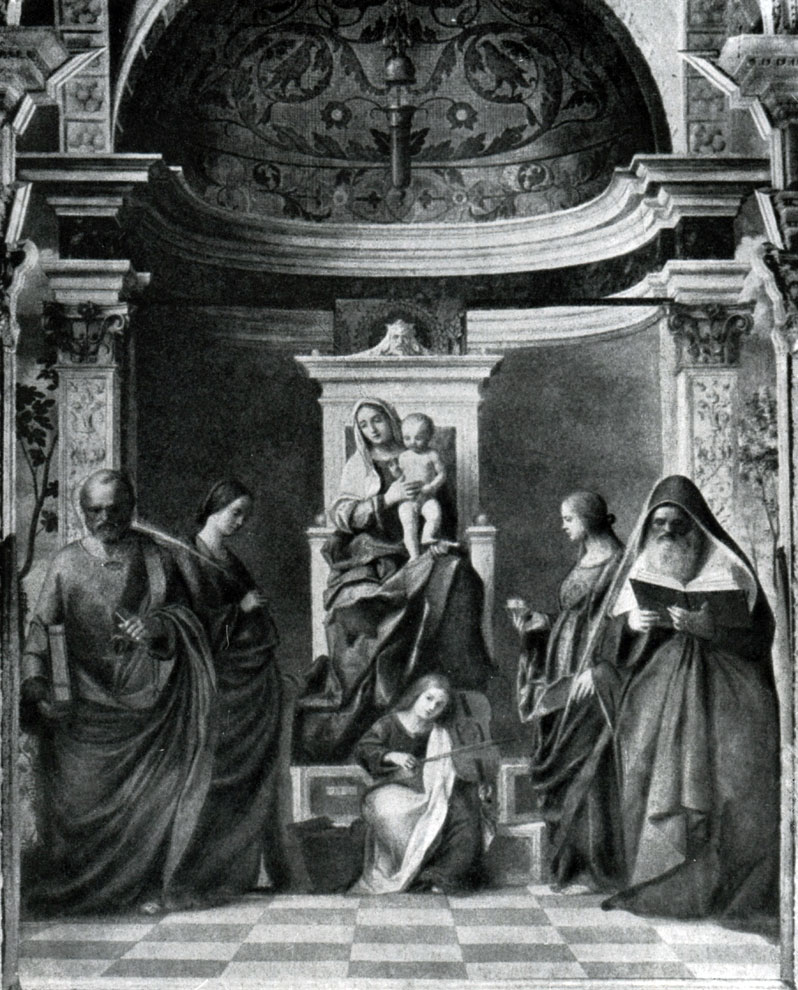
In the "Madonna with Saints" from the Church of San Zaccaria in Venice (1505), written almost simultaneously with the "Madonna of Castelfranco" by Giorgione, the old master created a work remarkable for the classical balance of the composition, the masterful arrangement of the few majestic heroes immersed in deep thought. Perhaps the image of the Madonna herself does not reach the same significance as in the Madonna of St. Job. But the gentle poetry of the youth playing the viol at Mary's feet, the stern gravity and at the same time the softness of the facial expression of the gray-bearded old man immersed in reading, are really beautiful and full of high ethical significance. The restrained depth of the transfer of feelings, the perfect balance between the generalized sublimity and the concrete vitality of the image, the noble harmony of color found their expression in his Berlin Lamentation.

Fig. pp. 248-249
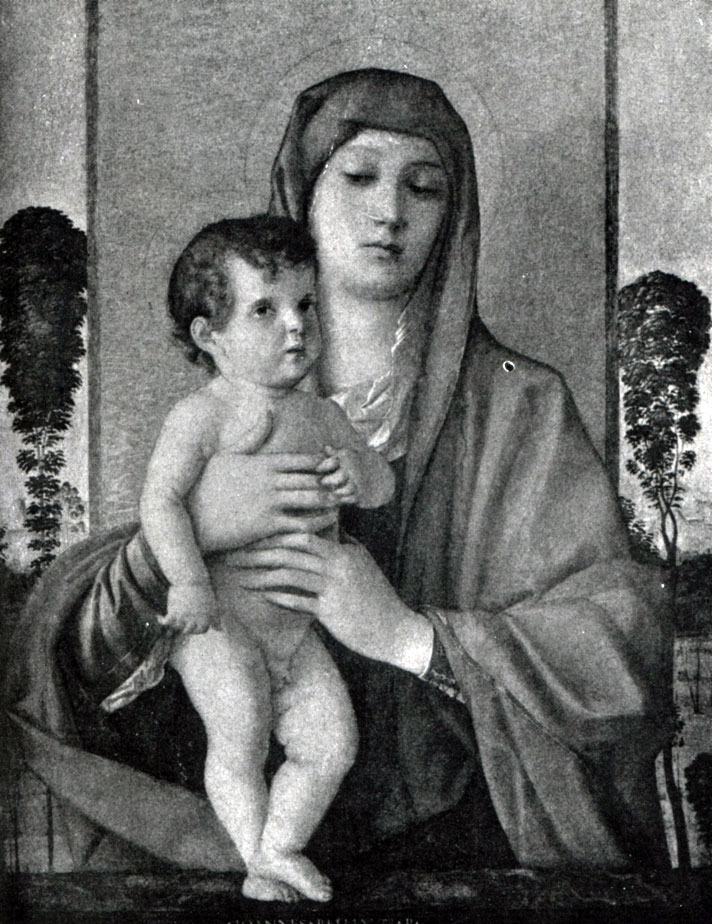
Calmness, clear spirituality are characteristic of all the best works of Bellini's mature period. Such are his numerous Madonnas: for example, “Madonna with Trees” (1490s; Venice Academy) or “Madonna in the Meadows” (c. 1590; London, National Gallery), striking with the plein air luminosity of painting. The landscape not only faithfully conveys the appearance of the nature of the terra farm - wide plains, soft hills, distant blue mountains, but reveals in terms of gentle elegy the poetry of the labors and days of rural life: a shepherd resting by his flocks, a heron descending near a swamp, a woman stopping at the well crane. In this cool spring landscape, so consonant with the quiet tenderness of Mary, reverently Bent over the baby who fell asleep on her knees, that special unity, the inner consonance of the breath of the life of nature and the spiritual life of man, which is so characteristic of the Venetian painting of the High Renaissance, has already been achieved. It is impossible not to notice in passing that in the interpretation of the image of the Madonna herself, which has a somewhat genre character, Bellini's interest in the pictorial experience of the masters is noticeable. Northern Renaissance.
A significant, although not leading place in the work of the late Bellini is occupied by those compositions usually associated with some poetic work or religious legend, which the Venetians were fond of.
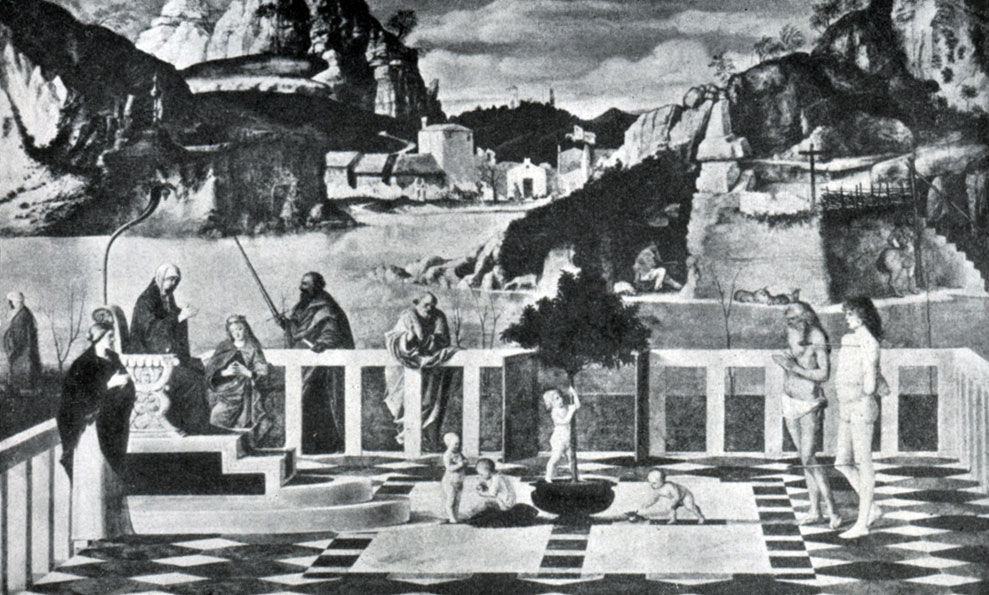
This is inspired by a French poem of the 14th century. the so-called "Lake Madonna" (Uffizi). Against the backdrop of calmly majestic and somewhat severe mountains, rising above the motionless deep grayish-blue waters of the lake, the figures of saints located on the marble open terrace act in silvery soft lighting. In the center of the terrace is an orange tree in a tub, with several naked babies playing around it. To the left of them, leaning against the marble of the balustrade, stands the venerable old man, the apostle Peter, deeply thoughtful. Next to him, raising his sword, stands a black-bearded man dressed in a crimson-red mantle, apparently the Apostle Paul. What are they thinking? Why and where are the elder Jerome, dark bronze from sunburn, and the thoughtful naked Sebastian slowly walking? Who is this slender Venetian with ashy hair, wrapped in a black scarf? Why did this solemnly enthroned woman, perhaps Mary, fold her hands in prayer? Everything seems mysteriously obscure, although it is more than likely that the contemporary of the master, a refined connoisseur of poetry and a connoisseur of the language of symbols, the allegorical plot meaning of the composition was clear enough. And yet, the main aesthetic charm of the picture is not in the ingenious symbolic story, not in the elegance of the rebus decoding, but in the poetic transformation of feelings, the subtle spirituality of the whole, the elegantly expressive juxtaposition of motives that vary the same theme - the noble beauty of the human image. If Bellini's Madonna of the Lake to some extent anticipates the intellectual refinement of Giorgione's poetry, then his Feast of the Gods (1514; Washington, National Gallery), which is distinguished by a wonderful cheerful pagan conception of the world, rather anticipates the heroic optimism of "poetry" and mythological compositions. young Titian.
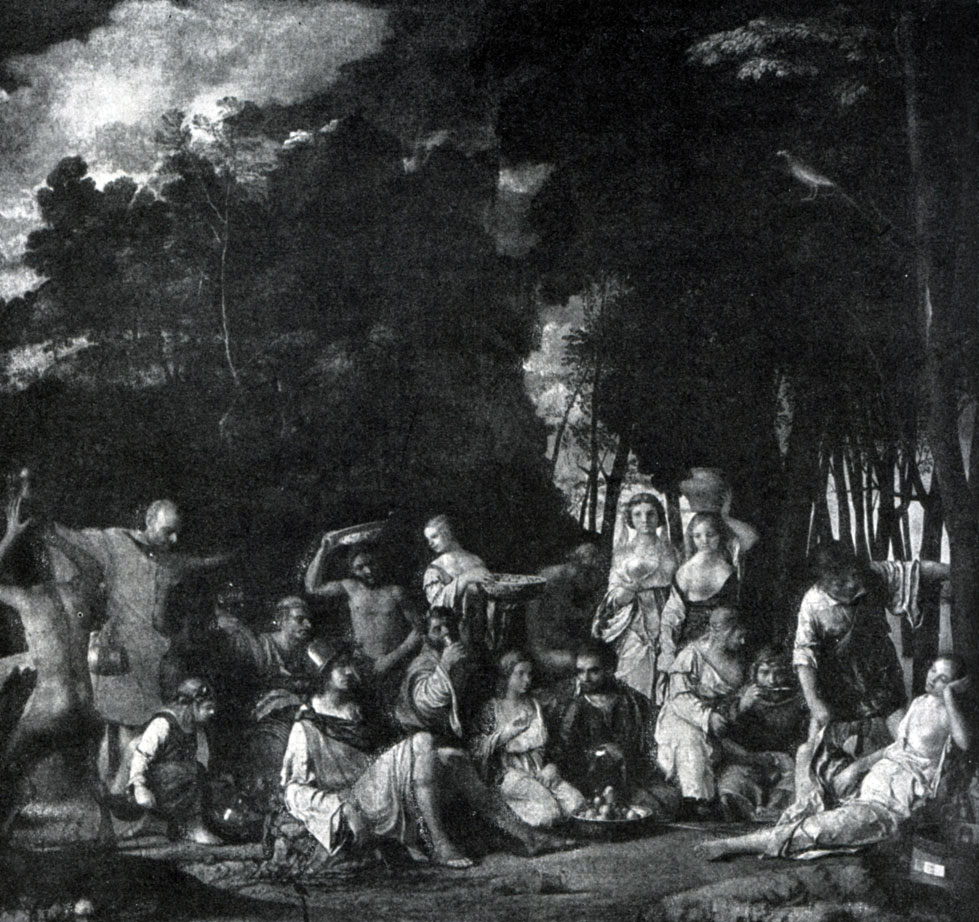
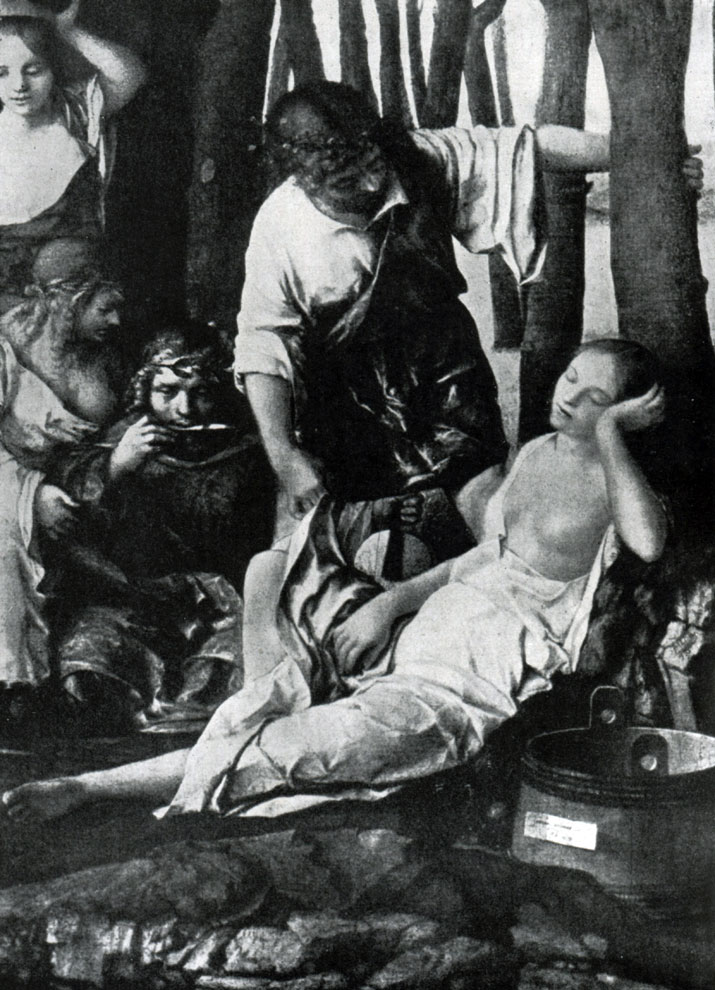
Giovanni Bellini also addressed the portrait. His relatively few portraits, as it were, prepare the flowering of this genre in Venetian painting of the 16th century. Such is his portrait of a boy, an elegant dreamy youth. In this portrait, that image of a beautiful person, full of spiritual nobility and natural poetry, is already being born, which will be fully revealed in the works of Giorgione and the young Titian. "Boy" Bellini - This is the childhood of the young "Brocardo" Giorgione.
Bellini's late work is characterized by a wonderful portrait of the Doge (before 1507), which is distinguished by sonorously shining color, excellent modeling of volumes, accurate and expressive transmission of all the individual originality of the character of this old man, full of courageous energy and intense intellectual life.
In general, the art of Giovanni Bellini - one of the greatest masters of the Italian Renaissance - refutes the once widespread opinion about the supposedly predominantly decorative and purely "painterly" nature of the Venetian school. Indeed, in the further development of the Venetian school, the narrative and outwardly dramatic aspects of the plot will not occupy a leading place for some time. But the problems of the richness of the inner world of a person, the ethical significance of a physically beautiful and spiritually rich human personality, conveyed more emotionally, sensually concretely than in the art of Tuscany, will always occupy an important place in the creative activity of the masters of the Venetian school.
One of the masters of the turn of the 15th and 16th centuries, whose work was formed under the decisive influence of Giovanni Bellini, was Giambattista Cima da Conegliano (c. 1459-1517/18). In Venice he worked between 1492-1516. Cima owns large altarpieces in which, following Bellini, he skillfully combined figures with architectural frames, often placing them in an arched opening (“John the Baptist with four saints” in the church of Santa Maria del Orto in Venice, 1490s, “ Unbelief of Thomas"; Venice, Academy, "St. Peter the Martyr", 1504; Milan, Brera). These compositions are distinguished by a free, spacious placement of figures, which allows the artist to widely show the landscape background unfolding behind them. For landscape motifs Cima usually used the landscapes of his native Conegliano, with castles on high hills reached by steep winding roads, with isolated trees and a light blue sky with light clouds. Not reaching the artistic height of Giovanni Bellini, Cima, however, like him, combined in his best works a clear drawing, plastic completeness in the interpretation of figures with rich color, slightly touched by a single golden tone. Cima was also the author of the lyrical images of Madonnas characteristic of the Venetians, and in his remarkable Introduction to the Temple (Dresden, Picture Gallery) he gave an example of a lyric-narrative interpretation of the theme with a subtle outline of individual everyday motifs.
The next stage after the art of Giovanni Bellini was the work of Giorgione, the first master of the Venetian school, wholly owned by the High Renaissance. George Barbarelli of Castelfranco (1477/78-1510), nicknamed Giorgione, was a junior contemporary and student of Giovanni Bellini. Giorgione, like Leonardo da Vinci, reveals the refined harmony of a spiritually rich and physically perfect person. Just like Leonardo, Giorgione's work is distinguished by deep intellectualism and, it would seem, crystalline rationality. But, unlike Leonardo, whose deep lyricism of art is very hidden and, as it were, subordinated to the pathos of rational intellectualism, the lyrical principle, in its clear agreement with the rational principle, in Giorgione makes itself felt with extraordinary force. At the same time, nature, the natural environment in the art of Giorgione begins to play an increasingly important role.
If we still cannot say that Giorgione depicts a single air environment that connects the figures and objects of the landscape into a single plein-air whole, then we, in any case, have the right to assert that the figurative emotional atmosphere in which both the characters and nature live in Giorgione is the atmosphere is already optically common both for the background and for the characters in the picture.
Few works of both Giorgione himself and his circle have survived to our time. A number of attributions are controversial. However, it should be noted that the first complete exhibition of works by Giorgione and the Giorgionescos, held in Venice in 1958, made it possible not only to make a number of clarifications in the circle of the master’s works, but also to attribute to Giorgione a number of previously controversial works, helped to more fully and clearly present the character his work as a whole.
Relatively early works by Giorgione, completed before 1505, include his Adoration of the Shepherds in the Washington Museum and Adoration of the Magi in the National Gallery in London. In The Adoration of the Magi (London), with the well-known fragmentation of the drawing and the insurmountable rigidity of the color, the master’s interest in conveying the inner spiritual world of the characters is already felt.
The initial period of creativity Giorgione completes his wonderful composition "Madonna da Castelfranco" (c. 1505; Castelfranco, Cathedral). In his early works and the first works of the mature period, Giorgione is directly connected with that monumental heroizing line, which, along with the genre-narrative line, passed through all the art of the Quattrocento and on the achievements of which the masters of the generalizing monumental style of the High Renaissance relied in the first place. So, in the "Madonna of Castelfranco" the figures are arranged according to the traditional compositional scheme adopted for this theme by a number of masters of the Northern Italian Renaissance. Mary sits on a high plinth; to the right and left of her, St. Francis and the local saint of the city of Castelfranco Liberale stand before the viewer. Each figure, occupying a certain place in a strictly built and monumental, clearly readable composition, is nevertheless closed in itself. The composition as a whole is somewhat solemnly motionless. II, at the same time, the relaxed arrangement of the figures in a spacious composition, the soft spirituality of their quiet movements, the poetic image of Mary herself create in the picture that atmosphere of a somewhat mysterious pensive dreaminess that is so characteristic of the art of a mature Giorgione, who avoids the embodiment of sharp dramatic collisions.
From 1505, the period of the artist's creative maturity began, soon interrupted by his fatal illness. During this short five years, his main masterpieces were created: "Judith", "Thunderstorm", "Sleeping Venus", "Concert" and most of the few portraits. It is in these works that the mastery of the specific pictorial and figuratively expressive possibilities of oil painting, characteristic of the great masters of the Venetian school, is revealed. Indeed, a characteristic feature of the Venetian school is the predominant development of oil painting and the weak development of fresco painting.
In the transition from the medieval system to the Renaissance realistic painting, the Venetians, of course, almost completely abandoned mosaics, the increased brilliant and decorative color of which could no longer fully meet the new artistic tasks. True, the increased light radiance of the iridescent shimmering mosaic painting, although transformed, indirectly, but influenced the Renaissance painting of Venice, which always gravitated towards sonorous clarity and radiant richness of color. But the mosaic technique itself, with rare exceptions, should have become a thing of the past. The further development of monumental painting had to go either in the form of fresco, wall painting, or on the basis of the development of tempera and oil painting.
The fresco in the humid Venetian climate very early revealed its instability. Thus, the frescoes of the German Compound (1508), executed by Giorgione with the participation of the young Titian, were almost completely destroyed. Only a few half-faded fragments, spoiled by dampness, have survived, among them the figure of a naked woman, full of almost Praxitele charm, made by Giorgione. Therefore, the place of wall painting in proper sense this word was occupied by a wall panel on canvas, designed for a specific room and performed using the technique of oil painting.
Oil painting received a particularly wide and rich development in Venice, not only because it was the most convenient painting technique for replacing frescoes, but also because the desire to convey the image of a person in close connection with his natural environment, interest in the realistic embodiment of tonal and the coloristic richness of the visible world could be revealed with particular fullness and flexibility precisely in the technique of oil painting. In this regard, tempera painting on boards for easel compositions, precious with its large color strength, clearly shining sonority, but more decorative in nature, inevitably had to give way to oil, which more flexibly conveys the light-color and spatial shades of the environment, molding the form more softly and sonorously. human body. For Giorgione, who worked relatively little in the field of large monumental compositions, these possibilities, inherent in oil painting, were especially valuable.
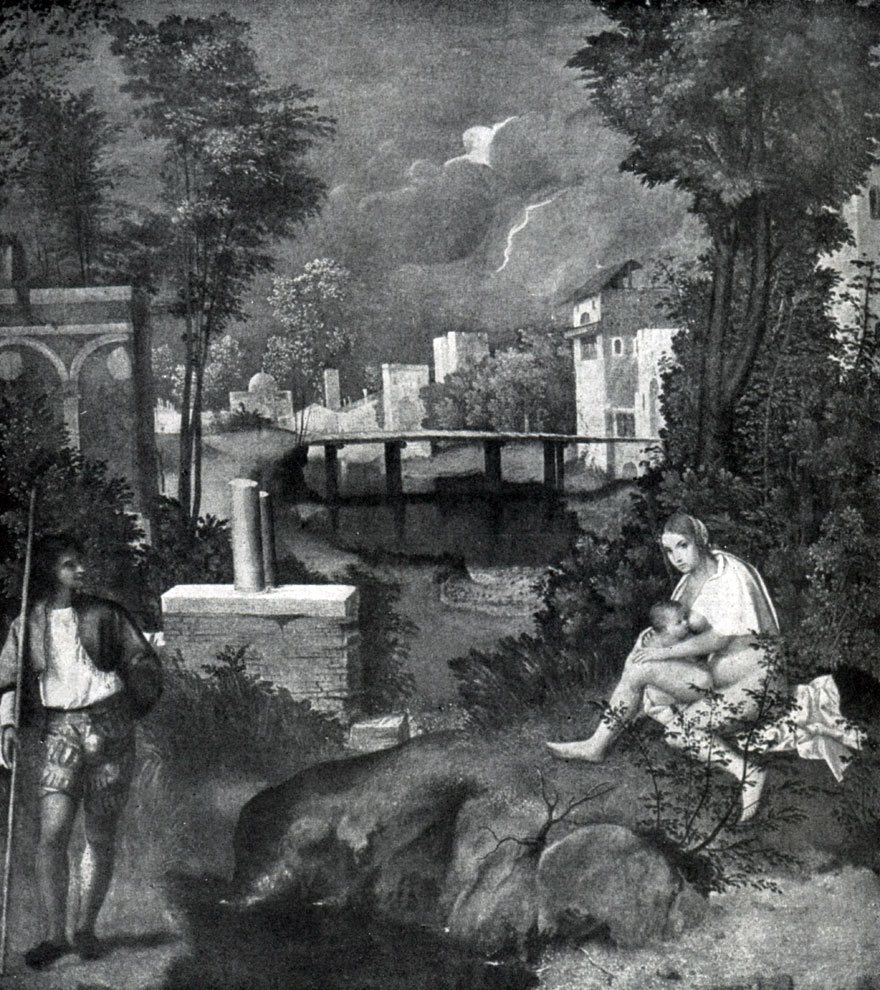
One of the most mysterious in its plot sense of the works of Giorgione of this period is The Thunderstorm (Venice Academy).
It is difficult for us to say on what specific plot "Thunderstorm" is written.
But no matter how vague the external plot meaning for us, which, apparently, neither the master himself, nor the refined connoisseurs and connoisseurs of his art of that time, did not attach decisive importance, we clearly feel the artist’s desire through a kind of contrasting juxtaposition of images to reproduce a certain special state of mind. , with all the versatility and complexity of sensations, characterized by the integrity of the general mood. Perhaps this one of the first works of a mature master is still excessively complicated and outwardly intricate compared to his later works. And yet, all the characteristic features of the mature style of Giorgione in it quite clearly assert themselves.
The figures are already located in the landscape environment itself, although still within the foreground. The diversity of nature's life is shown amazingly subtly: flashing lightning from heavy clouds; the ash-silver walls of buildings in a distant city; a bridge spanning a river; waters, sometimes deep and motionless, sometimes flowing; winding road; sometimes gracefully fragile, sometimes lush trees and bushes, and closer to the foreground - fragments of columns. Into this strange landscape, fantastic in its combinations, and so truthful in details and general mood, a mysterious figure of a naked woman with a scarf thrown over her shoulders, feeding a child, and a young shepherd are inscribed. All these heterogeneous elements form a peculiar, somewhat mysterious whole. The softness of the chords, the muffled sonority of the colors, as if enveloped in the semi-twilight air characteristic of pre-storm lighting, create a certain pictorial unity, within which rich correlations and gradations of tones develop. The orange-red robe of the young man, his shimmering greenish-white shirt, the gentle bluish tone of the woman’s white cape, the bronze oliveness of the greenery of the trees, now dark green in deep pools, now the river water shimmering in the rapids, the heavy lead-blue tone of the clouds - everything is shrouded , united at the same time by a very vital and fabulously mysterious light.
It is difficult for us to explain in words why these so opposite figures are here somehow incomprehensibly united by a sudden echo of distant thunder and a flashing snake of lightning, illuminating with a ghostly light the nature warily hushed in anticipation. "Thunderstorm" deeply poetically conveys the restrained excitement of the human soul, awakened from its dreams by the echoes of distant thunder.
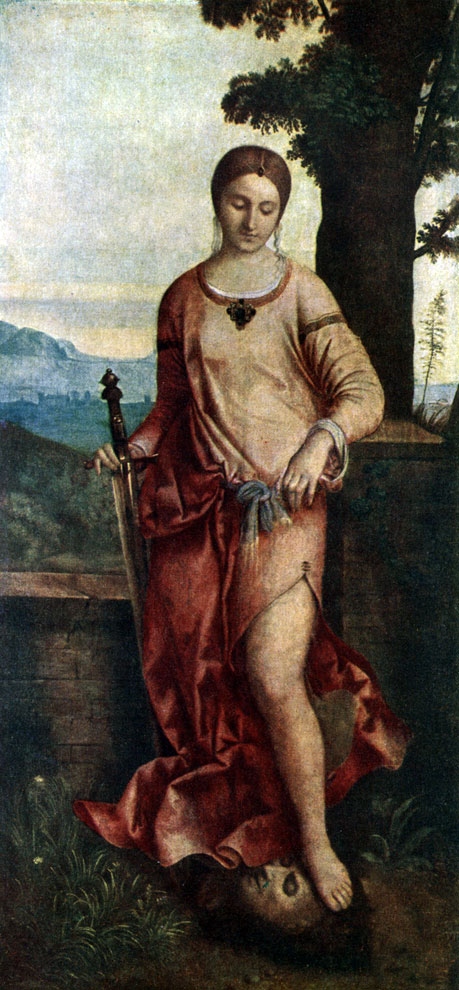
Fig. pp. 256-257
This feeling of the mysterious complexity of the inner spiritual world of a person, hidden behind the apparent clear transparent beauty of his noble external appearance, finds expression in the famous "Judith" (before 1504; Leningrad, the Hermitage). "Judith" is formally a composition on a biblical theme. Moreover, unlike the paintings of many Quattrocentists, it is a composition on a theme, and not its illustration. It is characteristic that the master depicts not some culminating moment from the point of view of the development of the event, as the Quattrocento masters usually did (Judith strikes the drunken Holofernes with a sword or carries his severed head with a maid).
Against the backdrop of a calm pre-sunset clear landscape under the shade of an oak tree, slender Judith stands thoughtfully leaning on the balustrade. The smooth tenderness of her figure is set off in contrast by the massive trunk of a mighty tree. Softly scarlet clothes are permeated with a restlessly broken rhythm of folds, as if by a distant echo of a passing whirlwind. In her hand she holds a large double-edged sword rested with a sharp end on the ground, the cold shine and straightness of which contrastly emphasizes the flexibility of a half-naked leg trampling Holofernes' head. An imperceptible half-smile glides across Judith's face. This composition, it would seem, conveys all the charm of the image of a young woman, coldly beautiful and clear, which is echoed, like a kind of musical accompaniment, by the soft clarity of peaceful nature. At the same time, the cold cutting edge of the sword, the unexpected cruelty of the motif - a tender naked foot trampling on a dead head - brings a feeling of some kind of vague anxiety and anxiety into this seemingly harmonious, almost idyllic in mood picture.
On the whole, of course, the clear and calm purity of the dreamy mood remains the dominant motive. However, the very bliss of the image and the mysterious cruelty of the motive of the sword and the trampled head, the almost rebus complexity of this dual mood leave the modern viewer in some confusion. But Giorgione's contemporaries, apparently, were less struck by the cruelty of the contrast (Renaissance humanism was never overly sensitive), rather than attracted by that subtle transmission of echoes of distant storms and dramatic conflicts, against which the acquisition of refined harmony, the happy state of a dreamily dreaming beautiful human soul.
It is typical for Giorgione that in the image of a person he is interested not so much in the unique strength and brightness of an individually expressed character, but in a certain subtly complex and at the same time harmoniously integral ideal of a perfect person, or, more precisely, the ideal of that spiritual state in which a person resides. Therefore, in his compositions, that portrait specificity of characters is almost absent, which, with some exceptions (for example, Michelangelo), is present in the monumental compositions of most masters of the Italian Renaissance. Moreover, Giorgione's compositions themselves can only be called monumental to a certain extent. As a rule, they are small in size. They are not addressed to large crowds of people. The refined muse of Giorgione - This is the art that most directly expresses the aesthetic and moral world of the humanistic elite of Venetian society. These are paintings designed for long-term calm contemplation by an art connoisseur with a subtle and complexly developed inner spiritual world. This is the specific charm of the master, but also his certain limitations.
In literature, there is often an attempt to reduce the meaning of Giorgione's art to the expression of the ideals of only this small humanistically enlightened patrician elite of Venice of that time. However, this is not entirely true, or rather, not only so. The objective content of Giorgione's art is immeasurably broader and more universal than the narrow social stratum with which his work is directly connected. The feeling of the refined nobility of the human soul, the desire for the ideal perfection of the beautiful image of a person living in harmony with environment, with the outside world, had a great general progressive significance for the development of culture.
As mentioned, interest in portrait sharpness is not characteristic of Giorgione's work. This does not mean at all that his characters, like the images of classical ancient art, are devoid of any concrete originality. This is not true. His magi in the early Adoration of the Magi and the philosophers in The Three Philosophers (c. 1508) differ from each other not only in age, but also in their personal appearance. Nevertheless, philosophers, with all the individual differences in images, are first of all perceived not so much as unique, bright, portrait-characterized individuals, or even more so as an image of three ages (a young man, a mature husband and an old man), but as the embodiment of various sides, various facets of the human spirit.
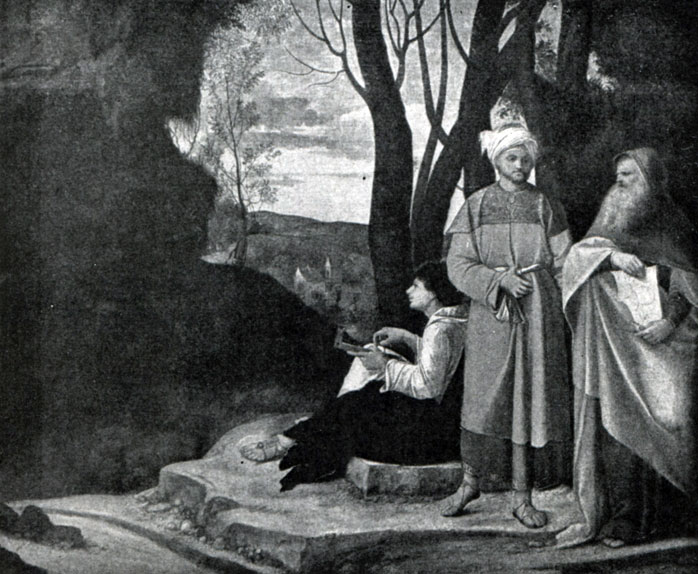
Giorgione's portraits are a kind of synthesis of the ideal and living concrete person. One of the most characteristic is his remarkable portrait by Antonio Brocardo (c. 1508-1510; Budapest, Museum). In it, of course, the individual portrait features of a noble young man are accurately and clearly conveyed, but they are clearly softened, subordinated to the image of a perfect person.

at ease free movement the hands of a young man, the energy felt in a body half-hidden under loose-wide robes, the noble beauty of a pale swarthy face, a head bowed on a strong and slender neck, the beauty of the contour of an elastically defined mouth, the pensive dreaminess of a gaze looking far and away from the viewer - all this creates a complete of noble power, the image of a man engulfed in a deep, clear-calm thought. The soft curve of the bay with still waters, the silent mountainous coast with solemnly calm buildings form a landscape background, which, as always with Giorgione, does not unisonly repeat the rhythm and mood of the main figure, but, as it were, indirectly consonant with this mood.
The softness of the cut-off sculpting of the face and hands is somewhat reminiscent of Leonardo's sfumato. Leonardo and Giorgione simultaneously solved the problem of combining the plastically clear architectonics of the forms of the human body with their softened modeling, which makes it possible to convey the richness of its plastic and chiaroscuro shades - so to speak, the very “breathing” of the human body. If in Leonardo it is rather gradations of light and dark, the finest shading of the form, then in Giorgione sfumato has a special character - it is, as it were, a micro-modeling of the volumes of the human body with that wide stream of soft light that floods the entire space of the paintings. Therefore, Giorgione's sfumato also conveys that interaction of color and light, which is so characteristic of Venetian painting of the 16th century. If his so-called portrait of Laura (c. 1505-1506; Vienna) is somewhat prosaic, then his other female images are, in essence, the embodiment of ideal beauty.
Giorgione's portraits begin a remarkable line of development of the Venetian, in particular Titian, portrait of the High Renaissance. The features of the Giorgione portrait will be further developed by Titian, who, however, unlike Giorgione, has a much sharper and stronger sense of the individual uniqueness of the depicted human character, a more dynamic perception of the world.
Giorgione's work ends with two works - his "Sleeping Venus" (c. 1508-1510; Dresden) and the Louvre "Concert". These paintings remained unfinished, and the landscape background in them was completed by Giorgione's younger friend and student, the great Titian. "Sleeping Venus", in addition, has lost some of its pictorial qualities due to a number of damages and unsuccessful restorations. But be that as it may, it was in this work that the ideal of the unity of the physical and spiritual beauty of man was revealed with great humanistic fullness and almost ancient clarity.
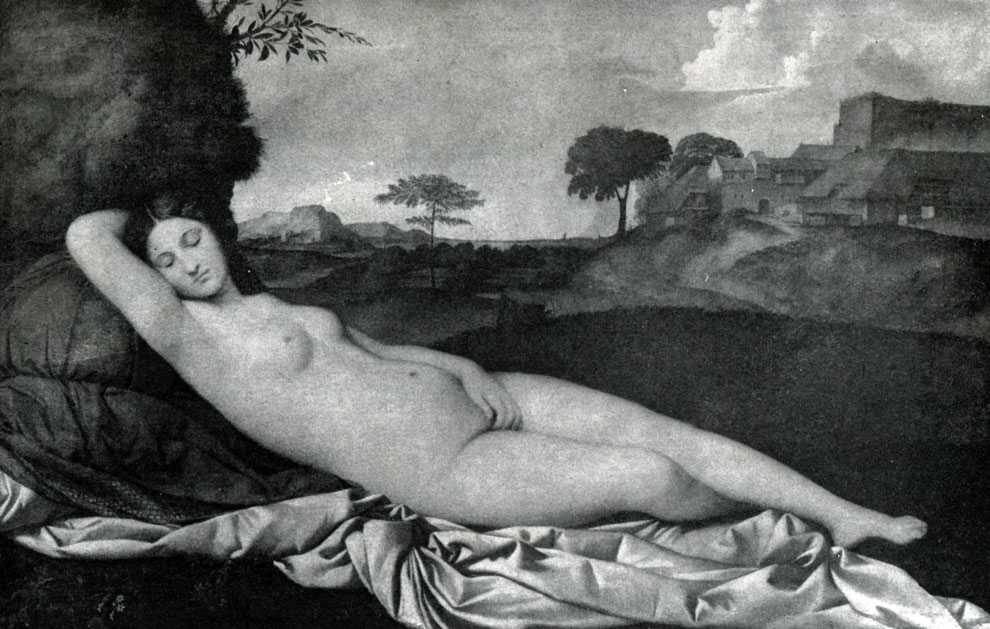
Immersed in a calm slumber, naked Venus is depicted against the backdrop of a rural landscape, the calm gentle rhythm of the hills is in such harmony with her image. The cloudy atmosphere softens all contours and at the same time preserves the plastic expressiveness of forms.
Like other creations of the High Renaissance, George's Venus is closed in its perfect beauty and, as it were, alienated both from the viewer and from the music of the surrounding nature, consonant with its beauty. It is no coincidence that she is immersed in clear dreams of a quiet sleep. The right hand thrown behind the head creates a single rhythmic curve that embraces the body and closes all forms into a single smooth contour.
A serenely light forehead, calmly arched eyebrows, gently lowered eyelids and a beautiful strict mouth create an image of transparent purity indescribable in words. Everything is full of that crystal transparency, which is achievable only when a clear, unclouded spirit lives in a perfect body.
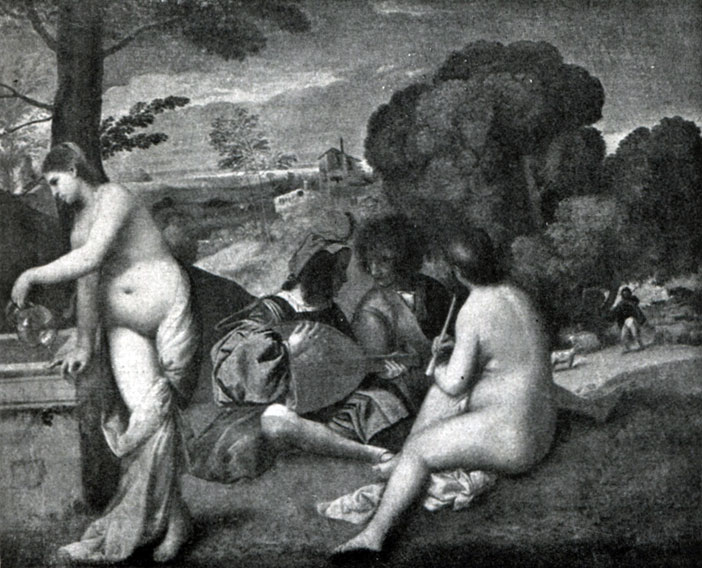
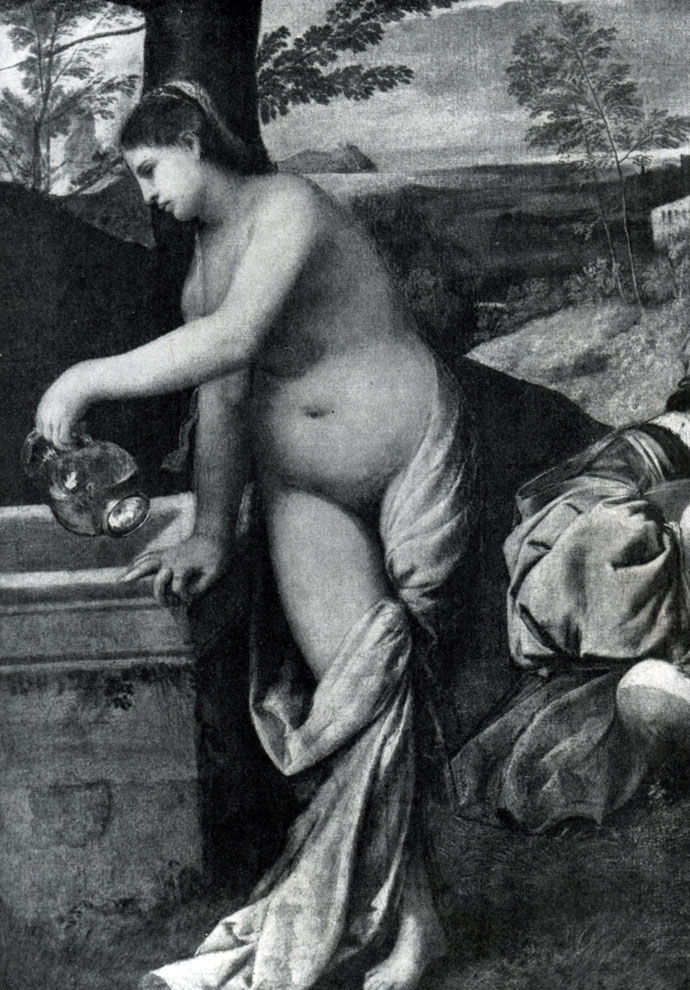
"Country Concert" (c. 1508 -1510; Louvre) depicts a group of two young men in magnificent clothes and two naked women against the backdrop of a calmly solemn landscape. The rounded crowns of trees, the calmly slow movement of moist clouds surprisingly harmonize with the free wide rhythms of the clothes and movements of young men, with the luxurious beauty of naked women. The lacquer darkened with time gave the picture a warm, almost hot golden color. In fact, her painting was originally characterized by a balanced overall tone. It was achieved by an accurate and subtle harmonic juxtaposition of restrainedly cold and moderately warm tones. It was precisely this subtle and complex, acquired through accurately captured contrasts, that the soft neutrality of the general tone not only created the unity characteristic of Giorgione between the complex differentiation of shades and the clarity of the coloristic whole, but also somewhat softened that joyfully sensual hymn to the magnificent beauty and enjoyment of life, which is embodied in this picture. .
To a greater extent than other works by Giorgione, the "Country Concert" seems to prepare the appearance of Titian. At the same time, the significance of this late work by Giorgione is not only in its, so to speak, preparatory role, but in the fact that it once again reveals the original charm of this artist’s work, which no one has repeated in the future. The sensual joy of being in Titian sounds like a bright and upbeat excited hymn to human happiness, its natural right to enjoyment. In Giorgione, the sensual joy of the motive is softened by dreamy contemplation, subordinated to a clear, enlightenedly balanced harmony of a holistic view of life.
Therefore, the coloring of this whole composition as a whole is neutral, therefore the movements of beautiful pensive women are so calmly restrained, therefore the colors of the luxurious robes of the two young men sound muffled, therefore both of them are not so much turned to contemplating the beauty of their girlfriends as immersed in the quiet world of music: they just fell silent the gentle sound of the flute, which the beauty took away from her lips; the chords of the lute strings sound gently in the hands of a young man; from afar, from under the clumps of trees, the dull sounds of a bagpipe are barely heard, on which a shepherd grazing his sheep plays. The second woman, leaning against a marble well, listens to the quiet murmur of a jet running from a transparent glass vessel. This atmosphere of soaring music, immersion in the world of its melodies give a special noble charm to this vision of a clarified and poetic sensually beautiful joy of being.
The work of Titian, like Leonardo, Raphael, Michelangelo, marks the pinnacle of the art of the High Renaissance. The works of Titian forever entered the golden fund of the artistic heritage of mankind. Realistic persuasiveness of images, humanistic faith in the happiness and beauty of a person, wide, flexible and obedient to the master's plan of painting are the characteristic features of his work.
Tiziano Vecellio of Cadore was born, according to traditional data, in 1477, died in 1576 from the plague. According to recent research, the date of birth is attributed by various researchers to 1485-1490.
Titian, like Michelangelo, lived a long life; the last decades of his work take place in the atmosphere of the late Renaissance, in the conditions of preparation in the depths of European society for the next stage of its historical development.
Italy, which during the period of the late Renaissance remained aloof from the main path of further development of capitalist relations, turned out to be historically incapable of creating a single national state, fell under the rule of foreign powers, and became the main stronghold of feudal Catholic reaction. The forces of progress in Italy continued to exist and made themselves felt in the field of culture (Campanella, Giordano Bruno), but their social base was too weak. Therefore, the consistent approval of new progressive ideas in art, the creation of a new art system realism met with particular difficulties in most areas of Italy, with the exception of Venice, which retained its freedom and partly its well-being. At the same time, the high traditions of realistic craftsmanship, the breadth of the humanistic ideals of the one and a half century development of the Renaissance determined the aesthetic perfection of this art. Under these conditions, the work of Titian of the late period is remarkable in that it provides an example of progressive realistic art, based on the processing and development of the main achievements of the High Renaissance and at the same time preparing the transition of art to the next stage of its historical development.
The freedom of Venice from the power of the pope and from the domination of foreign interventionists facilitated the solution of the tasks facing Titian. The social crisis in Venice came later than in other regions of Italy and took on different forms. II if one should not exaggerate the “freedoms” of the Venetian oligarchic republic, then nevertheless the preservation of the secular character of culture, the preservation for the time being of a certain share of economic well-being had a positive effect on the development of art, although on the whole the general growth and intensification of reaction made themselves felt in Venice.
The work of Titian until the 1540s completely connected with the artistic ideals of the High Renaissance. In the 1540-1570s, when Venice enters a period of crisis, Titian, from the standpoint of the advanced ideas of the Renaissance, displays with severe courage and sincerity the new social position of man, the new social conditions for the development of Italy. Titian resolutely protests against everything ugly and hostile to the dignity of man, against everything that the time of reaction that has come in Italy brings, hindering and delaying the further social progress of the Italian people. True, Titian did not set himself the direct task of a detailed and direct reflection and critical assessment of the social conditions of life of his time. This qualitatively new stage in the history of realism came much later and received its real development only in the art of the 19th century.
We can distinguish two main stages in the work of Titian: Titian - the master of the High Renaissance (and in the first stage, the early, "Georgionev period" - up to 1515/16 should be distinguished) and Titian - starting from about the 1540s - the master late Renaissance. In his idea of the harmonic beauty and perfection of man, Titian of the first period largely continues the traditions of his great predecessor and older contemporary, Giorgione.
In his work, the artist develops and deepens the peculiar pictorial problems characteristic of both Giorgione and the entire Venetian school. It is characterized by a gradual transition from the soft modeling of forms and the soft, restrained, cold radiance of Giorgione's colors to the powerful, light-filled coloristic symphonies of the period of creative maturity, that is, starting from 1515-1516. During these years, at the same time, Titian introduces new and very significant shades into the understanding of human beauty, into the emotional and figurative structure of the language of Venetian painting.
The heroes of Titian, perhaps, are less refined than the heroes of Giorgione, but also less mysterious, more full-blooded active, more integral, more imbued with a clear, sensual, "pagan" beginning. True, his "Concert" (Florence, Pitti Gallery), long attributed to Giorgione, is still very close in spirit to this master. But here, too, the composition is more naturally simple in its rhythms, the feeling of the sensual fullness of a clear and happy being already carries shades of something actually Titianian.
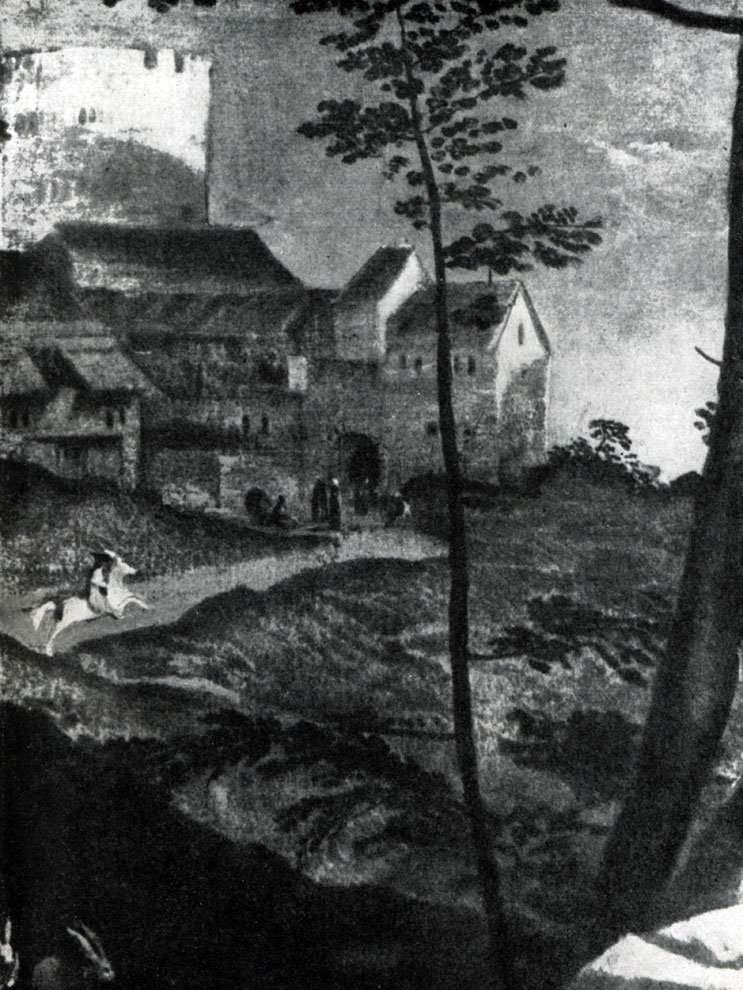
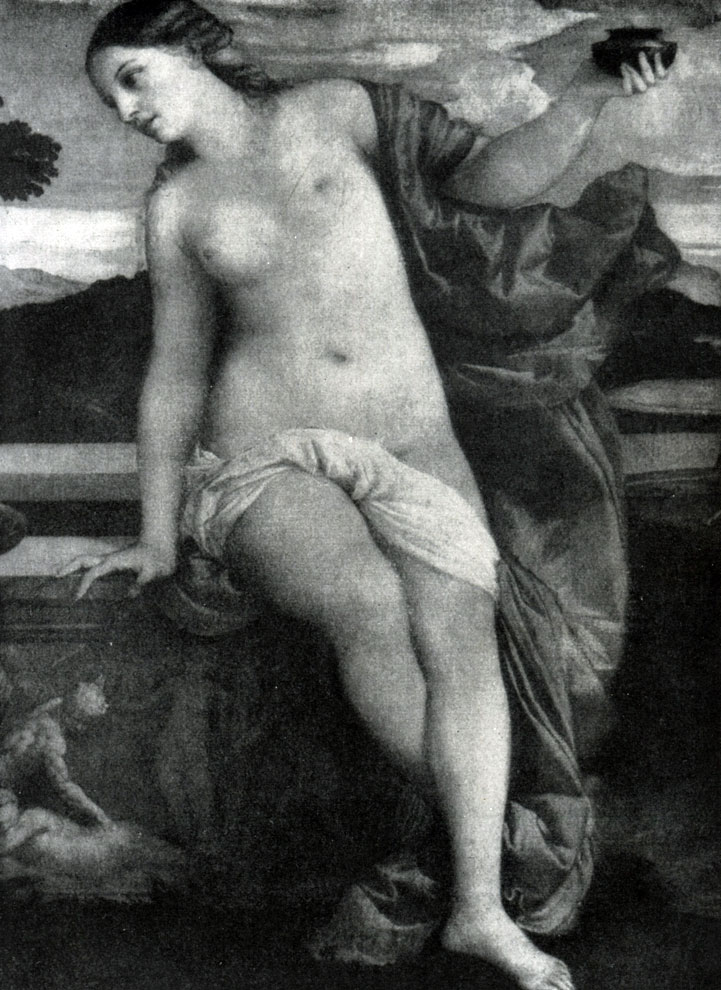
“Love on Earth and Heaven” (1510s; Rome, Galleria Borghese) is one of the first works by Titian, in which the originality of the artist is clearly revealed. The plot of the picture is still mysterious. Regardless of whether the dressed and naked women depict the meeting of Medea and Venus (an episode from the literary allegory "The Dream of Polyphemus", written in 1467) or, less likely, symbolize earthly and heavenly love - the key to understanding the content of this work lies not in storytelling. Titian's goal is to convey a certain state of mind. The soft and calm tones of the landscape, the freshness of the naked body, the clear sonority of the color of beautiful and somewhat cold clothes (the golden yellowness of the color is the result of time) create the impression of calm joy. The movements of both figures are majestically beautiful and at the same time full of vital charm. The calm rhythms of the landscape spreading behind us, as it were, set off the naturalness and nobility of the movement of beautiful human bodies.

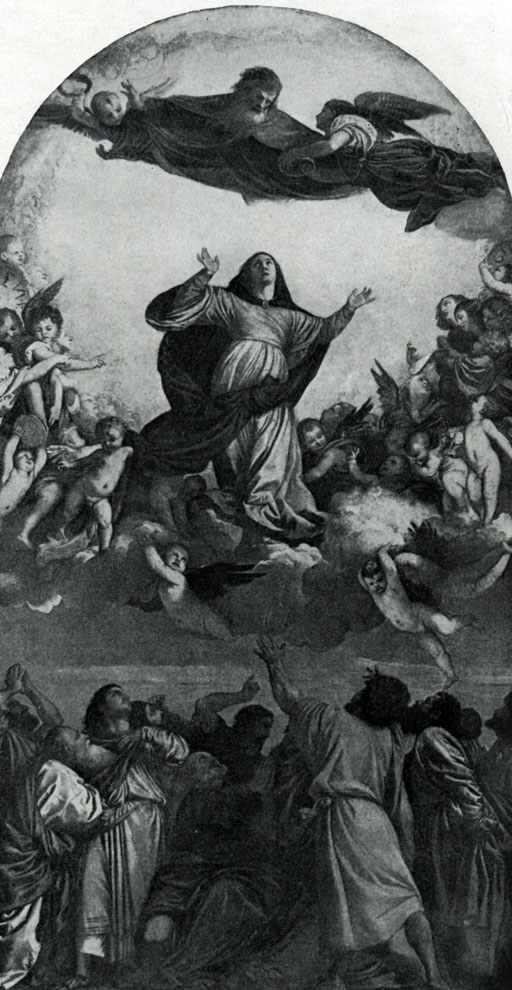
This calmness and refined contemplation is not in his "Assunta" - "Ascension of Mary" (1518; Church of Santa Maria Gloriosa dei Frari in Venice). The juxtaposition of the joyfully excited Mary, beautiful in the prime of her feminine beauty, and the apostles, strong, courageously beautiful people who turned to her with admiring glances, is permeated with a sense of extraordinary optimistic energy and vitality. Moreover, "Assunta" is distinguished by the heroically monumental nature of its entire figurative structure. The heroic optimism inherent in Titian's work after 1516-1518 seems to be connected with the general upsurge in the spiritual and social life of Venice, caused by the feeling of vitality of the city, shown during the struggle with the League of Cambrai and the subsequent war of the so-called Holy League. There is no "Georgionian silence" in his "Bacchanalia", in particular in "Bacchus and Ariadne" (1532). This picture is perceived as an agitated hymn to the beauty and strength of the human feeling asserting itself.
The composition of the picture is holistic and free from distracting secondary scenes and details. Joyfully jubilant Bacchus addresses Ariadne with a wide and free gesture. Hot colors, the beauty of swift movements, an agitated landscape, consonant with the mood, are characteristic of this picture.
The affirmation of the joy of being finds its vivid expression in Titian's Venus (c. 1538; Uffizi). It may be less sublimely noble than Giorgione's Venus, but at this price a more direct vitality of the image is achieved. A concrete, almost genre-based interpretation of the plot motif, while enhancing the immediate vitality of the impression, does not diminish the poetic charm of the image of a beautiful woman.
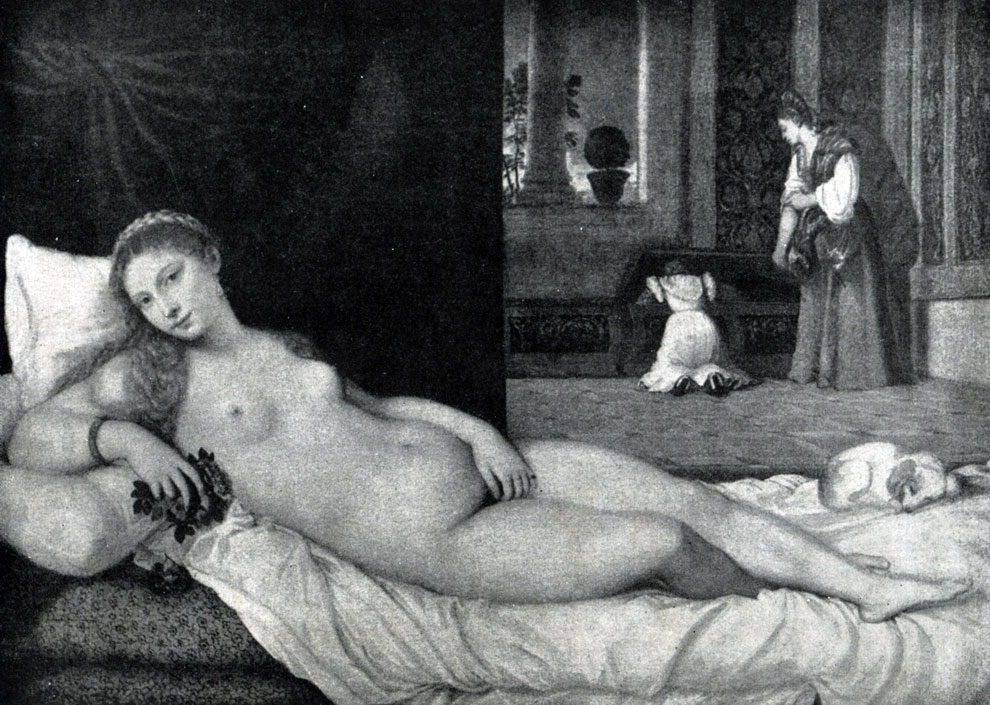
Titian's Venice was one of the centers of advanced culture and science of its time. The breadth of trade relations, the abundance of accumulated wealth, the experience of shipbuilding and navigation, the development of crafts determined the flourishing of the technical sciences, natural sciences, medicine, and mathematics. The preservation of independence and the secular nature of government, the vitality of the traditions of humanism contributed to the high flowering of philosophy and artistic culture, architecture, painting, music, and book printing. Venice became the largest publishing center in Europe. The advanced culture of Venice was characterized by the relatively independent position of the most prominent cultural figures, their high intellectual prestige.
The best representatives of the intelligentsia, forming a special social stratum, formed a closely knit circle, one of the most prominent representatives of which was Titian; close to him were Aretino, the founder of journalism, writer, publicist, "thunderstorm of tyrants", as well as Jacopo Sansovino. According to contemporaries, they formed a kind of triumvirate, which was the legislator of the cultural life of the city. Here is how an eyewitness describes one of the evenings spent by Titian with friends. Before sunset, Titian and his guests spent their time “in contemplation of the living images and most beautiful pictures with which the house was filled, in discussion of the true beauty and charm of the garden, to the great pleasure and surprise of everyone, located on the outskirts of Venice above the sea. From that place you can see the Murano Islands and other beautiful places. This part of the sea, as soon as the sun had set, was filled with thousands of gondolas, adorned with the most beautiful women and sounding in an enchanting harmony of music and songs, which accompanied our joyful supper until midnight.
It would be wrong, however, to reduce the work of Titian of this period only to the glorification of the sensual enjoyment of life. The images of Titian are free from any kind of physiology, which was generally alien to the art of the Renaissance. The best images of Titian are beautiful not only physically, but also spiritually. They are characterized by the unity of feeling and thought, the noble spirituality of the human image.
Thus, Christ in his painting depicting Christ and the Pharisee (“Denarius of Caesar”, 1515-1520; Dresden Gallery) is understood as a harmoniously perfect, but real, not at all divine person. The gesture of his hand is natural and noble. His expressive and beautiful face strikes with light spirituality.
This clear and deep spirituality is felt in the figures and the altar composition of the Pesaro Madonna (1519-1526; Church of Santa Maria Gloriosa dei Frari). In it, the master managed to endow the participants of this seemingly only ceremonial scene with a rich spiritual life, a clear balance of spiritual forces. It is characteristic that the major sonority of the color chord of the composition - Mary's radiant white veil, blue, cherry, carmine, golden tones of clothes, green carpet - does not turn the picture into an outwardly decorative spectacle that prevents the perception of the image of people. On the contrary, the pictorial gamut appears in complete harmony with the bright, colorful and expressive characters of the depicted characters. The boy's head is especially charming. With restrained liveliness, he turned his head towards the viewer, his eyes shine wet and clean, full of youthful interest and attention to life.
The themes of a dramatic nature were not alien to Titian of this period, which was natural against the backdrop of that strain of forces, in that difficult struggle that Venice had recently experienced. Obviously, the experience of this heroic struggle and the trials associated with it largely contributed to the achievement of that full courageous strength and mournful grandeur of pathos, which was embodied by Titian in his Louvre Entombment (1520s).
The beautiful and strong body of the dead Christ evokes in the viewer's imagination the idea of a courageous fighter hero who fell in battle, and not at all of a voluntary sufferer who gave his life to atone for human sins. The restrainedly hot coloring of the picture, the power of movement and the strength of feeling of strong courageous people carrying the body of the fallen, the very compactness of the composition, in which the figures brought to the fore fill the entire plane of the canvas, give the picture a heroic sound, so characteristic of the art of the High Renaissance. In this work, for all its drama, there is no feeling of hopelessness, no internal breakdown. If this is a tragedy, then, to put it modern language, is an optimistic tragedy that glorifies the strength of the human spirit, its beauty and nobility even in suffering. This distinguishes it from the full hopeless grief of the later, Madrid "Laying in the Coffin" (1559).
In the Louvre “The Entombment” and especially in the “Assassination of St. Peter the Martyr" (1528-1530), a new stage achieved by Titian in conveying the connection between the mood of nature and the experiences of the depicted heroes is noteworthy. Such are the gloomy and menacing tones of the sunset in The Entombment, the stormy whirlwind that shakes the trees in The Assassination of St. Peter”, so consonant with this explosion of merciless passions, the fury of the murderer, the despair of Peter. In these works, the state of nature is, as it were, caused by the action and passions of people. In this respect, the life of nature is subordinated to man, who still remains "master of the world." Later, in the late Titian and especially in Tintoretto, the life of nature, as the embodiment of the chaos of the elemental forces of the universe, acquires a force of existence independent of man and often hostile to him.

The composition "Introduction to the Temple" (1534-1538: Venice Academy) stands, as it were, on the verge of two periods in the work of Titian and emphasizes their internal connection. Compared to Madonna Pesaro, this is the next step in the mastery of the group scene. Bright and strong characters appear in all their definiteness and form an integral group, united by a common interest in the ongoing event.
Clear at first glance, a coherent composition is perfectly combined with a detailed narrative of the event. Titian consistently switches the attention of the audience from relatives and friends of the Maria family to a crowd of curious people, given against the backdrop of a majestic landscape, and then to the small figure of the girl Mary climbing the stairs, stopping for a moment on the steps of the temple. At the same time, the platform of the stairs on which she stands, as it were, creates a pause in the steps going up, corresponding to a pause in the movement of Mary herself. And finally, the composition ends with the majestic figures of the high priest and his companions. The whole picture is permeated with the spirit of festivity and a sense of the significance of the event. The image of an old woman selling eggs is full of vital folk juiciness, which is typical for a number of works by the artist of the 1530s, as well as the image of a maid rummaging through a chest in the painting “Venus of Urbino” (Uffizi). Thus, Titian introduces a note of immediate vitality, softening the majestic elation of his compositions.
Titian manages to most fully embody the ideal of a physically and spiritually beautiful person, given in all the vital fullness of his being, in a portrait. Such is the portrait of a young man with a torn glove (1515-1520; Louvre). In this portrait, individual similarities are perfectly conveyed, and yet the main attention of the artist is drawn not to private details in the appearance of a person, but to the general, to the most characteristic of his image. Titian, as it were, reveals through the individual originality of the personality the general typical features of a Renaissance man.
Broad shoulders, strong and expressive arms, free grace of posture, a white shirt carelessly unbuttoned at the collar, a swarthy youthful face, on which eyes stand out with their lively brilliance, create an image full of freshness and charm of youth. The character is conveyed with all vital immediacy, but it is in these features that the main qualities and all the unique harmony of a happy person and who does not know painful doubts and internal discord are revealed.
This period also includes his full of somewhat cold elegance "Violanta" (Vienna), as well as the portrait of Tommaso Mosti (Pitti), surprising with the picturesque freedom of characterization and nobility of the image.
But if in the portraits Titian with exceptional completeness conveyed the image of a Renaissance man full of strong-willed energy and conscious intelligence, capable of heroic activity, then it was in the portrait of Titian that those new conditions of human life that are characteristic of the late Renaissance found their deep reflection.
The portrait of Ippolito Riminaldi (Florence, Pitti Gallery) gives us the opportunity to catch the profound changes that are outlined in the 1540s. in Titian's work. On Riminaldi's lean face, bordered by a soft beard, the struggle with the intricate contradictions of reality left its mark. This image resonates to some extent with the image of Shakespeare's Hamlet.
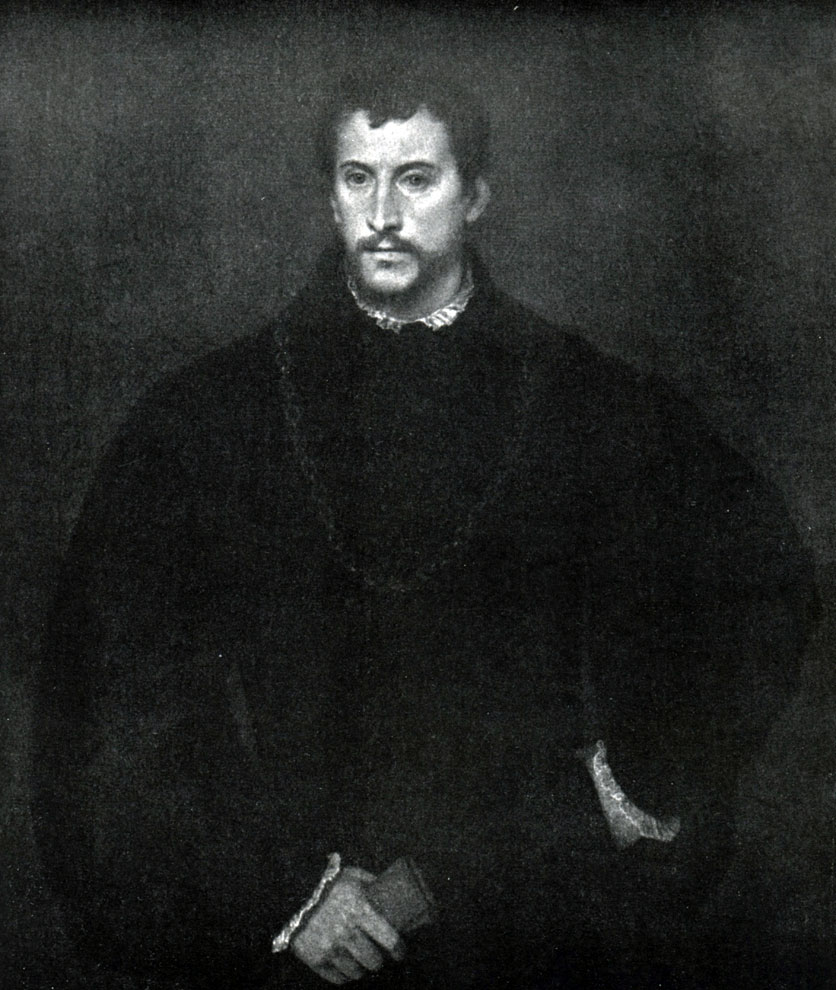
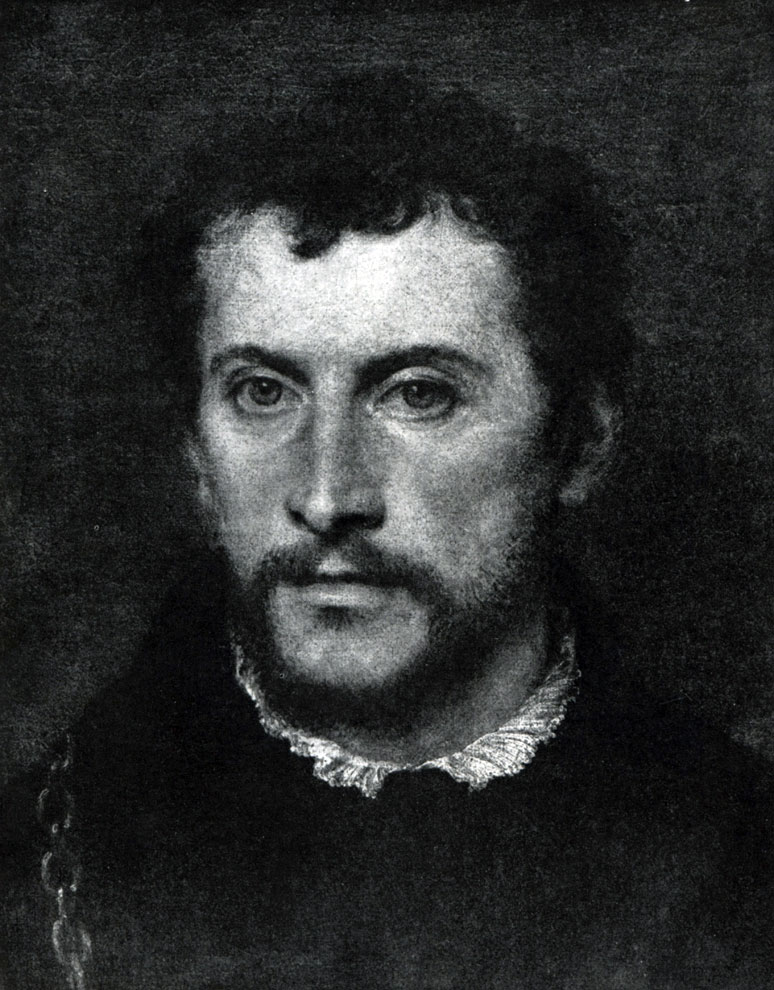
Titian's portraits, created during the late Renaissance - starting from the 1540s, amaze precisely with the complexity of the characters, the intensity of passion. The people he represented came out of a state of closed balance or a simple and integral impulse of passion, characteristic of the images of the classical Renaissance. The depiction of complex and contradictory images, characters, often strong, but often ugly, typical of this new era, is Titian's contribution to portraiture.
Now Titian creates images that are not typical of the High Renaissance. Such is his Paul III (1543; Naples), outwardly reminiscent of the composition of the portrait of Julius II Raphael. But this similarity only emphasizes the profound difference in the images. The head of Julius is depicted with a certain objective calmness; it is characteristic and expressive, but in the portrait itself, first of all, the main features of his character that are constantly characteristic of this person are conveyed.
Concentrated-thoughtful strong-willed face correspond calmly, authoritatively lying on the arms of the chair hands. Pavel's hands are feverishly nervous, the folds of the cape are full of movement. Slightly sinking his head into his shoulders, with an senile sagging predatory jaw, he looks at us from the portrait with wary cunning eyes.
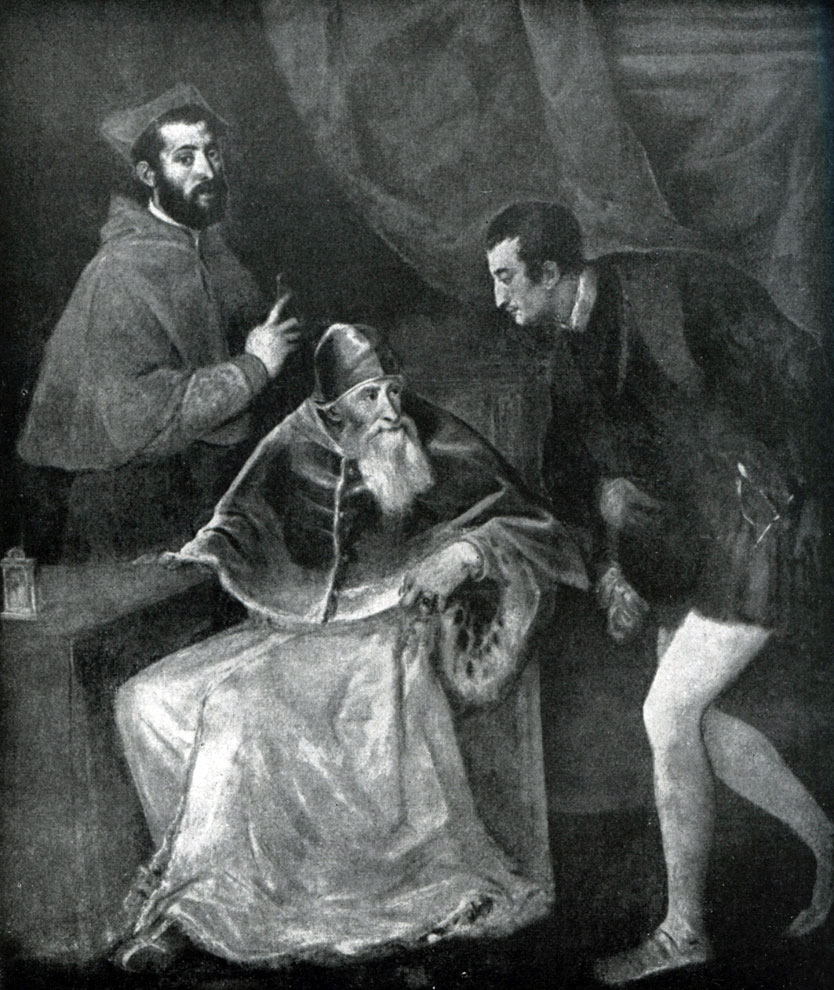
Titian's images of these years are contradictory and dramatic by their very nature. The characters are conveyed with Shakespearean power. This affinity for Shakespeare is especially acute in the group portrait depicting Paul with his great-nephews Ottavio and Alessandro Farnese (1545-1546; Naples, Capodimonte Museum). The restless watchfulness of the old man, looking angrily and incredulously at Ottavio, the representative banality of Alessandro's appearance, the groveling flattery of the young Ottavio, in his own way bold, but cold and cruel hypocrite, create a scene that is striking in its drama. Only a person brought up by Renaissance realism could not be afraid to show so mercilessly truthfully all the peculiar strength and energy of these people and at the same time reveal the essence of their characters. Their cruel egoism, immoral individualism are revealed with severe precision by the master through their comparison and collision. It was the interest in revealing characters through their comparison, in reflecting the complex inconsistency of relationships between people that prompted Titian - in fact, for the first time - to turn to the genre of group portrait, which was widely developed in the art of the 17th century.
The value of the realistic portrait heritage of the late Titian, his role in the preservation and further development of the principles of realism is especially evident when comparing Titian's portraits with his contemporary portrait of the Mannerists. Indeed, the portrait of Titian strongly opposes the principles of portraiture by artists such as Parmigianino or Bronzino.
In the masters of mannerism, the portrait is imbued with a subjectivist mood, mannered stylization. The image of a person is given by them either in a frozen stillness and some kind of cold alienation from other people, or in terms of a nervously pointed, superficially artistic characterization. In both cases, the truthful disclosure of a person's character, his spiritual world, in essence, is relegated to the background. The portraits of Titian are just remarkable in that they continue and deepen the realistic line of the Renaissance portrait.
This is especially clearly seen in the portrait of Charles V sitting in an armchair (1548, Munich). This portrait is by no means a forerunner of the ceremonial official Baroque portrait. It amazes with the merciless realism with which the artist analyzes the inner world of a person, his properties as a person and as a statesman. In this he resembles the best portraits of Velasquez. The colorful power of the characterization of this complex, cruel, hypocritically cunning and at the same time strong-willed and intelligent person is distinguished by plastic integrity and picturesque brightness.
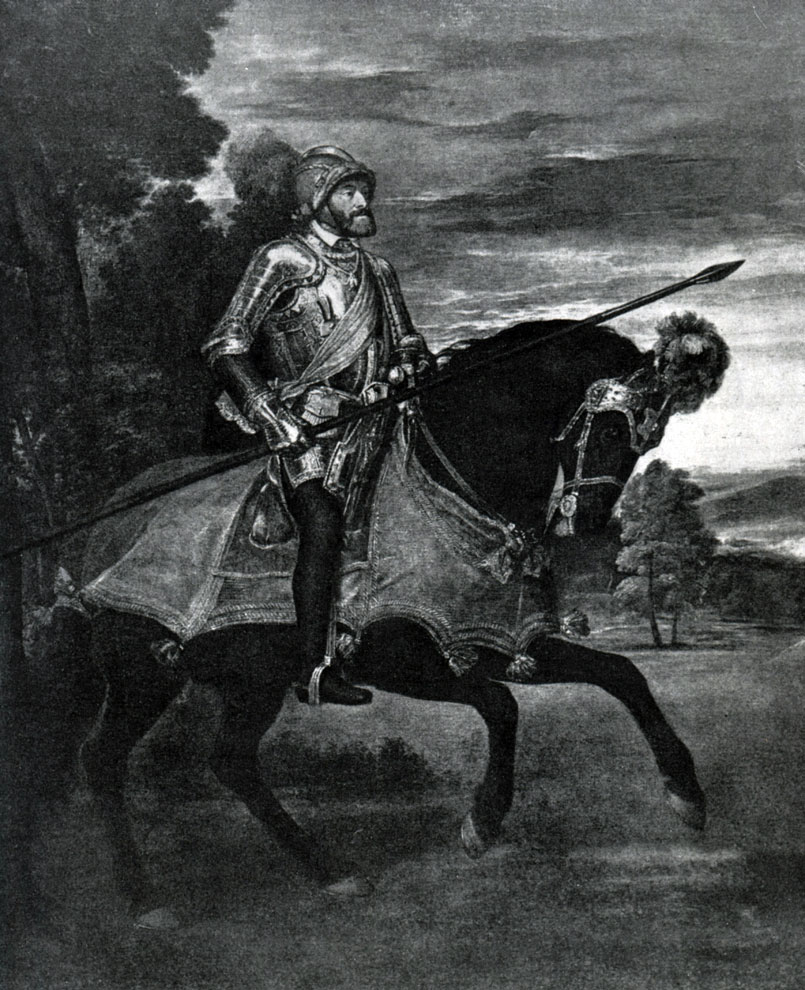
In the equestrian portrait of Charles V, depicted at the Battle of Mühlberg (1548; Prado), the strength of the psychological characterization of the emperor is combined with the brilliance of the pictorial solution, both monumental-decorative and vividly realistic. This portrait, unlike the Munich one, is indeed the forerunner of the large ceremonial portraits of the Baroque era. At the same time, the successive connection with the large portrait compositions of the great master of realism of the 17th century, Velasquez, is no less clearly felt in it.
In contrast to these portraits, Titian, in a number of other works marked by simplicity of composition (usually a half-length or generational image on a neutral background), focuses his attention on a bright and holistic disclosure of the character in all his vital, sometimes rough energy, as, for example, in the portrait of Aretino (1545; Pitti), which perfectly conveys the impetuous energy, health and cynical mind, greed for pleasure and money of this remarkable and so characteristic of Venice of that era. Pietro Aretino, the creator of a number of comedies, witty, though not always irreproachably decent short stories and poems, was mainly famous for his "judgments", semi-joking predictions, dialogues, letters, widely published and representing, in essence, works of a journalistic nature, where it is bizarre combined a bright and passionate defense of free thought and humanism, ridiculing hypocrisy and reaction with outright blackmail of the "powerful ones" of all of Europe. Journalistic and publishing activities, as well as poorly hidden extortion, allowed Aretino to lead a truly princely lifestyle. Greedy for sensual pleasures, Aretino was at the same time a subtle and intelligent connoisseur of the arts, a sincere friend of artists.
The problem of the relationship of a person - the bearer of the humanistic ideals of the Renaissance - to the hostile reactionary forces that dominated the life of Italy, is vividly reflected in all the work of the late Titian. This reflection is indirect, not always, perhaps, fully realized by the artist himself. So, already in the painting “Behold the Man” (1543; Vienna), Titian for the first time shows the tragic conflict of the hero - Christ with the world around him, with the hostile forces ruling in this world, personified in the crudely cynical, disgustingly base, ugly Pilate. In the images dedicated, it would seem, to the affirmation of the sensual joys of life, a new tragic note is clearly heard.
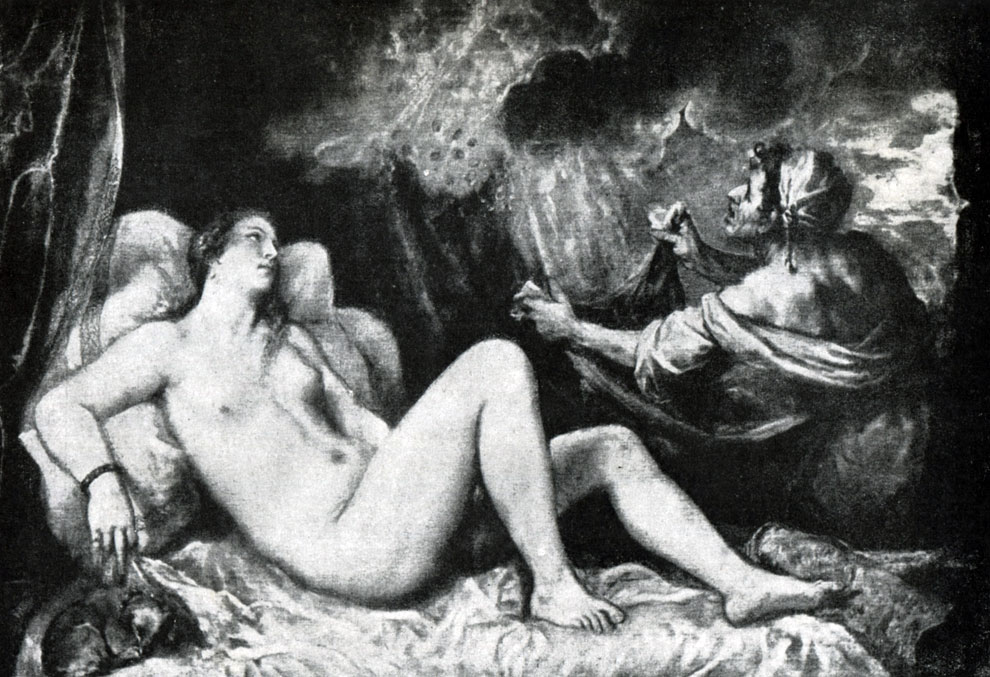
Already his "Danaë" (c. 1554; Madrid, Prado) bears new features in comparison with the previous period. Indeed, "Danae", unlike "Venus of Urbino", strikes us with a kind of drama that permeates the whole picture. Of course, the artist is in love with the real beauty of earthly life, and Danae is beautiful, moreover, frankly sensual beauty. But it is characteristic that Titian now introduces the motive of dramatic experience, the motive of the development of passion. The very artistic language of the master is changing. Titian boldly takes color and tonal ratios, combining them with, as it were, luminous shadows. Thanks to this, it conveys a mobile unity of form and color, a clear contour and soft modeling of volume, which help to reproduce nature, full of motion and complex changing relationships.
In Danae, the master still affirms the beauty of a person's happiness, but the image is already devoid of its former stability and tranquility. Happiness is no longer a permanent state of a person, it is acquired only in moments of a bright outburst of feelings. It is not for nothing that the clear majesty of “Love on Earth and Heaven” and the calm bliss of “Venus of Urbino” are opposed here by a feeling of an excited outburst of strong feelings.
Exceptionally expressive is the comparison of Danae with a rude old maid, who greedily catches coins of golden rain in an outstretched apron, greedily following its flow. Cynical self-interest rudely invades the picture: the beautiful and the ugly, the sublime and the base are dramatically intertwined in the work. The beauty of the humanly bright and free impulse of Danae's feelings is opposed by cynicism and rude self-interest. This clash of characters is emphasized by the contrast of the rough, knotted hand of the old woman and the tender knee of Danae, almost touching each other.
To some extent, with all the differences in the images, Titian finds a solution here, reminiscent of the composition of his painting “Denarius of Caesar”. But there, the comparison of the full moral beauty of the image of Christ with the dark, ugly face of the Pharisee, embodying gross cunning and base human passions, leads to the assertion of the absolute superiority and victory of the humane principle over the vile and cruel.
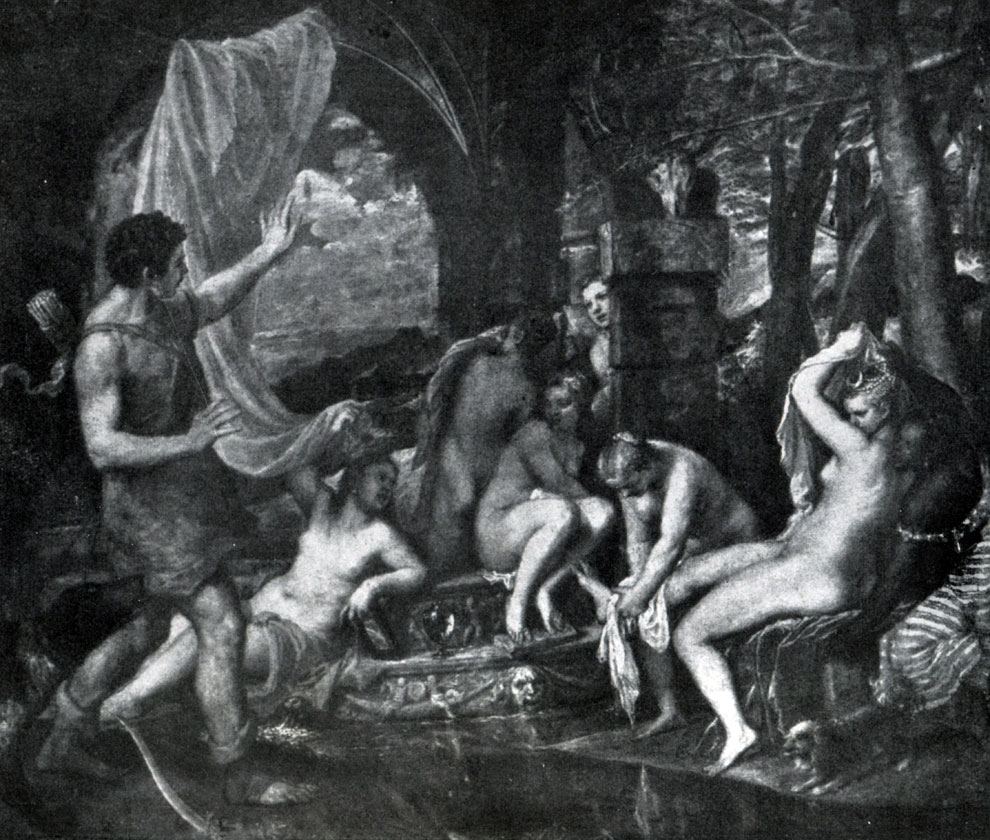
In Danae, although Titian affirms the victory of happiness, the forces of ugliness and malice have already acquired a certain independence. The old woman not only sets off the beauty of Danae in contrast, but also opposes it. At the same time, it was during these years that Titian created a new series of his truly beautiful paintings dedicated to the glorification of the sensual charm of female beauty. However, they are profoundly different from the clear, life-affirming sound of "Love on Earth and Heaven" and from "Bacchanalia" (1520s). His “Diana and Actaeon” (1559; Edinburgh), “The Shepherd and the Nymph (Vienna)”, shrouded in shimmering warm tones with restrainedly hot flashes of red, golden, cold blue, is rather a poetic dream, a charming and exciting fairy tale song about beauty and happiness, leading away from the tragic conflicts of real life - it is not for nothing that the artist himself called paintings of this kind "poetry". The same applies to his wonderful "Venus with Adonis" (Prado), which is distinguished, however, by a greater direct drama of passion than most of his other "poetry" of this time. However, hidden anxiety, languor of the spirit sounds in all the best Titian works of this cycle of 1559-1570s. This is felt in the restless flickering of light and shadow, and in the excited swiftness of the stroke, and in the most excited dreaminess of the nymph, and in the restrainedly passionate animation of the young shepherd (“The Shepherd and the Nymph”, Vienna).
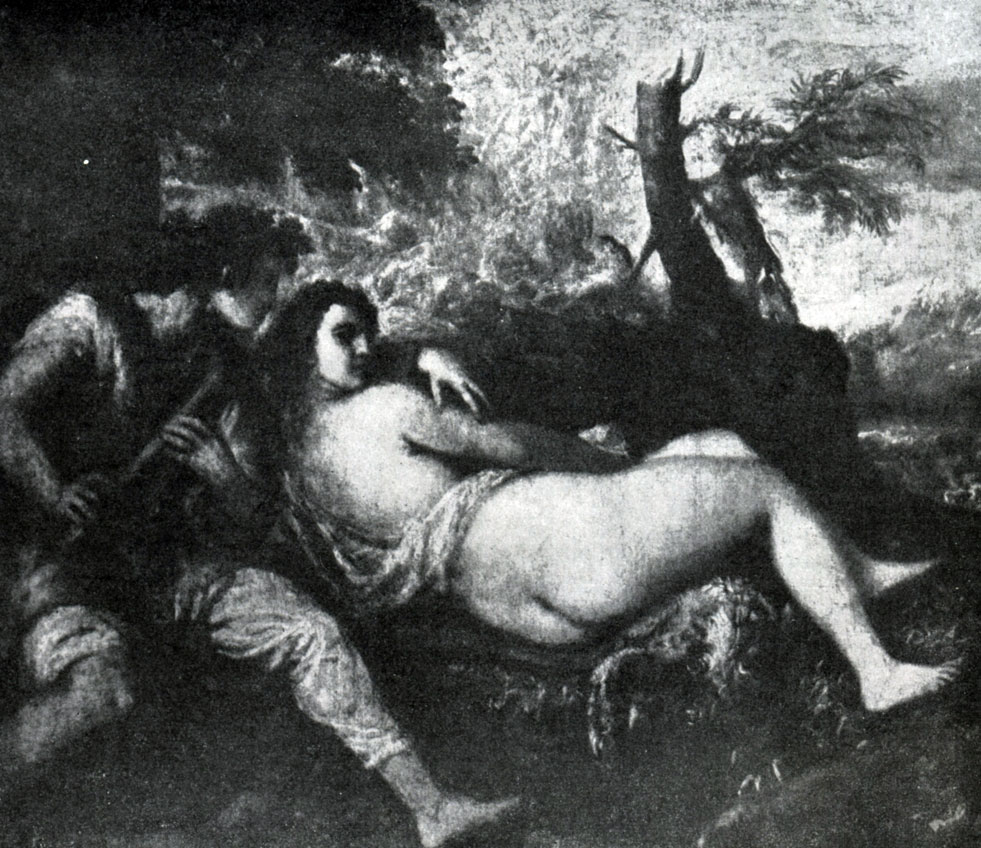
Consistently and with great pictorial power, the aesthetic ideas of the late Titian about life find their expression in his The Penitent Magdalene (1560s), one of the masterpieces of the Hermitage collection.
This picture is written on a plot that is very characteristic of the era of the counter-reformation. In fact, in this picture, Titian once again affirms the humanistic and “pagan” basis of his work. The great realist, resolutely rethinking the religious-mystical plot, creates a work that, in its content, is openly hostile to the reactionary-mystical line in the development of Italian late Renaissance culture.
For Titian, the meaning of the picture is not in the pathos of Christian repentance, not in the sweet languor of religious ecstasy, and even more so not in the affirmation of the perishability of the flesh, from the “dungeon” of which the “incorporeal soul” of man is torn to God. In the Magdalene, the skull - a mystical symbol of the perishability of everything earthly - for Titian is just an accessory imposed by the canons of the plot, which is why he treats it rather unceremoniously, turning it into a stand for an extended book.
Excitedly, almost greedily, the artist conveys to us the figure of the Magdalene, full of beauty and Health, her beautiful thick hair, her tender breasts breathing violently. Passionate look "is full of earthly, human sorrow. Titian resorts to a brushstroke that conveys excitedly and at the same time immaculately accurate real color and light relationships. Restless, intense color chords, dramatic flickering of light and shadow, dynamic texture, the absence of rigid contours isolating the volume with plastic the definiteness of the form as a whole creates an image full of inner movement.Hair does not lie, but falls, the chest breathes, the hand is given in motion, the folds of the dress sway excitedly.Light flickers softly in lush hair, reflected in moisture-covered eyes, refracted in the glass of the phial, struggles with thick shadows, confidently and juicy sculpts the shape of the body, the entire spatial environment of the picture.Thus, an accurate depiction of reality is combined with the transmission of its eternal movement, with its vivid figurative and emotional characteristics.
But what, in the end, is the meaning of the image created with such pictorial power? The artist admires Magdalene: the person is beautiful, his feelings are bright and significant. But he suffers. The former clear and serene happiness is irrevocably broken. The human environment, the world as a whole, is no longer the calm background, submissive to man, as we saw it before. Dark shadows creep over the landscape beyond the Magdalene, thunderclouds cloud the sky, and in the dim light of the last rays of the fading day, the image of a grief-stricken man emerges.
If in the Magdalene the theme of the tragic suffering of a beautiful person does not receive its complete expression, then in The Crowning with Thorns (c. 1570; Munich, Alte Pinakothek) and in Saint Sebastian it appears with the utmost nakedness.
In The Crowning with Thorns, the torturers are shown as cruel and ferocious executioners. Christ, bound by the hands, is by no means a celestial being, but an earthly man, endowed with all the features of physical and moral superiority over his tormentors and yet given over to them for reproach. The gloomy coloring of the picture, full of gloomy anxiety and tension, enhances the tragedy of the scene.

In later paintings, Titian shows the cruel conflict of man with the environment, with reactionary forces hostile to humanism, free reason. Especially significant is "Saint Sebastian" (c. 1570; Leningrad, Hermitage). Sebastian depicts a truly Renaissance titan in strength and greatness of character, but he is shackled and alone. The last gleams of light go out, the night descends to the earth. Gloomy heavy clouds run across the confused sky. All nature, the whole vast world is full of spontaneously formidable movement. The landscape of the early Titian, obediently in tune with the mental structure of his heroes, is now acquiring an independent life and, moreover, hostile to man.
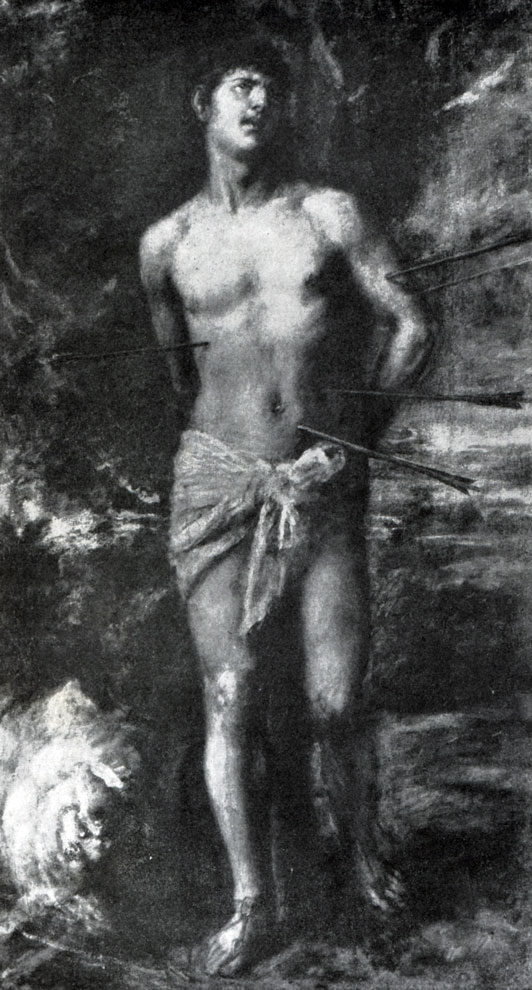
Man for Titian is the highest value. Therefore, although seeing the tragic doom of his hero, he cannot come to terms with this doom, and, full of tragic pathos and courageous grief, the image of Sebastian evokes a feeling of angry protest against forces hostile to him. The moral world of the late Titian, his mournful and courageous wisdom, stoic fidelity to his ideals are beautifully embodied in his heartfelt self-portrait from the Prado (1560s).
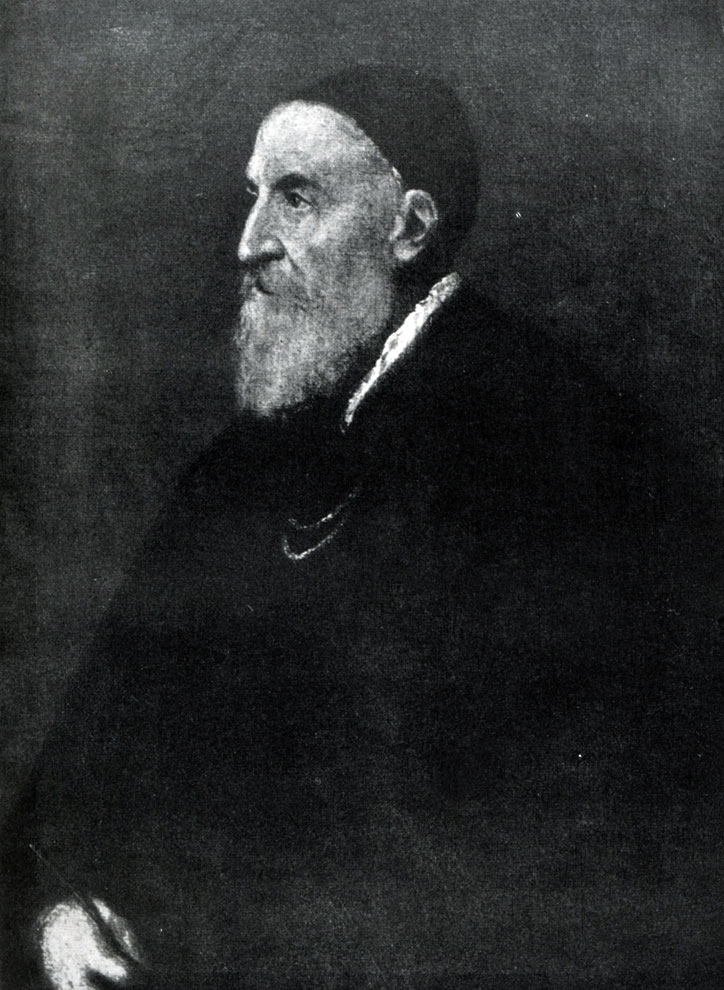
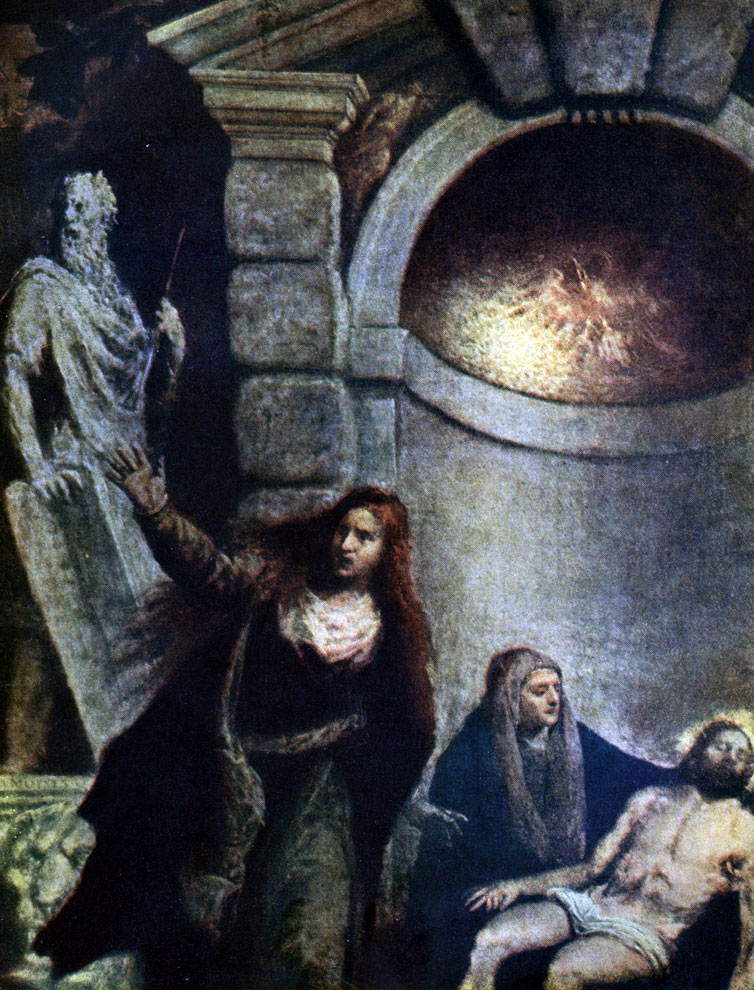
Fig. pp. 264-265
One of the most profound in thought and feeling of the creations of the late Titian is the "Pieta", completed after the artist's death by his student Palma the Younger (Venetian Academy). Against the backdrop of a heavily crushing niche built of roughly hewn stones, framed by two statues, a group of people, engulfed in grief, appears in the tremulously fading light of twilight. Maria holds the naked body of the deceased hero on her knees. She froze in immeasurable grief, like a statue. Christ is not an emaciated ascetic and not a “good shepherd”, but rather a man defeated in an unequal struggle.
The decrepit old man looks at Christ with sadness. Like the cry of despair ringing in the silence of the desert sunset world is the swift gesture of the raised hand of the Magdalene. The flash of her flowing golden-red hair, the restless color contrasts of her attire stand out sharply from the darkness of the gloomy shimmering tone of the picture. Angry and mournful is the expression on the face and movements of the entire figure of the stone statue of Moses, illuminated by the bluish-gray flickering flickering of the fading day.
With extraordinary power, Titian conveyed in this canvas all the immeasurable depth of human grief and all its mournful beauty. Painting created by Titian in last years his life is a requiem dedicated to the beloved heroic images of the receding bright era of the Renaissance.
The evolution of Titian's painting skill is instructive.
In the 1510-1520s. and even later, he still adheres to the principle of contouring the silhouette of figures, a clear comparison of large color spots that generally convey the real coloring of objects. Bold and sonorous color ratios, their colorful intensity, a deep understanding of the interaction of cold and warm tones, the plastic power of sculpting a form with the help of impeccably accurate tonal ratios and fine light and shade modeling are the characteristic features of Titian's pictorial skill.
The transition of the late Titian to the solution of new ideological and figurative tasks causes further evolution in his painting technique. The master understands the ratio of tones, the laws of chiaroscuro more and more deeply, masters the texture and color development of the form more and more perfectly, gradually changing the entire system of his artistic language in the process of this work. Revealing in painting the main relations of form and color, he is able to show all the thrill, all the complex rich life of nature in its eternal development. This gives him the opportunity to enhance the immediate vitality in the transfer of the subject and at the same time emphasize the main thing in the development of the phenomenon. The main thing that Titian is now conquering is the transmission of life in its development, in the bright richness of its contradictions.
The late Titian extensively poses the problems of color harmony in painting, as well as the problem of creating an expressive technique of a free and precise pictorial brushstroke. If in "Love of the Earth and Heaven" the stroke is strictly subordinated to the task of constructing the basic color and light ratios that create a realistic completeness of the image, then in the 1540s and especially from the 1555s. the smear takes on special significance. The stroke not only conveys the texture of the material, but its movement sculpts the form itself - the plasticity of the object. The great merit of the artistic language of the late Titian is that the texture of the brushstroke gives an example of the realistic unity of the pictorial and expressive moment.
That is why the late Titian succeeds with two or three strokes of white and blue paint over a dark underpainting to evoke in the viewer’s eyes not only the extremely plastic sensation of the shape of a glass vessel (“Magdalene”), but also the sensation of the movement of a light beam sliding and refracting in the glass, as if revealing the shape and the texture of the object in front of the viewer. The later technique of Titian is characterized in his famous statement by Boschini, in the words of Palma the Younger:
“Titian covered his canvases with a colorful mass, as if serving as a bed or foundation for what he wanted to express in the future. I myself have seen such vigorously made underpaintings, filled with a densely saturated brush in a pure red tone, which was intended to outline the halftone, or with white. With the same brush, dipping it first in red, then in black, then in yellow paint, he worked out the relief of the illuminated parts. With the same great skill, with the help of just four strokes, he evoked the promise of a beautiful figure from non-existence. Having laid these precious foundations, he turned his paintings to face the wall and sometimes left them in this position for months without even deigning to look at them. When he took them up again, he examined them with stern attention, as if they were his worst enemies, in order to see any flaws in them. And as he discovered features that did not correspond to his subtle plan, he began to act like a kind surgeon, without any mercy removing tumors, cutting out meat, adjusting his arm and leg ... He then covered these skeletons, representing a kind of extract from all the most essential, living body, refining it through a series of repeated strokes to such a state that he seemed to lack only breath.
In the realistic power of Titian's technique - a flexible tool of deeply truthful artistic knowledge world - lies the enormous impact that it had on the further development of realistic painting in the 17th century. Thus, the painting of Rubens and Velazquez is firmly based on the legacy of Titian, developing and modifying his painting technique already at a new historical stage in the development of realism. Titian's direct influence on contemporary Venetian painting was significant, although none of his direct students found the strength to continue and develop his remarkable art.
The most gifted students and contemporaries of Titian include Jacopo Nigreti, nicknamed Palma Vecchio (the Elder), Bonifazio de Pitati, nicknamed Veronese, that is, the Veronese, Paris Bordone, Jacopo Palma the Younger, great-nephew of Palma the Elder. All of them, except for Palma the Younger, were born on a terra farm, but spent almost their entire creative life in Venice.
Jacopo Palma the Elder (c. 1480-1528), like his peers Giorgione and Titian, studied with Giovanni Bellini. In his creative manner, he is closest to Titian, although he is significantly inferior to him in all respects. Religious and mythological compositions, as well as portraits of the artist, are distinguished by a sonorous richness of color with some of its monotony (these properties are also inherent in his compositional techniques), as well as an optimistic cheerfulness of images. An essential feature of Palma's work was the creation of an artistic type of Venetian - a magnificent blond beauty. This type of female beauty had some influence on the art of the young Titian. His best works are "Two Nymphs" (1510-1515; Frankfurt am Main), "Three Sisters" (c. 1520) and "Jacob and Rachel" (c. 1520), the latter are in Dresden. The Hermitage keeps his "Portrait of a Man".

One of the best male portraits created by the master is his unknown youth of the Munich Museum. He is close in his manner to Giorgione, but differs from Giorgione in the transfer of an active volitional principle. The turn of the head, full of restrained strength, the imperious and energetic features of a beautiful face, the almost impetuous gesture of the hand raised to the shoulder, squeezing the glove, the elastic tension of the contours, to a large extent, violate the spirit of closed self-immersion inherent in the images of Giorgione.
Developing under the direct influence of Titian, Bonifazio Veronese (1487-1553) in the last years of his life was not free from some influences of mannerism. His work is characterized by large canvases dedicated to episodes from sacred history, combining decorativeness with genre narrative (“The Feast of Lazarus”, “The Massacre of the Innocents”, 1537-1545; both in the Venice Academy and others).
The student of Titian, Paris Bordone (1500-1571), is distinguished by the extraordinary mastery of color, the bright decorativeness of painting. Such are his "Holy Family" (Milan, Brera), "Presenting the Doge of the Ring of St. Mark" (1530s; Venice, Academy). In the later works of Paris Bordone, a strong influence of mannerism and a certain decline in skill are felt. His portraits are distinguished by the veracity of life characteristics. Special mention should be made of "The Venetian Lovers" (Brera), full, perhaps, of a somewhat cold sensual charm.
Palma the Younger (1544-1628), a student of the aging Titian, was at the same time strongly influenced by the work of Tintoretto. Gifted (he very successfully coped with the completion of "Pieta", the last work of Titian), but a little independent master, during his stay in Rome he was imbued with the influence of late mannerism, in line with which he continued to work until the end of his life, already in the period of the birth of baroque art. . Among his works associated with the style of the late Renaissance in Venice, we should mention the "Self-Portrait" (Brera) and the very expressive "Head of an Old Man" (Brera), earlier attributed to Bassano. An idea of his large compositions, close in spirit to late mannerism, is given by the murals of the Oratorio dei Crociferi in Venice (1581 - 1591).
In the art of the Venetian school, the works of a group of artists of the so-called terraferma, that is, the "solid land" - Venetian possessions, located on the part of Italy adjacent to the lagoon, usually stand out.
Generally speaking, most of the masters of the Venetian school were born in the towns or villages of the terra farm (Giorgione, Titian, Paolo Veronese). But they spent all or almost all their lives in the capital, that is, in Venice itself, only from time to time working for the cities or castles of the terra farm. Some artists, who constantly work in the terra farm, represent with their work only provincial variants of the Venetian metropolitan school proper.
At the same time, the way of life, the “social climate” in the towns of the terra farm differed markedly from the Venetian one, which determined the originality of the terra farm school. Venice (a huge commercial port and financial center for that time) was, especially until the end of the 15th century, more closely connected with its rich eastern possessions and overseas trade than with the Italian hinterland, in which, however, the luxurious villas of the Venetian nobility were located.
However, life in small quiet towns, where there was a strong layer of wealthy landowners who derived income from a rationally set economy, proceeded in many ways differently than in Venice. To some extent, the culture of these areas of terra farms was close and understandable to the life and art of the cities of Emilia, Lombardy and other northern Italian regions of that time. It should be recalled that from the end of the 15th century. and especially after the end of the war with the League of Cambrai, the Venetians invest, as Eastern trade declines, free capital in Agriculture and in terra farm crafts. There comes a period of relative prosperity for this part of Italy, which, however, does not violate its somewhat provincial way of life.
Therefore, the appearance of a whole group of artists (Pordenone, Lotto and others) should not be surprising, whose art remained aloof from intense searches, the wide creative scope of the Venetian school proper. The picturesque breadth of Titian's monumental vision is replaced by the colder and more formal decorativeness of their altarpieces. On the other hand, the features of directly observed life, noticeable in the heroic art of the mature and late Titian, or in the festively upbeat work of Veronese, or especially in the passionate and restless creations of Tintoretto, have been especially widely developed by some of the terraferma artists since the first third of the 16th century.
True, this interest in observed everyday life is somewhat reduced. It is rather a calm interest in the amusing details of the life of a person living peacefully in a quiet town than the desire to find a solution to the great ethical problems of the time in the analysis of life itself, which distinguishes their art from the work of the great realists of the next era.
For the first third of the century, one of the best among these artists was Lorenzo Lotto (1480-1556). His early works are still associated with the Quattrocento tradition. The closest to the great humanistic ideals of the High Renaissance is his early portrait of a young man (1505), which is also distinguished by the immediate vitality of the perception of the model.
The well-known altar and mythological compositions of the mature Lotto usually combine an inner dullness of feeling with a rather outward beauty of the composition. Their chilly coloring and general even “pleasant” texture are also, in general, quite banal and stylistically close to mannerism. The lack of deep thought and feeling is sometimes made up for by very ingeniously introduced everyday details, on the depiction of which the artist willingly focuses. Thus, in his “Annunciation” (late 1520s; Recanati, Church of Santa Maria sopra Mercanti), the viewer allows himself to be distracted from the uneasily interpreted main figures to the amusingly depicted frightened cat, darting away from the archangel who suddenly flew in.
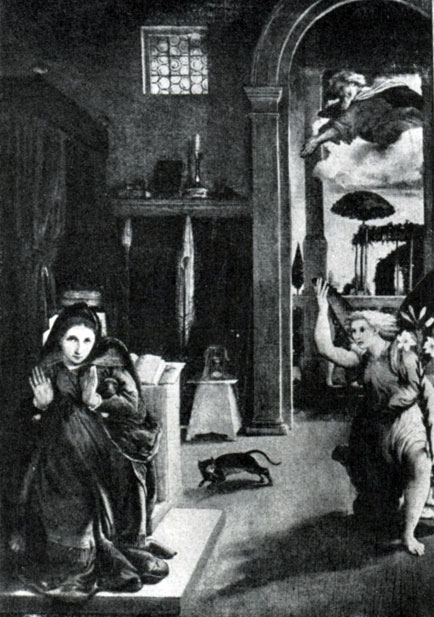
In the future, especially in the portrait, the features of concrete-life realism in the artist’s work are growing (“Portrait of a Woman”; The Hermitage, “Triple Portrait of a Man”). With a decrease in interest in revealing the ethical significance of the individual and the strength of her character, these portraits of Lotto, to some extent, still oppose the openly anti-realist line of Mannerism. The most significant realistic and democratic tendencies in Lotto's work were expressed in his cycle of paintings from the life of St. Lucia (1529/30), where with obvious sympathy he depicts entire scenes, as if snatched from the life of his time (for example, ox-drivers from the Miracle of St. Lucia, etc.). In them, the master, as it were, finds rest and peace from those feelings full of contradictions that arise in him in the conditions of the growing general political and economic crisis in Italy and which color a number of his later compositions in tones of subjective nervousness and uncertainty, leading him away from the tradition of Renaissance humanism.
Much more meaningful is the work of a contemporary of Lotto, a native of Brescia, Girolamo Savoldo (c. 1480-1548). In the work of the late Savoldo, who deeply experienced the temporary ruin of his native country during the war with the League of Cambrai, the short-term rise of Venice after 1516, and then the general crisis that engulfed Italy, the tragic contradictions of Renaissance art were revealed in a very peculiar way and with great force.
The duration of the Quattrocentist traditions, characteristic of the somewhat provincial life of the terra farm (until the beginning of the 16th century), the noticeable influence of the painting of the northern Renaissance with its outwardly supposedly prosaic narrative, craving for genre and interests in the psychological life of ordinary people in the work of Savoldo organically fused with the principles of Renaissance humanism and helped him create one of the very democratic versions of realistic Renaissance art, in many respects anticipating the search for masters of the first third of the 17th century.
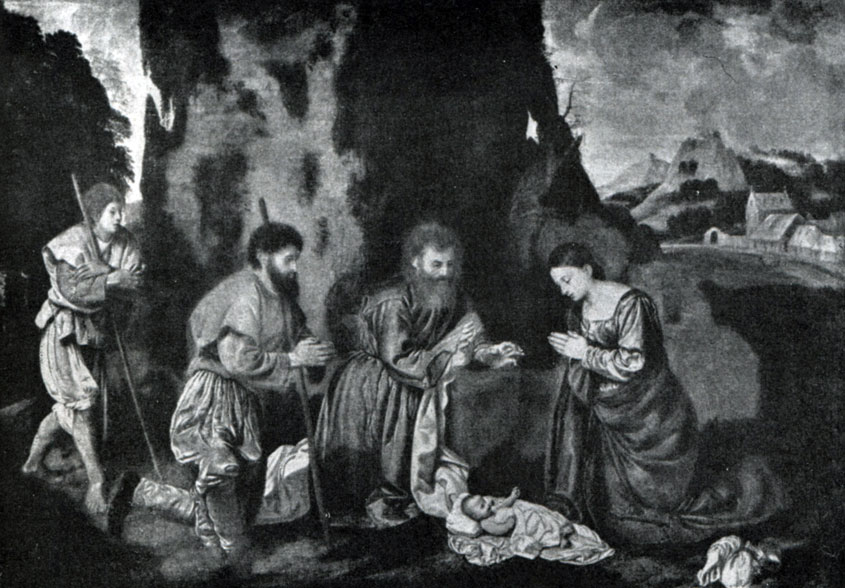
In Savoldo's early, still rather dry Quattrocentist works (for example, The Prophet Elijah; Florence, Leather collection), his interest in ordinary, ordinary people is already felt. In his beautiful Adoration of the Shepherds (1520s; Turin, Pinacoteca), the atmosphere of the enlightened concentration of the feelings of three shepherds, contemplating the newborn with deep meditation, is soulfully conveyed. Clear spirituality, light and slightly sad harmony of the rhythms of the quiet movements of the participants in the event and the entire color system of the composition clearly indicate the connection between the art of the mature Savoldo and the traditions of Giorgione. But the absence of an idealized nobility of the image, the natural sincerity and simplicity of life give this picture a very special originality. In the future, interest in the truthful poeticization of images of ordinary people is still growing (for example, the elegiac image of a shepherd against the backdrop of a rural landscape - "The Shepherd"; Florence, the collection of Contini-Bonacossi). The contribution of other artists who belonged to the school that had developed in Brescia is certainly less significant. However, among them should be mentioned Alessandro Bonvicino, nicknamed Moretto (c. 1498-1554), whose work, going in line with classical traditions, is distinguished by a soft silvery color, somewhat provincial heavy, serious solemnity, not without, however, lyricism (“Madonna with Saints "; Frankfurt). This feature, more noticeable in the minor characters of his composition, is of the greatest value in large paintings (for example, the figure of a servant in the painting "Christ at Emmaus"). His most famous work is St. Justina with a donor. Moretto's contribution to the development of the Renaissance portrait is significant. His "Portrait of a Man" (London) is one of the first full-length portraits.
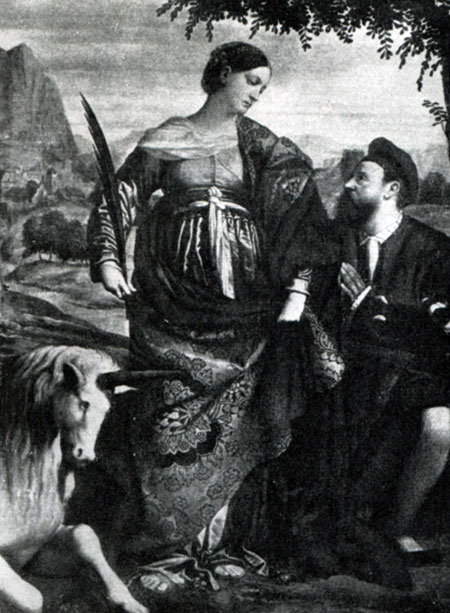
His gifted student was Giovanni Moroni (c. 1523-1578), who worked mainly in Bergamo. He not only, like his teacher, retains a commitment to the realistic method, but his portraits represent a significant and unique contribution to the realistic line of development of art of the late Renaissance. The portraits of Moroni of the mature period, starting from the 1560s, are characterized by a truthful and accurate transfer of the appearance and character of representatives of almost all social strata of the cities of the then terra-farm (“Portrait of a Scientist”, “Portrait of Pontero”, “Portrait of a Tailor”, etc. ). The last portrait is distinguished by the absence of any kind of glorification of the image and carefully accurate transfer of the external resemblance and character of the person being portrayed. At the same time, this is an example of a kind of genreization of a portrait, which gives the image a special life-like concreteness and authenticity. The tailor is depicted standing at a work table with scissors and a cloth in his hands. He paused his work for a moment and peered attentively at the spectator who seemed to have entered the room. If the very clear and plastic transfer of form, the dominant position of the human figure in the composition are characteristic of the art of the Renaissance, then the genre interpretation of the compositional motif goes beyond the boundaries of Renaissance realism, anticipating the search for masters of the 17th century.
In a special position in relation to the schools of the terra farm was the Ferrara school. In Ferrara, the reign of the Dukes of d "Este was preserved, it is from here that the features of that courtly splendor stem, which, combined with the well-known provincial isolation of traditions, determined the somewhat heavy and cold style of Ferrara art of the 16th century, overloaded with decorative details, which failed to develop the interesting undertakings of its Quattrocentist predecessors. The most significant artist of this period was Dosso Dossi (c. 1479 - 1542), who spent his youth in Venice and Mantua and settled in Ferrara from 1516.
In his work, Dosso Dossi relied on the traditions of Giorgione and Francesco Cossa, traditions that are difficult to combine. The experience of the Titian stage remained alien to him. Most of the compositions of the mature Dossi are distinguished by brilliant cold painting, the power of several heavy figures, an overload of decorative details (“Justice”; Dresden, “St. Sebastian”; Milan, Brera). The most interesting side in Dossi's work is his interest in the developed landscape background, which sometimes dominates the picture (Circe, ca. 1515; Borghese Gallery). Dosso Dossi also owns a number of finished landscape compositions, which for that time are very rare, an example of which is the "Landscape with the Figures of Saints" (Moscow, Museum fine arts them. A. S. Pushkin).
A very special place in the art of the terra farm is occupied by the work of the most significant of its masters, Jacopo del Ponte from Bassano (1510 / 19-1592), a contemporary of Tintoretto, in comparison with whose art, perhaps, his work should be considered. Although Bassano lived most of his life in his native town of Bassano, located in the foothills of the Alps, he is closely connected with the circle of Venetian painting of the late Renaissance proper, occupying a peculiar and rather important place in it.
Perhaps, of all the masters of Italy in the second half of the 16th century. Bassano came closest to becoming the protagonist of the paintings of an ordinary person of his time. True, in the early works of the artist (“Christ at Emmaus”) genre and everyday moments are interspersed with traditional schemes for solving plots of this kind. In the future, more precisely, in the 1540s. his art is undergoing a kind of turning point. The images become more restless, internally dramatic. From the image of individual characters arranged in stable balanced groups according to the canons of the High Renaissance, which Bassano, by the way, did not master very well, the master moves on to the image of human groups and crowds covered by general anxiety.
Ordinary people - shepherds, farmers - become the main characters in his paintings. Such are his Rest on the Flight into Egypt, Adoration of the Shepherds (1568; Bassano, Museum) and others.
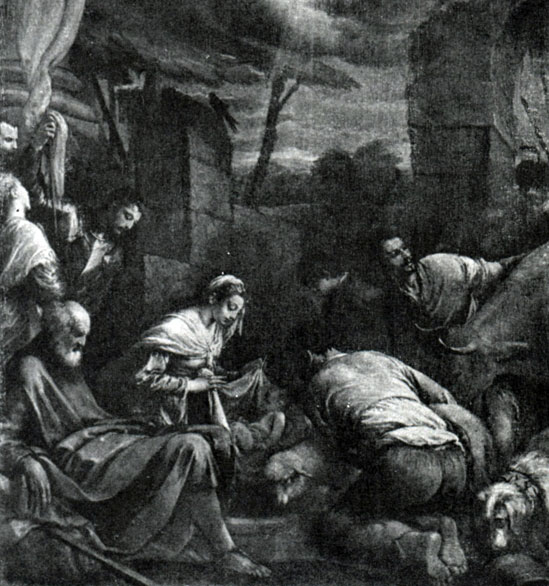
His "Return of Jacob" is, in essence, a kind of interweaving of a story on a biblical theme with the image of the "works and days" of ordinary residents of a small Alpine town. The latter, in this case, clearly prevails in the entire figurative structure of the picture. In a number of his works of the late period, Bassano is completely freed from the formal plot connection with the religious and mythological theme.
His "Autumn" is a kind of elegy, glorifying the calm joys of the pores of mature autumn. A magnificent landscape, a poetic motif of a group of hunters going into the distance, embraced by a damp silvery autumn atmosphere, constitute the main charm of this picture.
In the work of Bassano, the art of the late Renaissance in Venice came closest to the creation new system genres directly addressed to real life in its everyday forms of development. However, this important step could be taken not on the basis of the greatness of Venice, that is, the Renaissance city-state, living out its last days, but on the basis of cultures that arose on the basis of nation-states, on the basis of a new, progressive stage in the history of human society.
Along with Michelangelo, Titian represented a generation of titans of the High Renaissance caught in the middle of their life path the tragic crisis that accompanied the onset of the late Renaissance for Italy. But they solved the new problems of the time from the positions of humanists, whose personality, whose attitude to the world was formed in the heroic period of the High Renaissance. The artists of the next generation, including the Venetians, developed as creative individuals under the influence of the already established stage in the history of the Renaissance. Their work was his natural artistic expression. Such are Jacopo Tintoretto and Paolo Veronese, who so differently embodied different facets, different sides of the same era.
In the work of Paolo Cagliari (1528-1588), nicknamed after the birthplace of Veronese, all the power and brilliance of Venetian decorative and monumental oil painting is revealed with particular fullness and expressiveness. A student of the insignificant Verona master Antonio Badile, Veronese first worked on a terra farm, creating a number of frescoes and oil compositions (frescoes in Villa Emo of the early 1550s and others). But already in 1553 he moved to Venice, where his talent matured.
The History of Esther (1556) is one of the finest cycles of the young Veronese, adorning the ceiling of the Church of San Sebastiano. The composition of the three plafonds is filled with a relatively small number of large-scale, plastically clearly defined figures. The artistry of the movements of strong and beautiful human figures, the magnificent angles of rearing horses are striking. We are pleased with the strength and lightness of sonorous color combinations, for example, the juxtaposition of a black and white horse in the composition “The Triumph of Mordecai”.
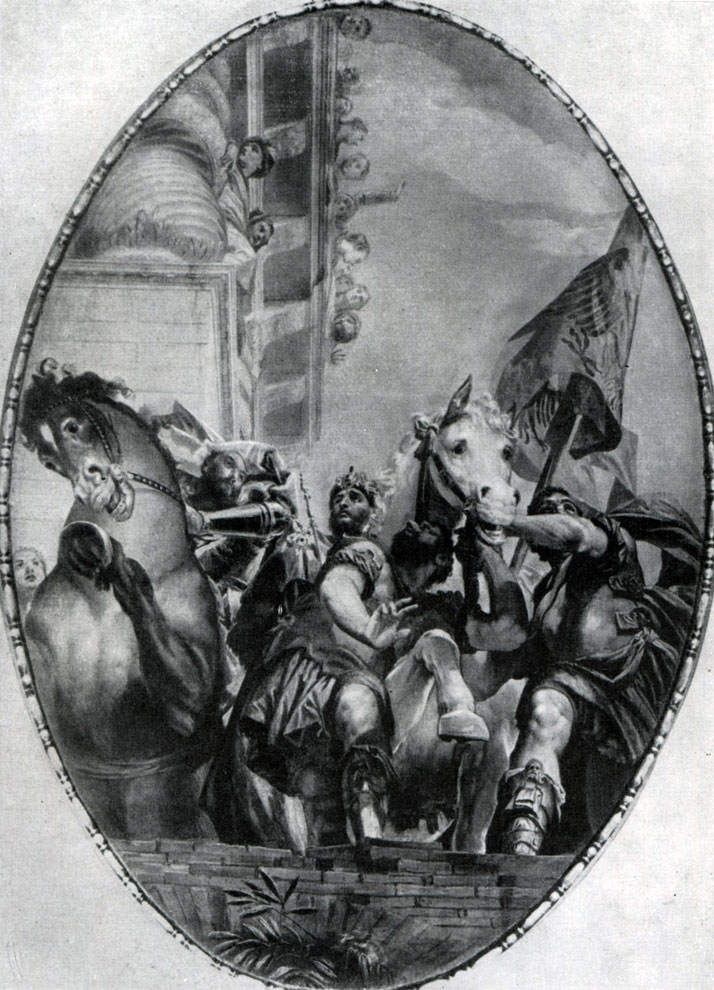
In general, the plastically clear study of individual figures brings this cycle, like all of Veronese's early works in general, closer to the art of the High Renaissance. However, the outward somewhat theatrical elation of the movements of the characters largely deprives them of that inner fortitude, that true greatness that distinguishes the heroes of the monumental compositions of the early and High Renaissance from Masaccio and Castagno to Raphael's "Athenian School" and the ceiling of Michelangelo's Sistine Chapel. This feature of the art of the young Veronese is most noticeable in such of his official ceremonial compositions as "Juno distributing gifts of Venice" (c. 1553; Venice, Doge's Palace), where the decorative brilliance of painting does not atone for the outward pomp of the idea.
Veronese's images are more festive than heroic. But their cheerfulness, bright decorative power and at the same time the subtlest richness of the picturesque form are truly extraordinary. This combination of a general decorative-monumental pictorial effect with a rich differentiation of color relationships is also manifested in the plafonds of the sacristy of San Sebastiano and in a number of other compositions.
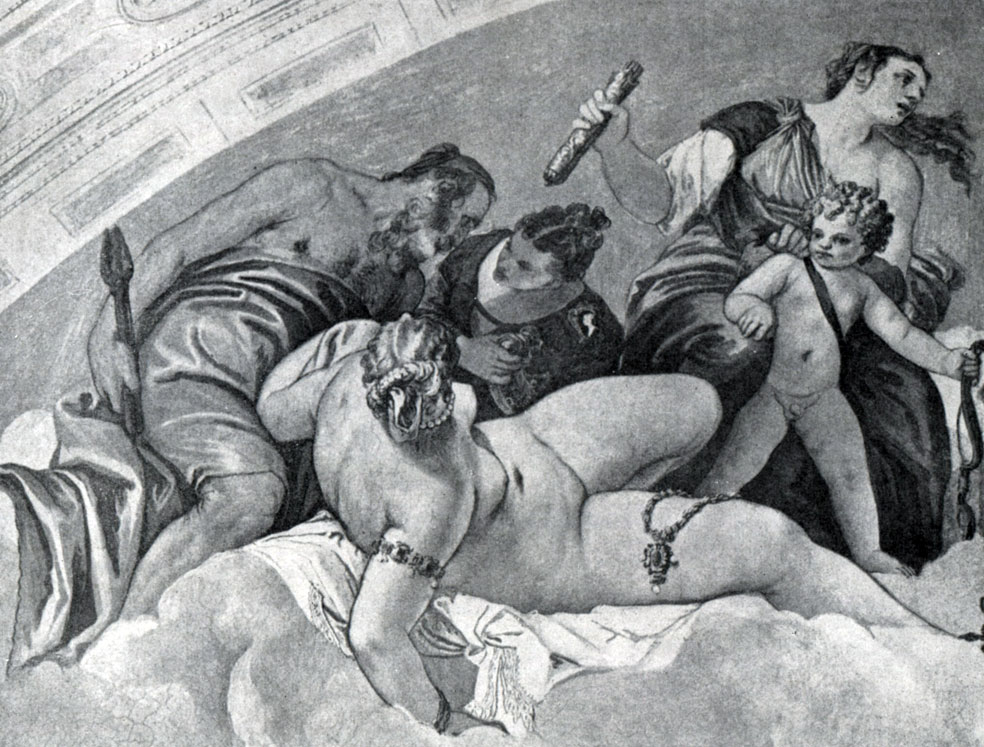
An important place in the work of the mature Veronese is occupied by the frescoes of the Villa Barbaro (in Maser), built by Palladio on a terra farm, not far from Treviso. The elegant small villa-palace is beautifully inscribed in the surrounding rural landscape and framed by a flowering garden. Veronese's frescoes, full of light movement and sonorous brilliance, correspond to its architectural image. In this cycle, compositions full of foaming "dancing fun" on mythological themes - the ceiling "Olympus" and others - naturally alternate with witty unexpected motifs snatched from life: for example, the image of a door through which a handsome young man enters the hall, taking off his hat in a bow, as addressed to the owners of the house. However, in "everyday" motives of this kind, the master does not set himself the task of artistic disclosure through the natural course of life of ordinary ordinary people of all the typical characteristics of their relationship.
He is only interested in the festive, amusingly expressive side of life. Everyday motifs woven into a cycle or into individual compositions should only enliven the whole, remove the feeling of solemn splendor and, so to speak, the invention of the composition, enhance the sense of persuasiveness of that sparkling poem about the jubilant celebration of life that Veronese creates in his paintings. This understanding of the “genre” is characteristic of Veronese not only in decorative (which is completely natural), but also in all the plot compositions of the master. Of course, Veronese's colorful compositions are not only poetic tales. They are true and not. only in their private genre details, especially generously used by the master in the mature period of creativity. Indeed, feasting festivity, a feature characteristic of the life of the patrician elite of Venice, still rich and tattered, is the real side of the life of that time. Moreover, spectacles, processions, extravaganzas were arranged by the republic and for the people. And the city itself struck with the fabulousness of its architectural appearance.
The mature period of Veronese is also distinguished by a gradual change in his pictorial system. His compositions are becoming, as a rule, more and more crowded. Complex and rich in plastic and picturesque effects, the movement of a large mass of people - the crowd - is perceived as a kind of single living whole. A complex symphony of colors, their interweaving full of pulsating movement creates a different sound than in the High Renaissance, the sound of the colorful surface of the picture. Most clearly, these features of the mature art of Veronese are revealed in the huge (10x6 m) "Marriage at Cana" (1563; Louvre). Against the background of the slender and magnificent architecture of the terraces and porticos permeated with light, the frisoobrazio unfolds the scene of a feast that unites about one hundred and thirty figures. Servants now in Venetian, now in fancifully oriental clothes, musicians, jesters, feasting youths, luxuriously dressed beautiful ladies, bearded men, venerable elders form a colorful composition full of movement. Some of the heads are portraits. These are the images of the sovereigns of Europe from Sultan Suleiman I to Charles V. In a group of musicians, Veronese portrayed Titian, Bassano, Tintoretto and himself.
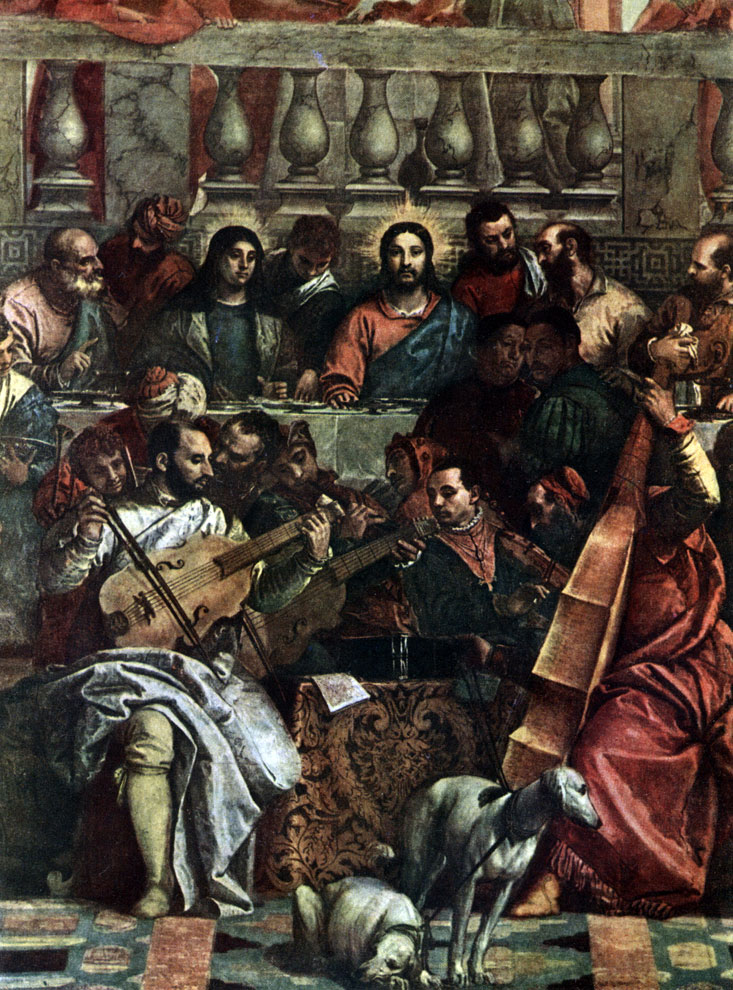
Fig. pp. 272-273

With all the diversity of motives, the picture forms a single pictorial compositional whole. Numerous characters are arranged in three frieze-like ribbons or tiers flowing one above the other. The restlessly noisy movement of the crowd is closed from the edges of the picture by columns, the center is emphasized by a group symmetrically located around the seated Christ. In this regard, Veronese continues the tradition of balanced monumental compositions of the High Renaissance.
And in terms of color, Veronese compositionally highlights the central, nodal figure of Christ with the most dense, stable color construction, combining the sonorous, very material red and blue colors of the robe with the golden radiance of the halo. However, Christ is the central node of the picture only in a narrow-color and compositional-geometric sense; he is calm and internally relatively insignificant. In any case, he is not ethically distinguished from other characters in any way.
In general, the charm of this picture is not in the moral strength or dramatic passion of the characters, but in the combination of immediate vitality and harmonious refinement of the images of people happily celebrating the holiday of life. Full of joyful boiling and coloring of the picture: fresh, sonorous, with bright flashes of red, from pink-lilac to wine, fiery and juicy dark ruts. The suite of red appears in combination with the cold brilliance of blue, greenish-blue, as well as warmer olive and brown-golden tones with a dull velvety sound. All this is united by a common silvery-bluish atmosphere that envelops the whole picture. Special Role in this sense it belongs to the color white, sometimes bluish, sometimes lilac, sometimes pinkish-gray in shades. From the density of the color of silver amphoras and brittle elastic silks, through linen tablecloths, to the bluish ash of white columns, the fluffiness of light clouds floating across the moist green-blue sky of the lagoon, this color develops, gradually dissolving in the general silvery pearl of the illumination of the picture.
The noisy boiling of the crowd of guests feasting in the lower tiers of the composition is replaced by the graceful grace of movements of the rare figures of the upper tier - the upper balcony of the loggia - looming against the sky. It all ends with a vision of distant bizarre, hazy buildings and softly shining skies.
In the field of portraiture, Veronese's accomplishments were less significant. Brilliantly conveying external resemblance, while achieving some idealization of the image, bordering on its embellishment, Veronese did not focus his attention on the deep disclosure of the character of the person portrayed, without which, in fact, there is no great art of portraiture. However, the brilliance of painting, superbly painted accessories, noble aristocratic ease of poses make his portraits very pleasing to the eye and perfectly “fit” them into the luxurious palace interiors of the late Venetian Renaissance. Some of his relatively early portraits are distinguished by a shade of indefinite romantic daydreaming - "Portrait of a Man" (Budapest, Museum). Only in a few of his earliest portraits, such as Count da Porto with his son, does the young artist create images that unexpectedly captivate with their cordiality and the natural unpretentiousness of the motive. In the future, this trend does not develop, and the magnificent elegance of his subsequent works rather continues the line outlined in the already mentioned Budapest portrait (for example, the portrait of Bella Nani in the Louvre).

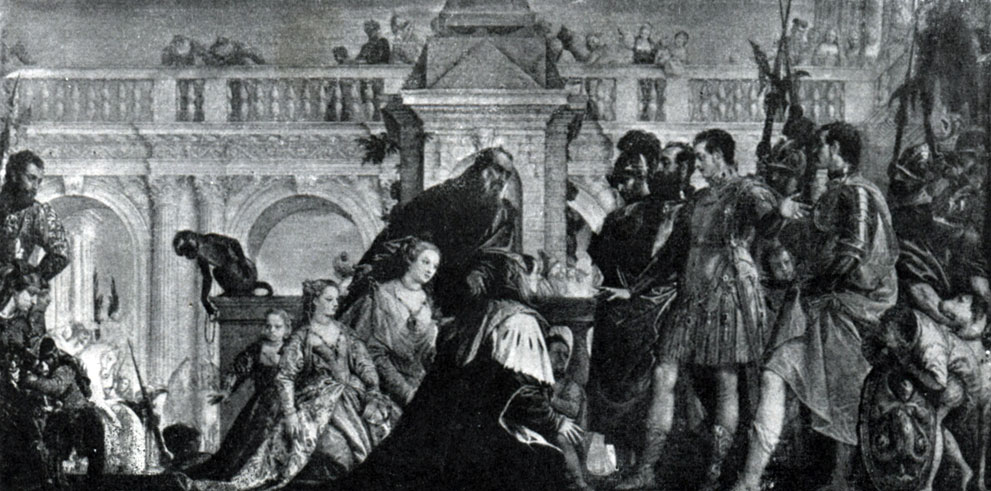
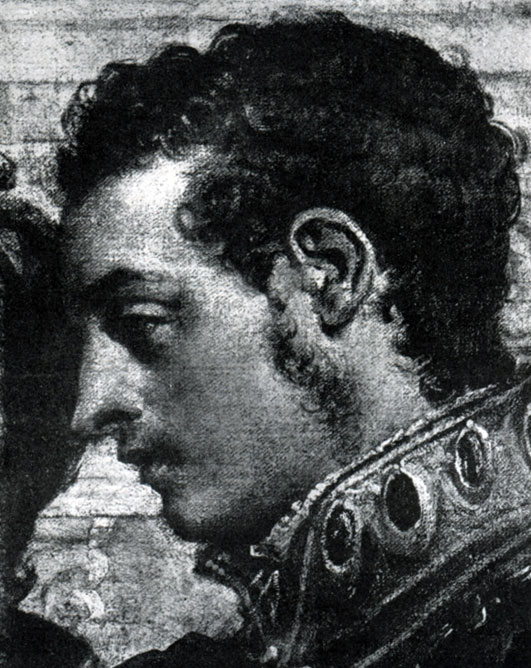
Veronese's canvases seemed to take the artist away from the struggle, from the contrasts of historical reality. In part, this was so. And yet, in the context of the counter-reformation, the growing ideological aggression of Catholicism, his cheerful painting, whether the master wanted it or not, occupied a certain place in the contemporary ideological struggle. These are “The Family of Darius before Alexander the Great” (London, National Gallery), “Marriage at Cana” (Dresden), “Feast in the House of Levi” (Venice). The church could not forgive Veronese the secular, pagan cheerfulness of his biblical compositions, which so sharply contradicted the church line in art, that is, the revival of mysticism, faith in the perishability of the flesh and the eternity of the spirit. Hence the unpleasant explanation with the Inquisition that Veronese had to have about the too "pagan" nature of his "Feast in the House of Levi" (1573). Only the continued secular nature of government in the commercial republic saved Veronese from more serious consequences.
In addition, the general crisis of the Venetian Republic also affected the master's work more directly, mainly in the later period of his work. Already in the Madonna of the House of Kuchchin (Dresden), created around 1570, brilliant in craftsmanship, not everything is completely serene and joyful. Of course, the composition is solemn and magnificent, individual motives of the movement and types of people are brilliantly snatched from life; especially charming is the boy, gently and a little wearily clinging to a column of colored marble. But in the expression on the face of Kuccin himself, the master, perhaps, involuntarily conveys a feeling of some kind of bitterness and hidden anxiety.
Drama was not a strong point of Veronese and was, generally speaking, alien to the creative warehouse of his character. Therefore, often, even taking a dramatic plot, Veronese is easily distracted from the transfer of the clash of characters, from the inner experiences of the characters to the bright and colorful moments of life, to the beauty of painting itself. Yet notes of grief and sadness begin to resound in some of his later Descent from the Cross. This is especially felt in the Budapest and especially the Louvre paintings, imbued with a genuine sense of noble sadness and grief.
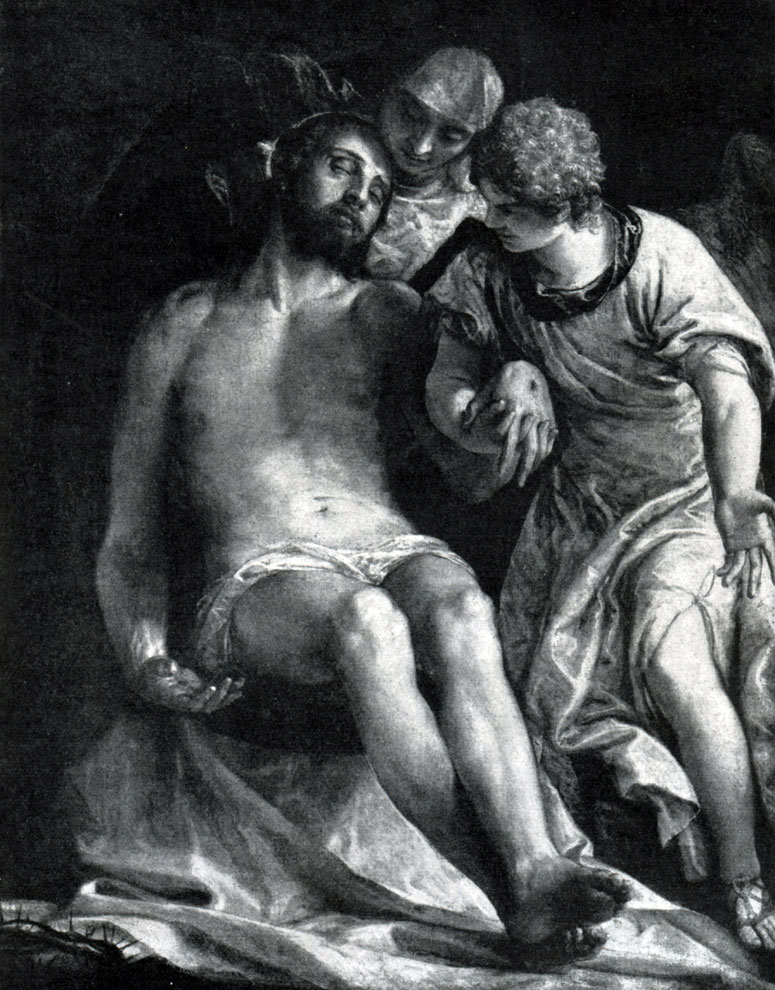
In the later period, in some of Veronese's works, pessimistic moods break through with unexpected force. Such is his Hermitage Lamentation of Christ (between 1576 and 1582), gloomily restless and subdued in color. True, the gesture of the angel, bent over Christ, differs somewhat out of place in its almost courtly grace, but it is perceived in relation to the picture as a whole approximately as we would perceive a gracefully thoroughbred movement that accidentally slipped through - a gesture from a recent minion seized with sincere grief, defeated by fate fortune. During these years, Veronese basically continued to carry out orders for ceremonial, festive works. In 1574, as a result of several large fires, a significant part of the interior of the Doge's Palace burned out, during which, in particular, the remarkable works of painting by both Bellini were lost. New cycles were ordered, to which Tintoretto and Veronese were involved. The latter completed a number of paintings: "The Betrothal of St. Catherine", the allegorical "Triumph of Venice" (c. 1585; Venice, Doge's Palace), in fact, no longer triumphant and not victorious, and other compositions of this kind. Naturally, being in such a sharp contradiction with life, these compositions were performed by an aging and wiser master with an increasingly dispassionate, more and more indifferent hand. In contrast to these ceremonial works, the already mentioned "Lamentation of Christ", the mournful "Crucifixion" from the Louvre and Budapest and some other small easel works created "for oneself", full of sad lyricism and sadness, are of the greatest value in the late work of the master, when then in love with the joy and beauty of being.
In many respects, the art of a gifted Slavic painter, a Dalmatian by birth, Andrea Meldolla (Medulich), nicknamed Schiavone (1503/22-1563), which means Slav, comes into contact with Tintoretto's circle of creative interests. Schiavone, who died early, did not have time to fully reveal his talent, and yet his contribution to the development of Venetian painting is quite noticeable.
Schiavone experienced the well-known influence of Parmigianino, but the main focus of his activity was determined by following the art of the late Titian and the direct influence of Tintoretto on him. In the early period, Schiavone's art was distinguished by a well-known idyllic mood in the transfer of genre-interpreted mythological scenes ("Diana and Actaeon"; Oxford). Later, in his mythological compositions, as well as gospel ones (he rarely addresses this range of topics), they acquire a more restless and dramatic character. Schiavone pays much attention to the development of the landscape environment in which he places the heroes of his works. The feeling of complete excitement of the elemental life of a mighty nature is a remarkable quality of the works of the mature Schiavone (Jupiter and Io; the Hermitage, the Midas Judgment; the Venice Academy, etc.). The disclosure of human characters, the tragic severity of conflicts between them, Schiavone succeeded with less depth and power of generalization than the late Titian or Tintoretto. With all his interest in these problems, Schiavone could not free himself from several external methods of dramatizing the image, and in some cases from excessive narrative allegorism (for example, the allegorical triptych "Nature, Time and Death"; Venice Academy).
The most deeply and widely tragic contradictions of the era were expressed in the work of Jacopo Robusti, nicknamed Tintoretto (1518-1594). Tintoretto came from the democratic circles of Venetian society, he was the son of a silk dyer, hence his nickname Tintoretto - dyer.
Unlike Titian and Aretino, the life of the son of a silk dyer was distinguished by its modesty. All his life, Tintoretto lived with his family in a modest dwelling, in a modest quarter of Venice on the Fondamenta dei Mori. Selflessness, disregard for the joys of life and the temptations of its luxury - a characteristic feature of the master. Often, striving first of all to realize his creative idea, he was so moderate in his fee requirements that he undertook to complete large compositions only for the price of paints and canvas.
At the same time, Tintoretto was distinguished by a purely Renaissance breadth of humanistic interests. He was part of a close circle of the best representatives of the Venetian intelligentsia of the late Renaissance - scientists, musicians, advanced public thinkers: Daniele Barbaro, the Venier brothers, Tsarlino and others. In particular, Zarlino, a composer and conductor, was closely associated with the transition of music to polyphony, with the creation of double counterpoint, with the development of the doctrine of harmony, which echoes the polyphony of the complex, full of restless dynamics and expression of the painting of Tintoretto, who had an outstanding musical talent.
Although Tintoretto studied painting with Bonifazio Veronese, he is much more indebted to the deep development of the creative experience of Michelangelo and Titian.
The complex and contradictory developing art of Tintoretto can be roughly divided into three stages: early, where his work is still directly connected with the traditions of the High Renaissance, covering the very end of the 1530s and almost all of the 1540s. In the 1550-1570s. the original artistic language of Tintoretto as a master of the late Renaissance is finally taking shape. This is his second period. The last fifteen years of the master's work, when his perception of life and artistic language reach a special power and tragic force, form the third, final period in his work.
The art of Tintoretto, like the art of Titian, is unusually multifaceted and rich. These are large compositions on religious themes, and works that can be called fundamental for the formation of the historical genre in painting, and wonderful "poetry", and compositions on a mythological theme, and numerous portraits.
For Tintoretto, especially starting from the end of the 1550s, it is characteristic, first of all, to express his inner experience and his ethical assessment of the images he embodied. Hence the passionate emotional expressiveness of his artistic language.
The desire to convey the main thing, the main thing in the content of the image dominates in his work over the interests of a purely technical and pictorially formal nature. Therefore, Tintoretto's brush rarely achieves the virtuoso flexibility and graceful subtlety of Veronese's artistic language. Very often, the master, who worked furiously and always in a hurry to express himself, created paintings that were almost careless, “approximate” in their execution. In his best works, the unusually spiritual content of his pictorial form, the passionate animation of his vision of the world lead to the creation of masterpieces, where the fullness of feeling and thought is in harmony with the powerful painting technique adequate to the artist’s feeling and intention. These works of Tintoretto are the same masterpieces of perfect mastery of the language of painting, as well as the creations of Veronese. At the same time, the depth and power of the idea bring his best works closer to greatest achievements Titian. The unevenness of the artistic heritage of Tintoretto is partly due to the fact that the master (albeit to a completely different extent than his younger contemporary, the Spaniard El Greco) embodies in his work one of the most characteristic aspects of the artistic culture of the late Renaissance, which is both his weak and strong side, - this is a direct disclosure in art of the subjective personal relationship of the artist to the world, his experiences.
The moment of direct transmission of subjective experience, emotional mood in the handwriting itself, in the manner of execution, perhaps, is clearly reflected for the first time in the art of the late Titian and Michelangelo, that is, in the period when they became masters of the late Renaissance. In the period of the late Renaissance, the impulses of the artist’s sometimes confused, sometimes clarified soul, the lively pulsation of his emotions are no longer subject to the task of a harmoniously clear reflection of the whole, but. on the contrary, they are directly reflected in the very manner of performance, they determine the angle of view of the depicted or imaginary phenomena of life.
In some cases, this could lead to a departure from the knowledge of the world, immersion in the subjective "insights" of the soul, as happened with El Greco, in other cases it led to a coldly artistic and egoistic play with mannered stylized forms, subject to personal arbitrariness or a random whim of fantasy , - in the Parma school of mannerism. But where the artist was captured by the great tragic conflicts of the time, where the artist passionately sought to know, experience and express the spirit of the era, there this side of the culture of the late Renaissance intensified direct emotional expressiveness. artistic image gave him a thrill of sincere human passion. This side of the art of the late Renaissance found a particularly complete expression in the work of Tintoretto.
The new thing that Tintoretto brought to Italian and world art was not limited to expressing the immediate sincere passion for perceiving the world, but, of course, was embodied in other, more significant moments.
Tintoretto was the first in the art of that time to create the image of a crowd of people, embraced by a single or complexly contradictory spiritual impulse. Of course, Renaissance artists previously portrayed not only individual heroes, but entire groups of people, but in Raphael’s School of Athens or Leonardo’s Last Supper there was no sense of a single human mass as a living integral collective. It was a collection of separate independently existing personalities entering into certain interactions. In Tintoretto, for the first time, a crowd appears, endowed with a common, unified and complex psychological state, moving, swaying, polyphonic.
Tragic contradictions in the development of Italian society destroyed the notion of Renaissance humanism about the dominance of a perfect, beautiful person over the world around him, about his happy and joyful heroic existence. These tragic conflicts are reflected in the work of Tintoretto.

The early works of Tintoretto are not yet imbued with this tragic spirit, they still live in the joyful optimism of the High Renaissance. And yet, in such early works as The Last Supper in the Church of Santa Marquola in Venice (1547), one can already feel that heightened interest in the dynamics of movement, in sharp contrasting lighting effects, which, as it were, predicts the further course of development of his art. The first period of Tintoretto's work ends with his large composition "The Miracle of St. Mark" (1548; Venice Academy). This is a large and spectacular monumental and decorative composition. A young man professing the Christian faith is stripped and thrown by the pagans on the pavement slabs. By order of the judge, he is subjected to torment, but St. Mark, swiftly flying down from heaven, performs a miracle: hammers, sticks, swords break on the body of the martyr, which has acquired magical invulnerability, and a group of executioners and spectators leans over his prostrate body with frightened surprise. The composition, like the Renaissance ones, is built on the principle of a clear isolation: the violent movement in the center is closed due to the movements of the figures located in its right and left parts directed towards the center of the picture. Their volumes are modeled very plastically, their movements are full of that complete expressiveness of gesture, which is so characteristic of the art of the Renaissance. Given in a bold perspective, the figure of a young woman with a child in the left corner of the picture continues the tradition of a peculiarly heroized genre, which found expression in the work of Titian in the 1520s and 1530s. ("Bringing Mary into the Temple"). However, the rapid flight - the fall of St. Mark, bursting from above into the composition of the picture, introduces a moment of extraordinary dynamics, creates a feeling of a huge space outside the frame of the picture, thereby anticipating the perception of the event not as a whole closed in itself, but as one of the bursts in perpetual motion. flow of time and space, so characteristic of the art of the late Renaissance.
The same motif is felt in Tintoretto's somewhat earlier painting, The Procession of St. Ursula, where an angel, swiftly flying in from outside the picture, invades the calmly smooth procession moving from the depths. And in Tintoretto's interpretation of traditional mythological themes, new notes also appear. Such is the juxtaposition, full of dramatic contrast, of the youthful beauty of naked Venus, the baby Cupid peacefully dozing in the cradle, and the angular movements of the old man Vulcan, overcome by voluptuousness (Venus and Vulcan, 1545-1547; Munich).
In the 1550s the features of the new in the work of Tintoretto finally triumph over the old, already obsolete schemes. One of the most characteristic works of this time is his "Entrance of Mary into the Temple" (c. 1555; Venice, Church of Santa Maria del Orto), so different from the friezoly solemn Titian's "Entrance into the Temple". A steep staircase leading from the viewer into the depths of the picture leads to the threshold of the temple. On it, in a sharply diagonal perspective, separate figures covered by restless excitement are scattered. At the top of the stairs, against the background of a calm sky, a solemnly strict elder-high priest looms, surrounded by acolytes. To him, climbing the last steps of the stairs, the fragile figure of Mary is rapidly moving. The feeling of the vastness of the world, the rapid dynamics of space, the permeation of the people participating in the action with some kind of rapidly pulsating, vibrating movement give the entire composition an extraordinary excitement, special significance.
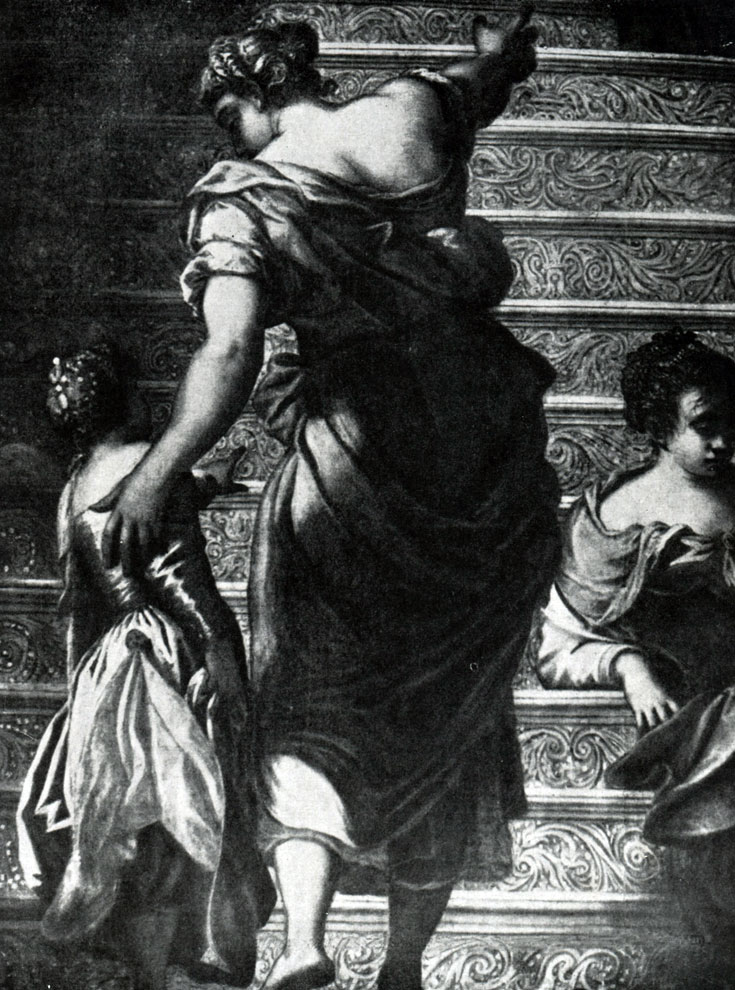
In The Abduction of the Body of St. Mark (1562-1566; Venice Academy), another feature of Tintoretto's work of the Mature period comes out especially clearly. At the moment when the pious Venetians steal the body of the saint from Alexandria, which belongs to the "infidels", a storm breaks out, putting the dismayed Alexandrians to flight. The formidable forces of the elements, the restless lighting of the picture with flashes of lightning, the struggle of light and darkness of a stormy cloudy sky turn nature into a powerful accomplice of the event, enhance the overall restless drama of the image.
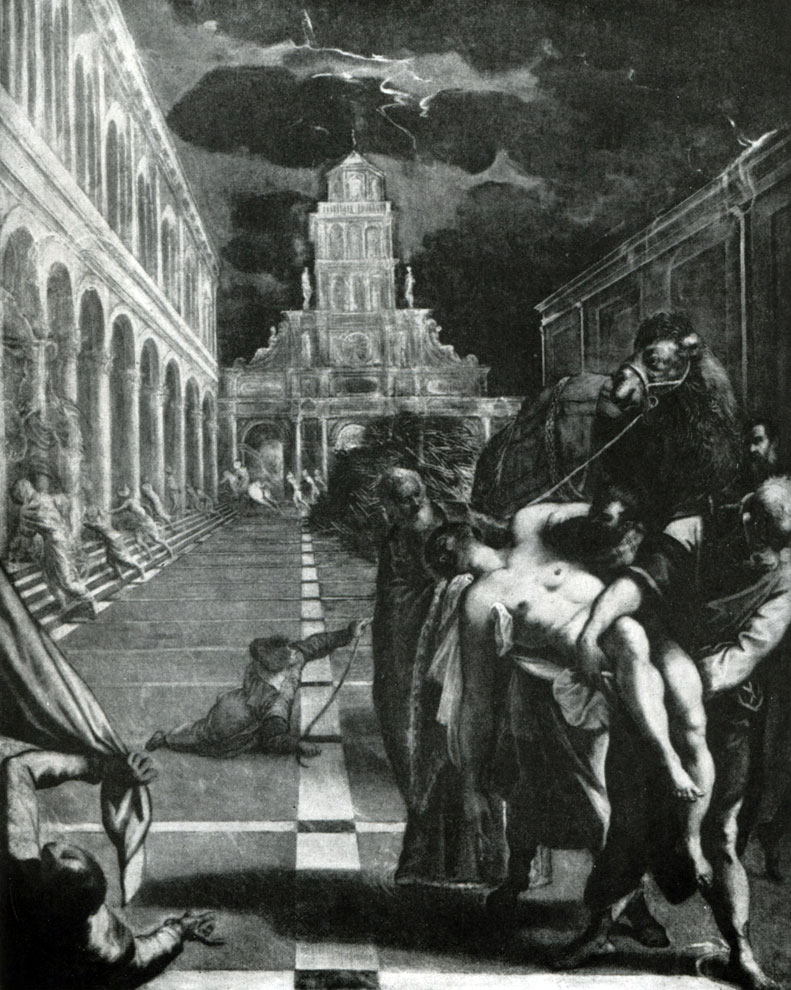
In The Last Supper in the Church of San Trovaso, Tintoretto decisively violates the clear and simple hierarchy of characters so characteristic of, say, Raphael's The School of Athens or Leonardo's The Last Supper. The figures are not in front of the viewer, they are, as it were, snatched from the space of the natural environment. The square table at which Christ and the apostles sit in the semi-basement of the old tavern is given in a sharp diagonal foreshortening. The environment that surrounds the apostles is the most common environment of a common tavern. Chairs woven with straw, wooden stools, a staircase leading to the next floor of the tavern, the dim lighting of a poor room - all this, as it were, is snatched from life. It would seem that Tintoretto returns to the naive narrative of Quattrocentist art, lovingly depicting his characters against the backdrop of the street or their contemporary interior.
But there is also a significant difference here. Firstly, from the time of Giorgione, the Venetians placed their figures directly in the environment itself, not against the background of the room, but in the room. Tintoretto also does not care about the petty love writing out everyday objects so sweet and dear to the Quattrocentist. He wants to convey the very atmosphere of the real environment as a characteristically expressive sphere of action for the characters. Moreover, which is typical of his plebeian democratic sentiments, he emphasizes the commonness of the environment in which the carpenter's son and his students operate.
Tintoretto strives for the integrity of the composition, natural for the finished artwork, but in comparison with the masters of the previous stage, he keenly feels the complex polyphony of life, where the great, the main thing never appears in its pure form.
Therefore, depicting a certain moment full of inner significance in the stream of life, Tintoretto saturates it with diverse, outwardly contradictory motifs: Christ pronounces his words “One of you will betray me” at the very moment when his companions are busy with a wide variety of actions. One of them, holding a cup in his left hand, reached out with his right hand to a large bottle of wine standing on the floor; another bent over a dish of food; the servant, holding some kind of dish, had already gone halfway behind the frame of the picture; a woman sitting on the stairs, indifferent to what is happening, is busy spinning. It was precisely at the time when people were distracted by such diverse activities that the words of the teacher that amazed everyone were heard. They were all united by an instant violent reaction to these terrible words. Those who were not busy with anything managed to respond to them in different ways. One leaned back in surprise, the second clasps his hands indignantly, the third, mournfully pressing his hands to his heart, excitedly bows to his beloved teacher. Those of the disciples who were distracted by their daily affairs seemed to freeze in instant bewilderment. The hand extended to the bottle has hung down and will no longer rise to pour wine; a person bending over a dish will no longer remove its lid. They are also seized by a general outburst of indignant surprise. Thus, Tintoretto is trying to simultaneously convey the complex diversity of the daily course of everyday life and that instantaneous flash of emotion and passion that suddenly unites this group of seemingly heterogeneous people into a single whole.
In the 1550-1560s. Tintoretto creates not only works in which the tragic confusion of the era is already guessed, but also a series of paintings imbued with the desire to escape from the conflicts of reality into the world of a poetic fairy tale, into the world of dreams. But even in them, a keen sense of contrasts and the unsteady instability of a changeable being, albeit in the transformation of a fabulous and poetic form, still makes itself felt.
So, in a 13th-century French story written on the motive. In the painting “The Saving of Arsinoe”, the artist creates, seemingly in the tradition of Renaissance pictorial “poetry”, a charming tale about how a knight and a young man, sailing on a gondola to the foot of a gloomy castle tower rising from the sea, save two naked beauties chained in chains. This is a beautiful poem that takes a person into the world of poetic fiction from the restless and unsteady instability of real life. But with what sharpness the master compares the cold metal cuirass of a knight, in contact with the soft tenderness of the female body, and how unsteady, unstable support is a light boat, swaying on the waves of an unsteady sea.
One of the best paintings from the “poetry” series is Susanna, formally dedicated to the biblical myth, from the Vienna Gallery (c. 1560). The enchanting magic of this composition is irresistible. Firstly, this is one of the paintings in which traces of the rush, often characteristic of Tintoretto, are not felt. It is written with a thin and precise virtuoso brush. The whole atmosphere of the picture is fanned by a peculiarly gentle silvery-bluish coolness, giving it a feeling of freshness and a slight chill. Susanna has just come out of the bath. Her left leg is still submerged in cold water. The radiant body is shrouded in light bluish shadows, it all seems to glow from the inside. The glow of her delicately lush and flexible body, in contrast, is set off by the more viscous texture of the restlessly crumpled folds of a bluish-green towel in the shadows.
In front of her, in the dark olive green of the trellis, roses burn with a pinkish-purple color. In the background, a strip of a stream is silvering, and behind it, written in a light, slightly grayish, pistachio tone, rise the thin trunks of small poplars. The silvery poplars, the cold glow of roses, the shimmer of the calm waters of the pool and the stream, seem to pick up the motif of the radiance of Susanna's naked body and, starting from the brownish-olive background of the shadows and the earth, create that silvery cool and softly shining atmosphere that envelops the whole picture.
Susanna peers into a mirror placed in front of her on the ground, admiring her own reflection. We don't see him. In the shaky pearl surface of the mirror set at an angle to the viewer, only a golden pin and the lacy tip of the towel with which she wipes her feet are reflected. But this is enough - the viewer guesses what he does not see, following the direction of the gaze of the golden-haired Susanna, slightly surprised by her own beauty.
Gorgeous in painting, lively, excitedly bright, and the composition "The Origin of the Milky Way" (London), created in 1570. According to ancient myth, Jupiter, wanting to reward immortality for his baby, born of a mortal woman, ordered to press him to Juno's chest in order to if he drank the milk of the goddess, he himself would become immortal. From the splashes of milk taken by surprise and recoiling in fright, Juno arose Milky Way, encircling the sky. The composition, full of restless trepidation, is built on the contrast of the maid of Jupiter rapidly invading from the depths of space and the gently lush pearl body of the naked goddess leaning back in surprise. The contrast of the sharp flight of the maid and the soft tenderness of the movements of the beautiful goddess is full of extraordinary sharpness and charm.
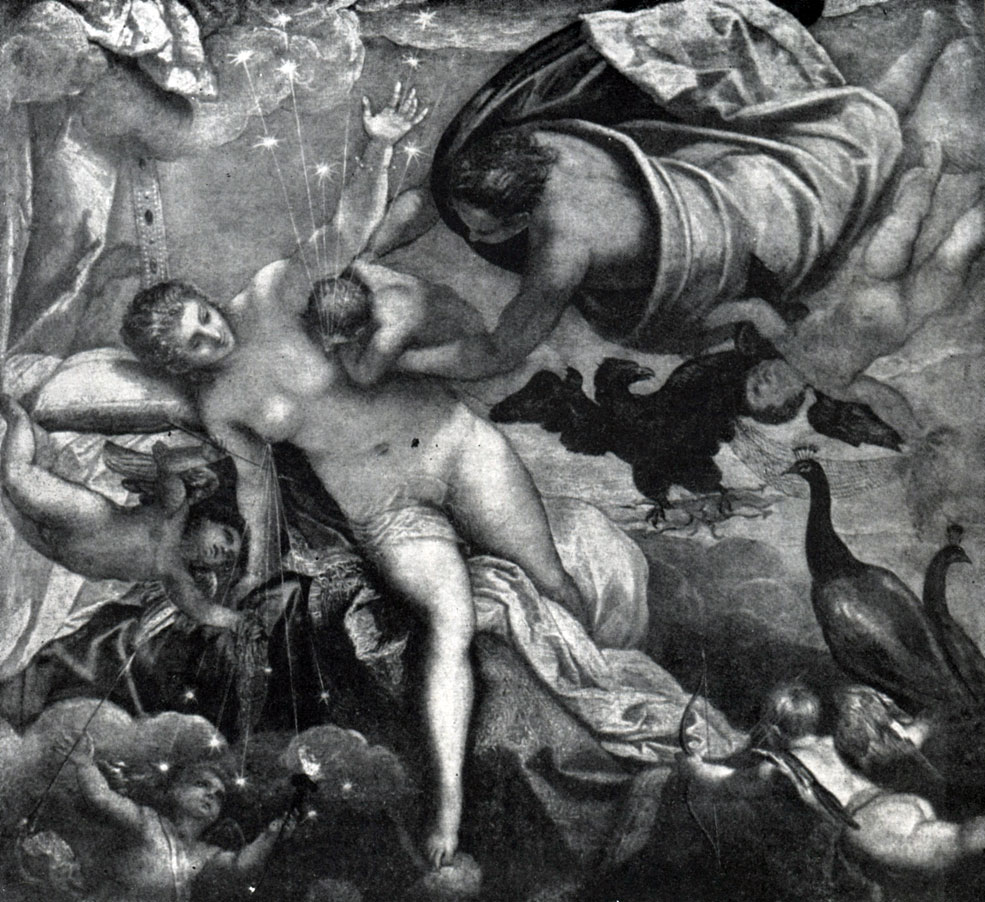
But these dreamily tender dreams of "poetry" are only one facet in the master's work. Its main pathos is different. The stormy movement of human masses, filling the vast world, more and more attracts the attention of the artist.

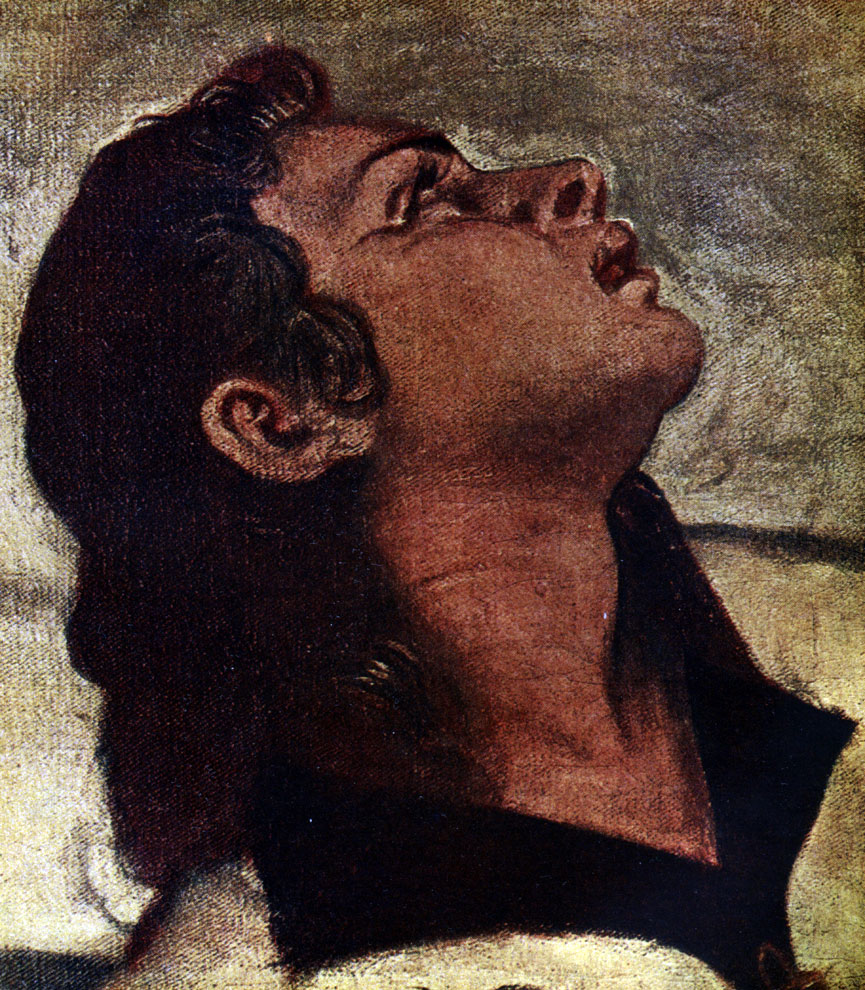
Fig. pp. 280-281
The tragic conflicts of time, the sorrow and suffering of people are expressed with particular force, although, as was typical of the era, in an indirect form, in The Crucifixion (1565), created for the scuola di San Rocco and characteristic of the second period of Tintoretto's work. The picture fills the entire wall of a large square room (the so-called Alberto) adjoining the huge upper hall. This composition, covering not only the scene of the crucifixion of Christ and two thieves, includes the disciples clinging to the cross, and the crowds of people surrounding them. It makes an almost panoramic impression from the point of view from which it is viewed, as the light pouring through the windows of both side walls, as it were, expands the entire room. The interweaving of two opposite streams of light, changing as the sun moves, enlivens the picture with its colors, either smoldering, or flashing, or fading. The composition itself does not immediately appear before the viewer in all its integrity. When the viewer is in a large hall, then only the foot of the cross and the group of disciples of the crucified man, embraced by grief, are visible in the gap of the door. Some with care and sadness bend over their broken mother; others in passionate despair turn their eyes to the executed teacher. He, raised by the cross high above the people, is not yet visible. The group forms a complete, self-contained composition, clearly limited by the door frame.
But the look of John and the shaft of the cross going up indicate that this is only part of a wider and more comprehensive composition. The viewer comes to the door, and he can already see Christ exhausted by suffering, a beautiful and strong man, with tender sadness bowing his face to his family and friends. Another step - and in front of the viewer who entered the room, a huge picture unfolds in its entire breadth, populated by crowds of people, confused, curious, triumphant and compassionate. In the midst of this surging sea of people, a lone group of people clung to the foot of the cross.
Christ is surrounded by an indescribable radiance of colors, phosphorescent against the background of a gloomy sky. His outstretched hands, nailed to the crossbar, seem to embrace this restless noisy world in a wide embrace, blessing and forgiving it.
"Crucifixion" is really a whole world. It cannot be exhausted in one description. As in life, everything in it is unexpected and at the same time necessary and significant. The Renaissance plastic modeling of characters and the deep clairvoyance of the human soul are also striking. With cruel truthfulness, the artist also sculpts the image of a bearded chief on a horse, looking at the execution with swaggering complacency, and an old man, with sad tenderness, bending over the exhausted Mary, and young John, in mournful ecstasy, turned his gaze to the dying teacher.
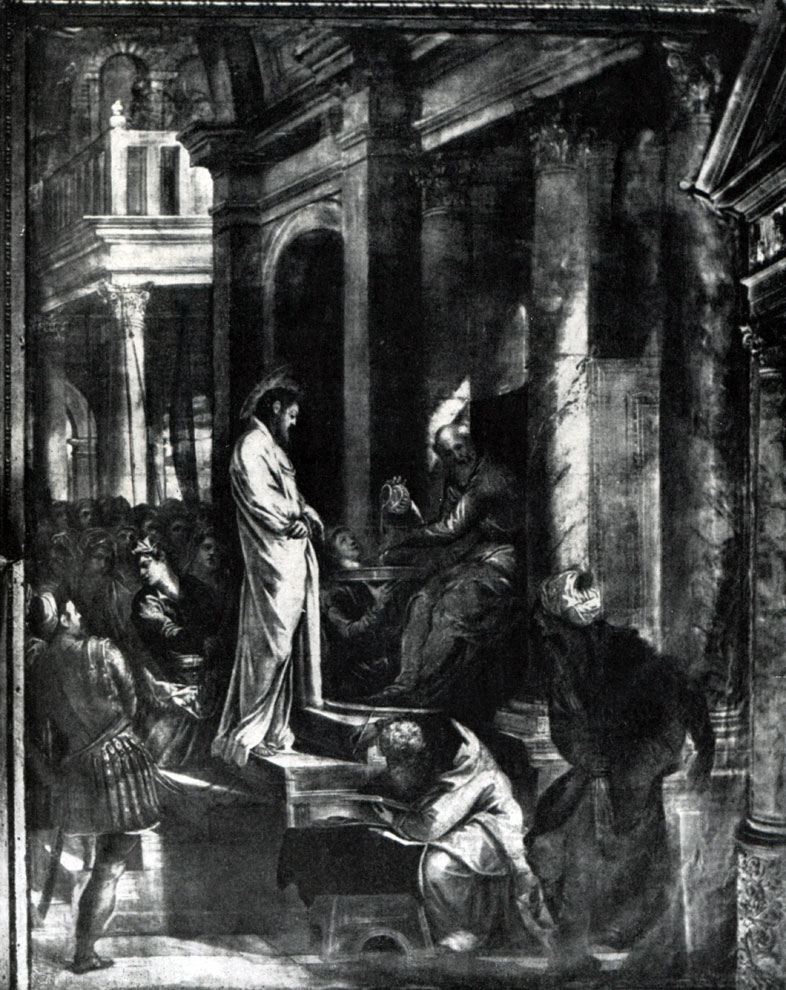
The composition of the "Crucifixion" is complemented by two panels placed on the wall opposite, on the sides of the door - "Christ before Pilate" and "Carrying the Cross", embodying the main stages of the "passion of Christ". Taken together, these three works form a complete ensemble both in compositional and figurative terms.
Interest in large monumental cycles is a characteristic feature of the mature and late Tintoretto, who strives precisely in the “many-voiced” change of images that echo and contrast with each other to convey his idea of \u200b\u200bthe elemental power and the complex dynamics of being. They were most fully revealed precisely in the gigantic ensemble of the Scuola di San Rocco, unprecedented for oil painting, consisting of several dozen canvases and plafonds - the upper (1576-1581) and lower (1583-1587) large backs. Among them, the Last Supper, permeated with swift drama; imbued with elegiac dreaminess and a subtle sense of the merging of the human soul with the natural world, “Mary of Egypt in the Desert” (lower hall); full of hidden tension and anxiety "The Temptation of Christ"; the formidably majestic “Moses cutting water from a stone”, showing the tense struggle of a titan with the elemental forces of a hostile nature.
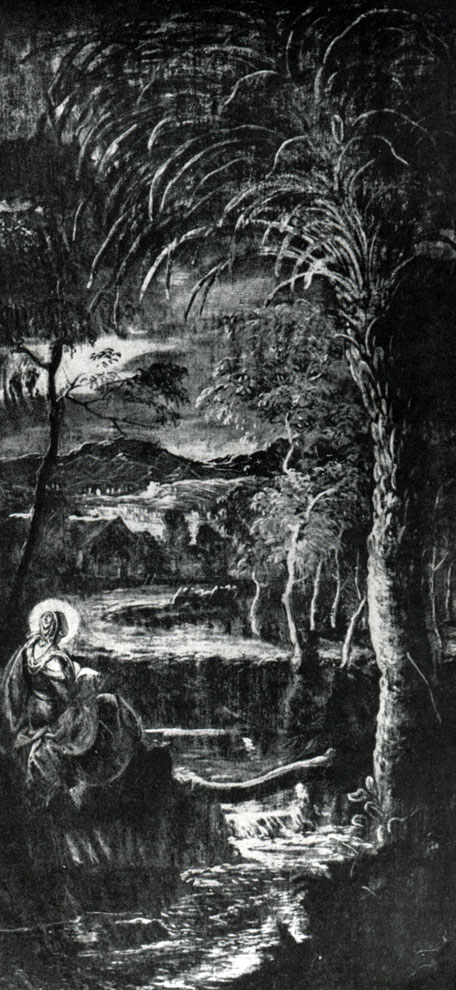
In some of the works of the San Rocco cycle, the folk underlying basis of Tintoretto's work comes out especially clearly. This is his "Adoration of the Shepherds". The plebeian situation of a two-tier barn, typical for peasant farms of a terra-farm, captured from life, is characteristic (on the floor of the upper tier, where hay was stored for livestock, Maria and the baby took shelter). At the same time, the unusual lighting, the agitation of the movements of the shepherds bringing their modest gifts transform this scene, revealing the inner significance of the event.
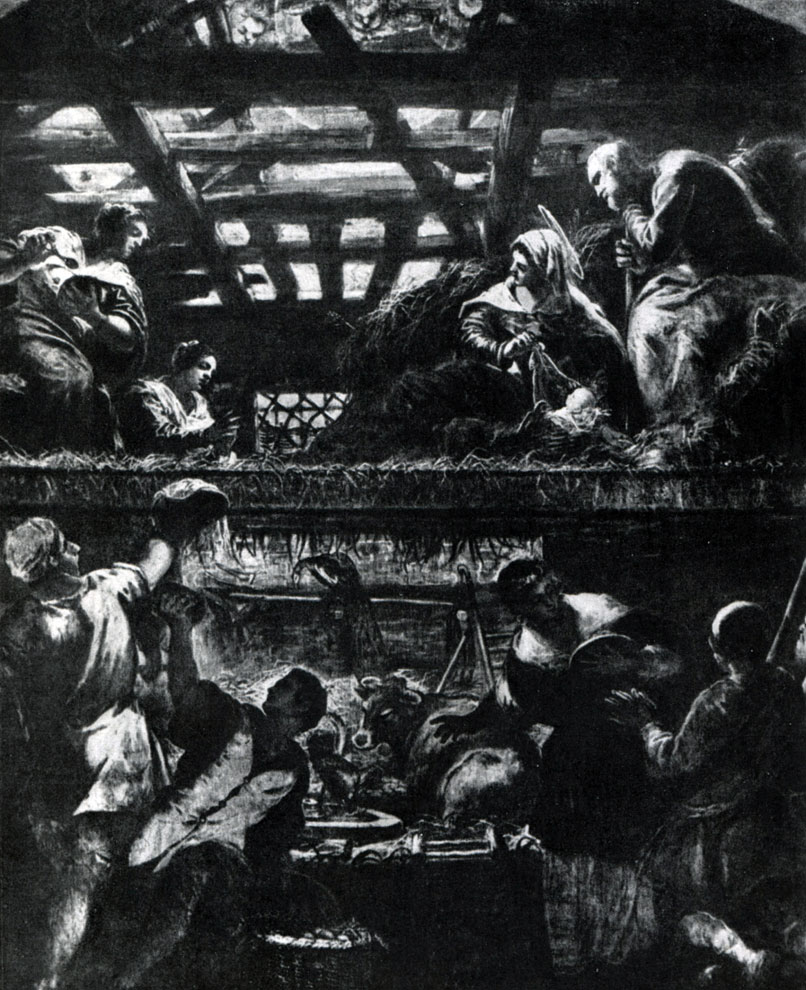
The appeal to the image of large masses of people as the main character of the work is typical of a number of other works of Tintoretto of the last period.
So, in the last period of his work, he creates for the Doge's Palace and Venice one of the first historical paintings in the proper sense of the word - "The Battle of Dawn" (c. 1585). On a huge canvas that fills an entire wall, Tintoretto depicts crowds engulfed in the fury of battle. However, in The Battle of Dawn, Tintoretto does not seek to give a kind of land map of battles, as the masters of the 17th century sometimes did later. He is more concerned with the transmission of the diverse rhythms of battle. In the picture, either groups of archers throwing arrows, then horsemen who have come down in battle, then crowds of infantrymen slowly moving in the attack, then a group of artillerymen, dragging a heavy cannon with tension, alternate. The flash of red and gold banners, the heavy puffs of gunpowder smoke, the swift years of arrows, the dull flickering of light and shadow convey the dramatic brightness and complex polyphony of the roar of the unfolding battle. It is no coincidence that Tintoretto Surikov, the great master of depicting folk life, a complex, many-sided human collective, fell in love with him so much.
His "Paradise" (after 1588) also belongs to the later period - a huge composition occupying the entire end wall of the grandiose main hall of the Doge's Palace. The picture is written in detail rather carelessly and has darkened very much with time. An idea of the original pictorial character of this composition can be given by its large sketch kept in the Louvre.
"Paradise" and especially "The Battle of Dawn" by Tintoretto, of course, do not formally conflict with the imposingly festive ensemble of the Doge's Palace, glorifying the magnificent power of patrician Venice already going to sunset. And yet, their images, feelings and ideas that they evoke are much broader than an apology for the fading greatness of the Venetian power, and, in essence, are imbued with a sense of the complex significance of life and experiences, if not of the people in our understanding, then of the people's crowd, the people's mass.
Like the last bright flash of a dying lamp, the gift of the master, standing at the end of his long journey, is revealed in The Gathering of Manna and The Last Supper in the Church of San Giorgio Maggiore (1594).
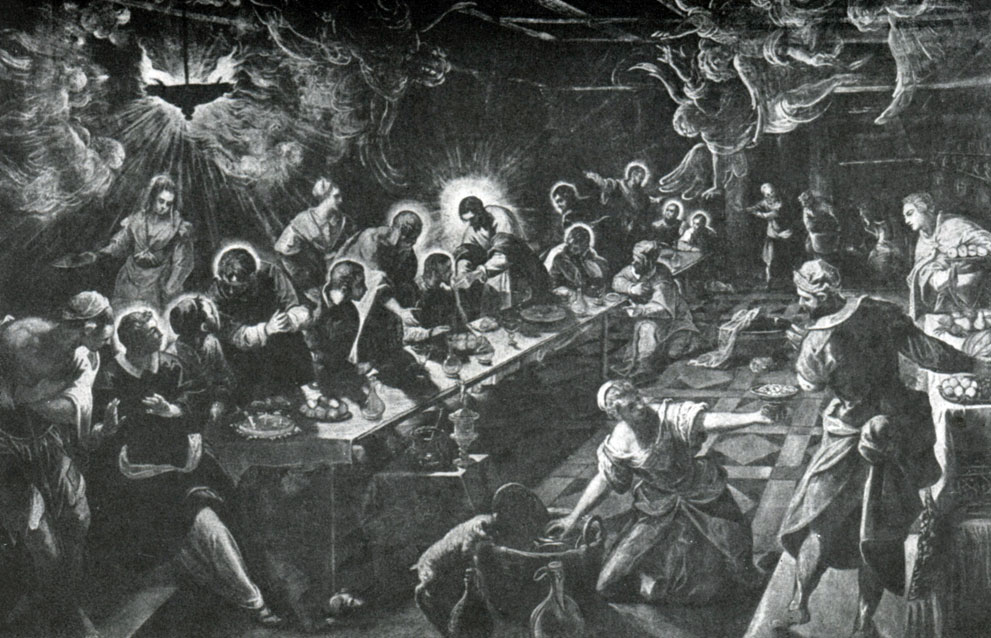
These last works of his are distinguished by a complex atmosphere of agitated feelings, enlightened sadness, deep meditation. The dramatic sharpness of the clashes, the stormy movements of the masses, the sharp outbursts of impetuous passion - everything appears here in a softened, clarified embodiment.
At the same time, the outwardly relatively restrained movements of the apostles who partake of Christ are full of enormous concentrated inner spiritual strength. And although they are sitting at a table that goes diagonally into the depths of a long, low room, and the foreground shows the figures of energetically moving servants and maids, the viewer’s attention is riveted on the apostles. The light, gradually growing, dispersing the darkness, flooding Christ and his disciples with its magical phosphorescent radiance, it is this light that singles them out, focuses our attention on them.
The flickering symphony of light creates a feeling of magic, transforming a seemingly ordinary event into a miracle of revealing the excited spiritual communication of a small group of people who are faithful to each other, to the teacher and to some great idea. Streams of dazzling radiance exude modest copper lamps suspended from the ceiling; swirling vaporous light clouds condense into incorporeal, ghostly images of angels, a fabulously whimsical light glides over the surface of the shimmering, lit up with a quiet colored radiance of ordinary objects of the modest decoration of the room.
In The Gathering of Manna, a gentle shining silvery-greenish light envelops the bright distances, gently glides over the bodies and clothes of the figures of the foreground and middle ground, as if revealing the beauty and poetry of people engaged in simple ordinary labors: a spinner at the machine tool, a blacksmith, laundresses rinsing linen , a peasant driving a mule. And somewhere off to the side, a few women are picking up grains of manna. No, but the manna that feeds the people falls from heaven. The miracle lies elsewhere, in the poetry of labor consecrated by its moral beauty.
In these farewell works of the enlightened genius, Tintoretto, perhaps, is closest to all the masters of the 16th century. approaches Rembrandt, his sense of deep poetry and the significance of the moral world of an ordinary person. But it is precisely here that the decisive difference between the art of Tintoretto and the great realist of the 17th century is most clearly revealed. Tintoretto is characterized by a desire for wide crowded canvases and an elevated heroic interpretation of the image coming from the tradition of the Renaissance, while Rembrandt's images are full of modest concentration, self-immersion, they seem to involuntarily reveal the beauty of their inner moral world. Light streams pouring from big world, flood the heroes of Tintorett's compositions with their waves: in Rembrandt - a soft glow, as if exuded by people who are sad, calmly rejoicing, listening to each other, disperses the deaf darkness of the surrounding space.
Although Tintoretto was not such a born portrait painter as Titian, he left us a large, albeit uneven in quality, portrait gallery. The best of these portraits are, of course, artistically very significant and occupy an important place in the development of the portrait of modern times.
Tintoretto in his portraits strives not so much to reveal, first of all, the unique individuality of a person, but to show how some universal human emotions, feelings, moral problems typical of the time are refracted through the originality of the human individual character. Hence a certain softness in the transfer of traits of individual similarity and character, and at the same time the extraordinary emotional and psychological content of his images.
The originality of Tintorett's portrait style was determined no earlier than the mid-1550s. Thus, the images of earlier portraits, for example, a male portrait (1553; Vienna), are more likely to be distinguished by a great material tangibility, restrained gesture dynamics and a general indefinite pensive mood of mood than by the tension of their psychological state.
Among these early portraits, perhaps the most interesting is the generational portrait of a Venetian (late 1540s - early 1550s; Dresden Gallery). General state noble dreaminess is conveyed here especially subtly and poetically. A touch of affectionate femininity is restrainedly woven into it.
In later portraits, for example, in the portrait of Sebastiano Venier (Vienna) and especially in the Berlin portrait of an old man, the images achieve great spiritual, psychological depth and dramatic power of expression. The characters in Tintoretta's portraits are often seized with deep anxiety, mournful reflection.

Such is his self-portrait (1588; Louvre). From the vague darkness of an indefinitely unsteady background, the mournful, haggard face of the old master, illuminated by a restless, uncertain, as if fading light, emerges. It is devoid of any representativeness or physical beauty, it is the face of an old man tired, exhausted by heavy thoughts and moral suffering. But the inner spiritual beauty, the beauty of the moral world of a person, transforms his face, gives it extraordinary strength and significance. At the same time, this portrait does not have that feeling of intimate connection, a quiet intimate conversation between the viewer and the person being portrayed, or the viewer's participation in the hero's spiritual life, which we feel in the portraits of the late Rembrandt. The gaze of Tintoretto's wide-open mournful eyes is directed at the viewer, but he glides past him, he is turned into an infinite distance or, what is the same, inside himself. At the same time, in the absence of any external gesticulation (this is a bust portrait, where the hands are not depicted), the restless rhythm of light and shadow, the almost feverish nervousness of the stroke with exceptional force convey a feeling of inner turmoil, a restless outburst of thought and feeling. This is a tragic image of a wise old man, seeking and not finding an answer to his mournful questions turned to life, to fate.
In extremely close connection with architecture, sculpture also developed in Venice. The sculptors of Venice more often performed work directly related to the monumental decoration of magnificent Venetian buildings than with work on an independent sculptural monument or easel sculpture. It is no coincidence that the greatest master of Venetian sculpture was the architect Jacopo Ansovino (1486-1570).
Naturally, in his monumental and decorative works, the sculptor Sansovino subtly felt the intention of Sansovino the architect. Such synthetic works, where the master acts both as a sculptor and as an architect, for example, the beautiful logetta in Piazza San Marco (1537), are distinguished by an amazing harmonious unity of noble festive architectural forms and the reliefs and round statues that adorn them.
In general, the art of Sansovino, especially in the early period of his work, is closely connected with the art of the High Renaissance. The peculiarity of his early works is the subtle feeling of the soft play of chiaroscuro, the free fluidity of rhythm, which connect the plasticity of Sansovino even before he moved to Venice with the general tendencies characteristic of Venetian art as a whole. These, so to speak, picturesque features of Sansovino's plasticity are clearly reflected for the first time in his statue of the young Bacchus (1518), located in the Florentine National Museum.
Sansovino settled in Venice after 1527, where the entire further creative life of the artist took place. During this period, on the one hand, there is an increase in pictorial trends in Sansovino's multi-figured relief compositions, for example, in his bronze reliefs dedicated to the life of St. Mark (Cathedral of San Marco in Venice). Despite the fact that these reliefs are built on the principle of perspective relief, the sharp play of chiaroscuro, the violation of the front plane of the relief by bold angles, the image of the cloudy sky on the back plane of the relief give a pronounced picturesqueness and emotional dynamics to these works. In later reliefs for the bronze doors of the sacristy of the Cathedral of San Marco, Sansovino consistently refers to the techniques of perspective relief, and in order to more strongly convey a sense of the depth of space, he makes the surface of the doors concave. Essentially speaking, the last reliefs in their emotional "painting" to some extent echo the works of the late Titian and early Tintoretto.
In statuary plastic, the mature Sansovino, continuing to create images full of heroic beauty and grandeur, seeks to connect them as actively as possible with the surrounding spatial environment. Hence the “painterly” freedom of angles, hence the desire, when he decorates the facade of a building with several statues, to interconnect these statues with a common rhythm, a kind of compositional roll-call of the motives of the juxtaposed movements. Although each of them is placed in a separate niche and, it would seem, isolated from one another, some common rhythmic thrill, some kind of emotional echo binds them into a kind of single emotional-imaginative whole.
In the late period of Sansovino's work, that feeling of breakdown, rhythmic unrest, which is generally characteristic of the Italian late Renaissance, finds expression in his works. Such, in particular, is the image of the young, exhausted by internal contradictions, John the Baptist.
Alessandro Vittoria (1525-1608) worked from the age of twenty in Venice. He was a student of Sansovino and participated with him in the implementation of large monumental and decorative works (he owns the caryatids of the gates of the Sansovino Library, 1555, the statue of Mercury in the Doge's Palace, 1559). Worthy of mention is the gravestone of Doge Venier (1555; Venice). Among his works of the late period, imbued with Mannerist influences, John the Baptist (1583; Treviso) stands out. His portraits are noteworthy, distinguished by their liveliness of characteristics and effective composition. Such are the busts of Marcantonio Grimani, Tommaso Rangone and others. Vittoria was also the creator of a remarkable series of small bronze sculptures that adorned the rich secular interiors of that time, as well as churches, such as, for example, his elegantly whimsical candelabra of the Chapel del Rosario. His works of this kind are closely connected with the general development of Italian applied art.
Giorgione(Italian Giorgione, real name Giorgio Barbarelli da Castelfranco, Giorgio Barbarelli da Castelfranco; circa 1478, Castelfranco - 1510, Venice), Italian artist, the first in a galaxy of leading masters of Venetian Cinquecento painting of the 16th century. With sufficient certainty, Giorgione, who lived a very short life, is attributed quite a bit, one or two (depending on the severity of the scientists-attributors) a dozen paintings, and all the most characteristic and famous of them each individually represent an exciting, still unsolved mystery. . The fact is that Giorgione, much more decisively than all his contemporaries (even such as Leonardo da Vinci or Raphael), moved from compositions based on clear symbolic programs to free poetic improvisations, the meaning of which whimsically changes depending on the mood of the viewer. This dreamy lyricism is associated with his remarkable skill in painting: Giorgione (Giorgione; actually Giorgio Barbarelli da Castelfranco, Barbarelli da Castelfranco) (1476 or 1477–1510), an Italian painter, one of the founders of the art of the High Renaissance, was also famous as a skilled singer and musician . Giorgione was the first of all Italian painters to devote himself to religious, mythological and historical paintings an important place for a poetically invented, beautiful, and not alien to natural landscape. Preserving the clarity of volumes and the melodic expressiveness of contours, characteristic of the art of the Early Renaissance, Giorgione, with the help of transparent chiaroscuro, achieved a visual fusion of human figures with the landscape. Giving warmth and freshness to the sound of the main color spots, he combined them with many colorful nuances, interconnected with gradations of lighting and gravitating towards tonal unity.
Judith, 1504 Three Philosophers, 1508 Thunderstorm, 1505-1508 Sleeping Venus Madonna in a Landscape, 1503 Three Ages of Life 1505-1510
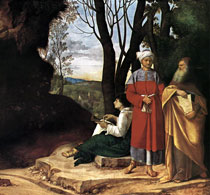
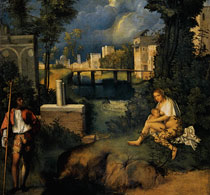
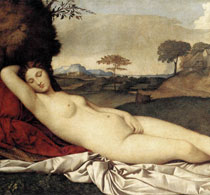
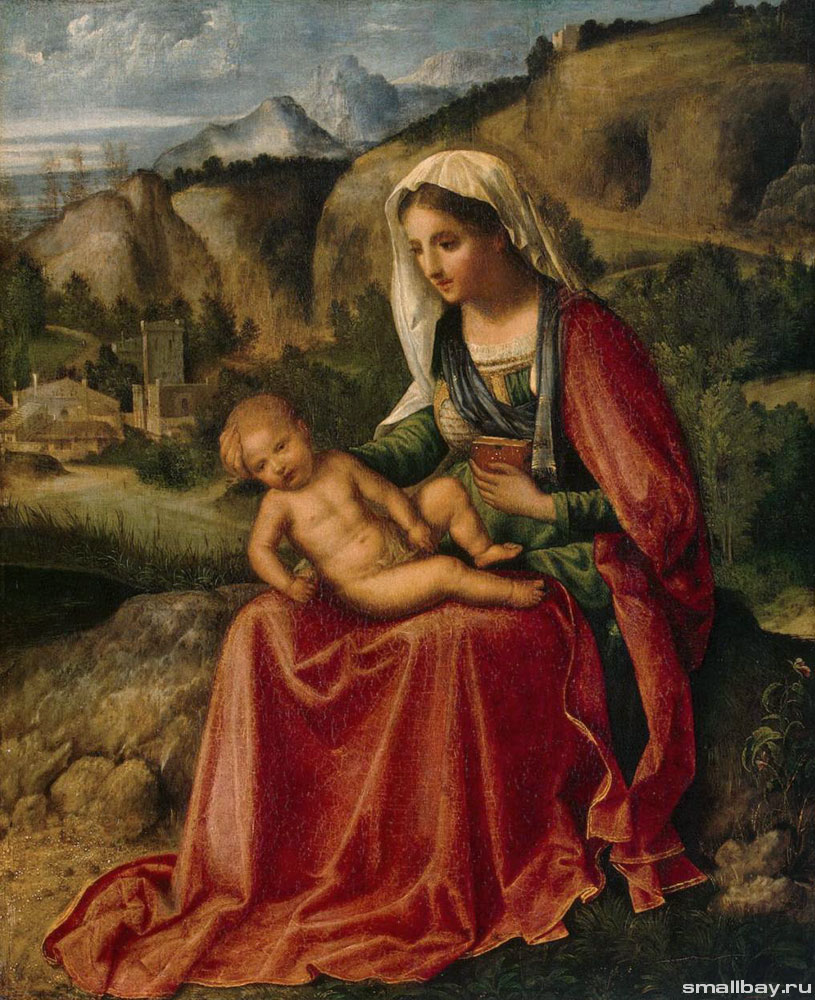

Titian(actually Tiziano Vecellio, Tiziano Veccellio) (circa 1488/1490 - 1576), Italian painter of the High and Late Renaissance. He studied in Venice with Giovanni Bellini, in whose workshop he became close to Giorgione; worked in Venice, as well as in Padua, Ferrara, Mantua, Urbino, Rome and Augsburg. Closely associated with the artistic circles of Venice (Giorgione, architect Jacopo Sansovino, writer Pietro Aretino), an outstanding master of the Venetian school of painting, Titian embodied in his work the humanistic ideals of the Renaissance. His life-affirming art is distinguished by its versatility, breadth of coverage of reality, and disclosure of the deep dramatic conflicts of the era. Interest in the landscape, poetry, lyrical contemplation, subtle coloring. Calm and joyful images of his paintings are marked during this period by vital plethora, brightness of feelings, inner enlightenment; The colors of Titian's later works are based on the finest colorful chromatism: the color scheme, generally subordinate to a golden tone, is built on subtle shades of brown, blue-steel, pink-red, faded green. In the late period of his work, Titian reached the heights both in his pictorial skill and in the emotional and psychological interpretation of religious and mythological themes. The life-affirming beauty of the human body, the fullness of the surrounding world became the leading motif of the artist’s works with scenes drawn from ancient mythology (“Danae”, around 1554, “Venus in front of a mirror”, 1550s,
Love earthly and heavenly Flora Danae Venus in front of a mirror A young man with a torn glove,
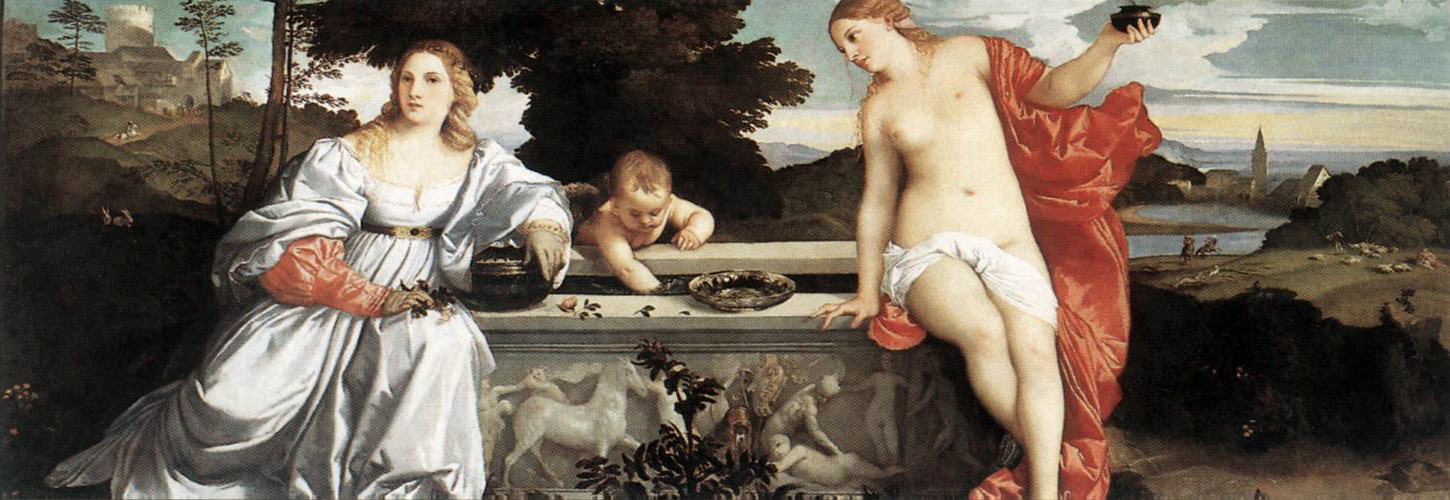
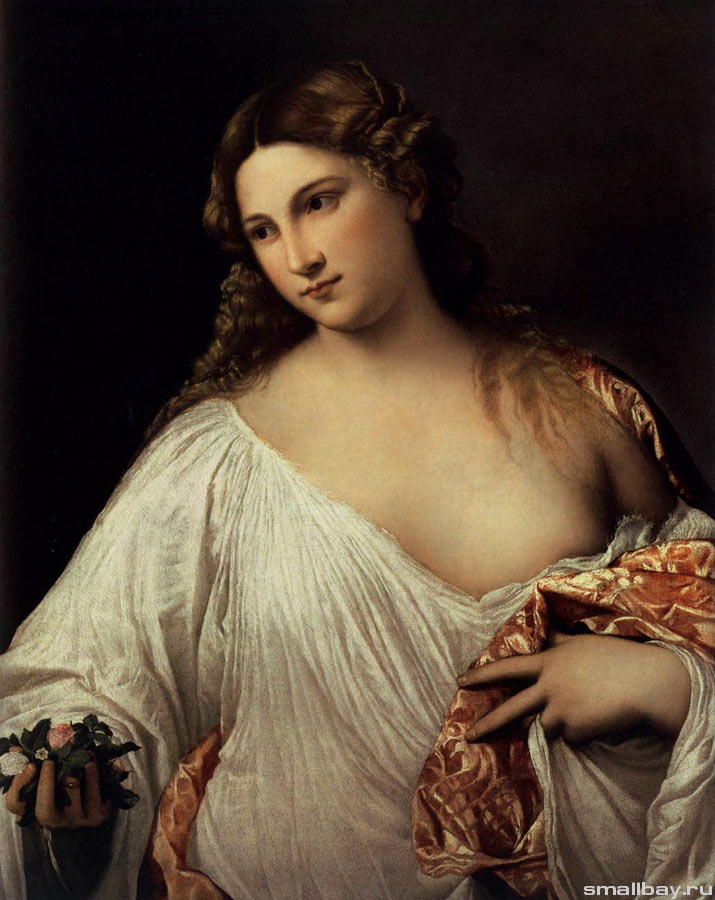
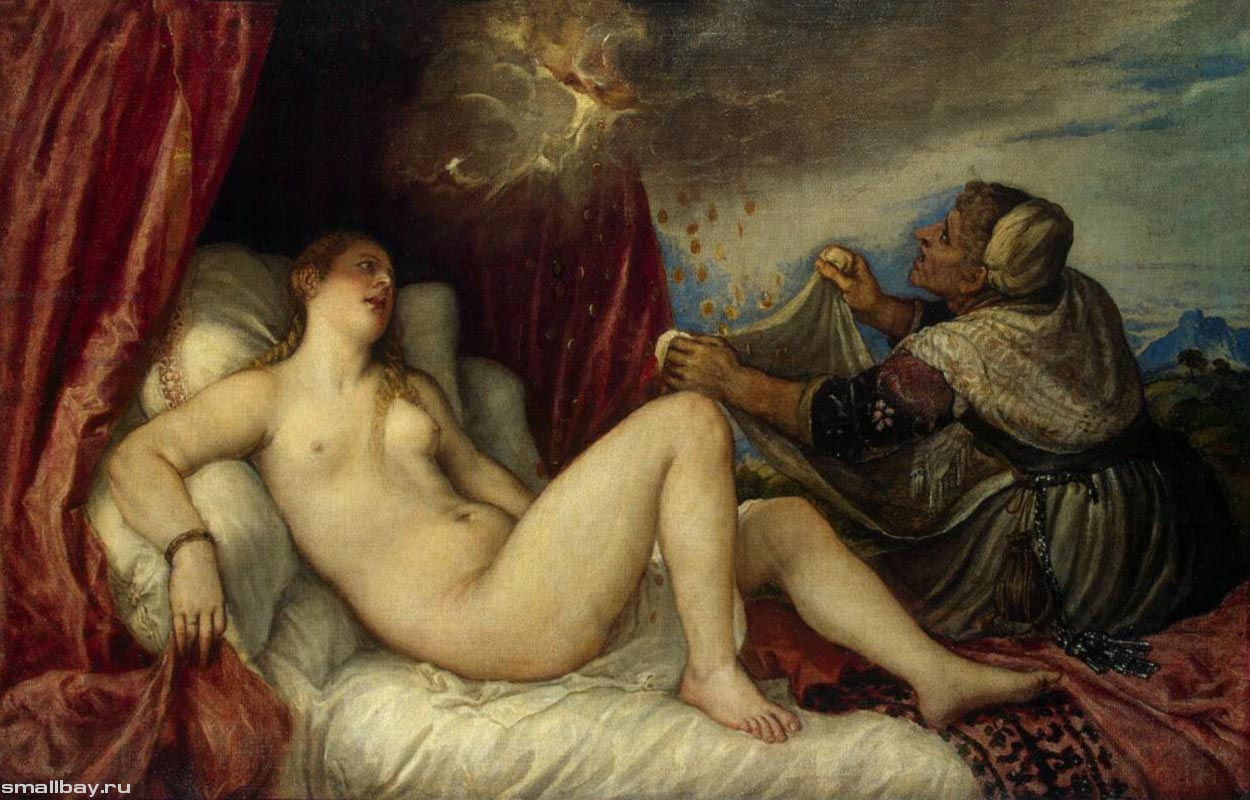

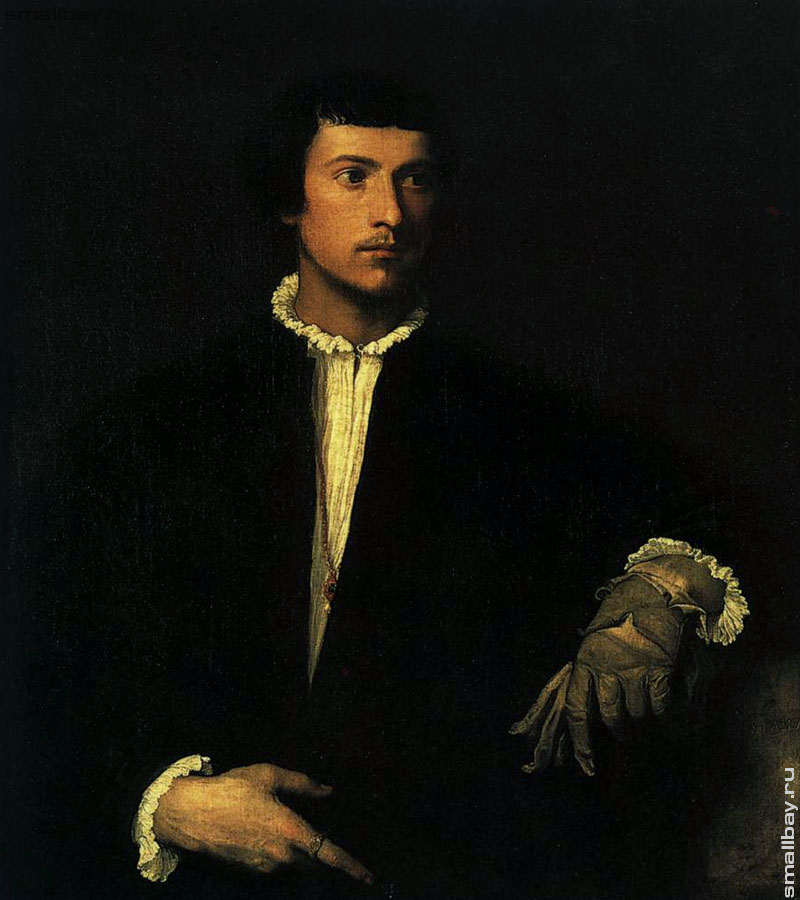
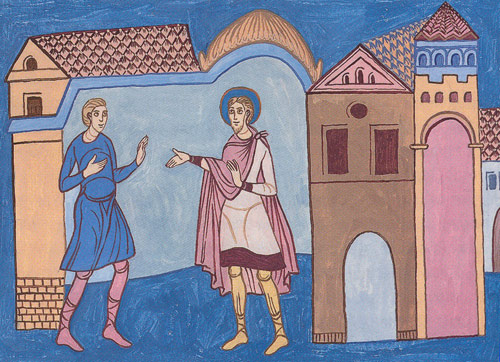
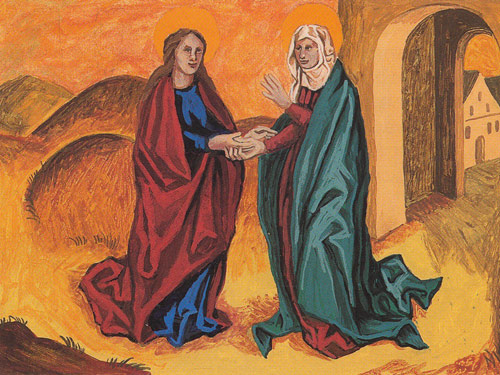
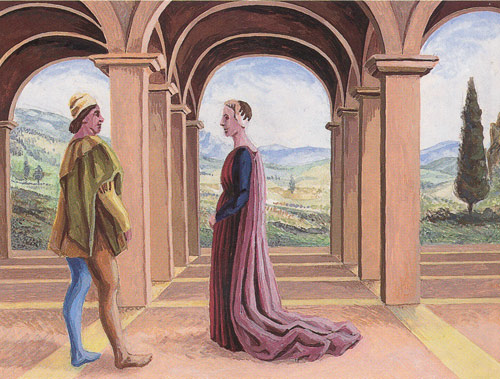
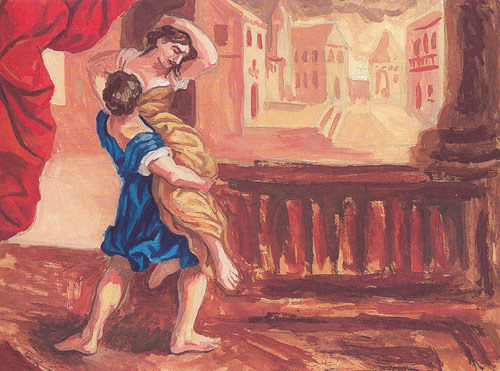
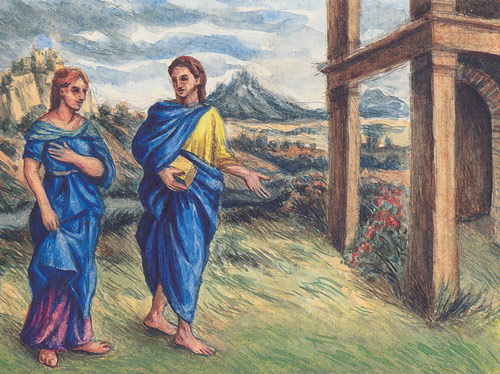
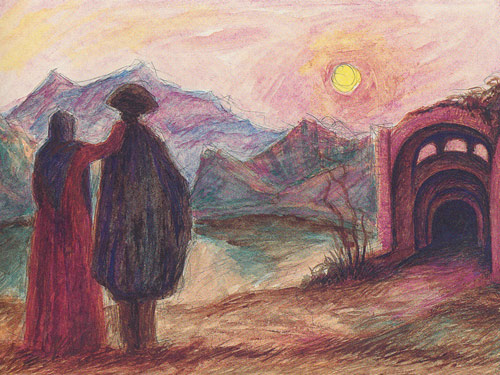

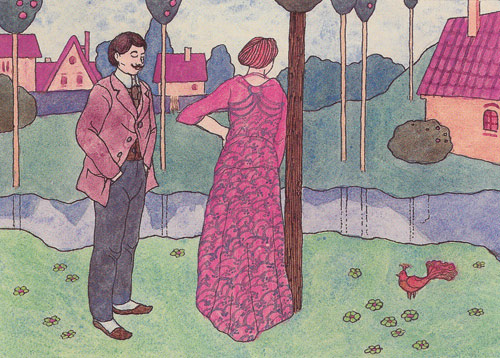
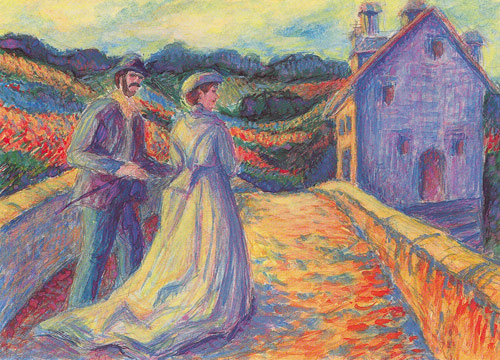
Obviously, the complexity of the social development of the 20th century, the scientific and technological revolution and the signs accompanying it, contributed to the fact that other great styles after modernity no longer appeared. Gradually, painting becomes independent, freed from the historical articulation of styles, and develops in its own direction. Historical development classical painting (historical styles) the Impressionists ended up with their subjective understanding of realism.
In the ordinary work of artists, in contrast to galleries and fiction, we very rarely come across characteristic paintings of a certain style. We are talking about a combination, the influence of any of the styles on the artist, etc. For the picture, its quality is important, and not whether it was written by the artist in a certain pictorial style. Fine styles will become history, and a good picture will always be alive.
The art of Venice represents a special version of the development of the very principles of the artistic culture of the Renaissance and in relation to all other centers of Renaissance art in Italy.
Chronologically, the art of the Renaissance took shape in Venice somewhat later than in most other major centers of Italy of that era. It took shape, in particular, later than in Florence and in general in Tuscany. The formation of the principles of the artistic culture of the Renaissance in the fine arts of Venice began only in the 15th century. This was determined by no means by the economic backwardness of Venice. On the contrary, Venice, along with Florence, Pisa, Genoa, Milan, was one of the most economically developed centers of Italy at that time. It is precisely the early transformation of Venice into a great commercial and, moreover, predominantly commercial, rather than a productive power, which began from the 12th century and was especially accelerated during the crusades, is to blame for this delay.
The culture of Venice, this window of Italy and Central Europe, "cut through" to the eastern countries, was closely connected with the magnificent grandeur and solemn luxury of the imperial Byzantine culture, and partly with the refined decorative culture of the Arab world. Already in the 12th century, that is, in the era of the dominance of the Romanesque style in Europe, a rich trading republic, creating art that asserts its wealth and power, widely turned to the experience of Byzantium, that is, the richest, most developed Christian medieval power at that time. In essence, the artistic culture of Venice as early as the 14th century was a kind of interweaving of magnificent and festive forms of monumental Byzantine art, enlivened by the influence of the colorful ornamentation of the East and a peculiarly elegant rethinking of the decorative elements of mature Gothic art.
A characteristic example of the temporary delay of Venetian culture in its transition to the Renaissance in comparison with other areas of Italy is the architecture of the Doge's Palace (14th century). In painting, the extremely characteristic vitality of medieval traditions is clearly reflected in the late Gothic work of masters of the late 14th century, such as Lorenzo and Stefano Veneziano. They make themselves felt even in the work of such artists of the 15th century, whose art already bore a completely Renaissance character. Such are the "Madonnas" of Bartolomeo, Alvise Vivarini, such is the work of Carlo Crivelli, a subtle and elegant master early renaissance. In his art, medieval reminiscences are felt much stronger than those of his contemporary artists of Tuscany and Umbria. It is characteristic that the proto-Renaissance tendencies proper, similar to the art of Cavalini and Giotto, who also worked in the Venetian Republic (one of his best cycles was created for Padua), made themselves felt weakly and sporadically.
Only approximately from the middle of the 15th century can we say that the inevitable and natural process of the transition of Venetian art to secular positions, characteristic of the entire artistic culture of the Renaissance, finally begins to be fully realized. The peculiarity of the Venetian quattrocento was mainly reflected in the desire for increased festivity of color, for a peculiar combination of subtle realism with decorativeness in the composition, in a greater interest in the landscape background, in the landscape environment surrounding a person; moreover, it is characteristic that interest in the urban landscape, perhaps, was even more developed than interest in the natural landscape. It was in the second half of the 15th century that the formation of the Renaissance school in Venice took place as a significant and original phenomenon that occupied an important place in the art of the Italian Renaissance. It was at this time that, along with the art of the archaic Crivelli, the work of Antonello da Messina took shape, striving for a more holistic, generalized perception of the world, a poetic-decorative and monumental perception. Not much later, a more narrative line in the development of the art of Gentile Bellini and Carpaccio appears.
This is natural. Venice by the middle of the 15th century reaches the highest degree of its commercial and political heyday. The colonial possessions in the trading post of the "Queen of the Adriatic" covered not only the entire eastern coast of the Adriatic Sea, but also spread widely throughout the eastern Mediterranean. In Cyprus, Rhodes, Crete, the banner of the Lion of St. Mark flutters. Many of the noble patrician families that make up the ruling elite of the Venetian oligarchy act overseas as rulers of large cities or entire regions. The Venetian fleet firmly controls almost the entire transit trade between East and Western Europe.
True, the defeat of the Byzantine Empire by the Turks, which ended with the capture of Constantinople, shook the trading positions of Venice. Yet by no means can one speak of the decline of Venice in the second half of the 15th century. The general collapse of the Venetian eastern trade came much later. The Venetian merchants invested huge funds for that time, partially released from trade, in the development of crafts and manufactories in Venice, partly in the development of rational agriculture in their possessions located on the peninsula adjacent to the lagoon (the so-called terra farm).
Moreover, in 1509-1516, the rich and still full of vitality republic was able, by combining force of arms with flexible diplomacy, to defend its independence in a difficult struggle with a hostile coalition of a number of European powers. The general upsurge caused by the outcome of this difficult struggle, which temporarily rallied all sections of Venetian society, caused the growth of the features of heroic optimism and monumental festivity that are so characteristic of the art of the High Renaissance in Venice, starting with Titian. The fact that Venice retained its independence and, to a large extent, its wealth, determined the duration of the heyday of the art of the High Renaissance in the Venetian Republic. The turn to the late Renaissance was outlined in Venice somewhat later than in Rome and Florence, namely, by the mid-40s of the 16th century.
art
The period of maturation of the prerequisites for the transition to the High Renaissance coincides, as in the rest of Italy, with the end of the 15th century. It was during these years that, in parallel with the narrative art of Gentile Bellini and Carpaccio, the work of a number of masters of a new artistic direction, so to speak: Giovanni Bellini and Cima da Conegliano, took shape. Although in time they work almost simultaneously with Gentile Bellini and Carpaccio, they represent the next stage in the logic of the development of the art of the Venetian Renaissance. These were the painters, in whose art the transition to a new stage in the development of Renaissance culture was most clearly outlined. This was especially clearly revealed in the work of the mature Giovanni Bellini, at least to a greater extent than even in the paintings of his younger contemporary Cima da Conegliano or his younger brother, Gentile Bellini.
Giovanni Bellini (apparently born after 1425 and before 1429; died in 1516) not only develops and improves the achievements accumulated by his immediate predecessors, but also raises Venetian art and, more broadly, Renaissance culture as a whole to a higher level . The artist has an amazing sense of the monumental significance of the form, its inner figurative-emotional content. In his paintings, the connection between the mood created by the landscape and the state of mind of the heroes of the composition is born, which is one of the remarkable achievements of modern painting in general. At the same time, in the art of Giovanni Bellini - and this is the most important - the significance of the moral world of the human personality is revealed with extraordinary force.
At an early stage of his work, the characters in the composition are still very static, the drawing is somewhat harsh, the combinations of colors are almost sharp. But the feeling of the inner significance of a person's spiritual state, the revelation of the beauty of his inner experiences, reach already during this period a huge impressive force. On the whole, gradually, without external jumps Giovanni Bellini, organically developing the humanistic basis of his work, frees himself from the moments of narrative art of his immediate predecessors and contemporaries. The plot in his compositions relatively rarely receives a detailed dramatic development, but all the more through the emotional sound of color, through the rhythmic expressiveness of the drawing and the clear simplicity of the compositions, the monumental significance of the form and, finally, through the restrained, but full of inner strength mimicry, the greatness of the spiritual world of man is revealed.
Bellini's interest in the problem of lighting, in the problem of the connection between human figures and their natural environment, also determined his interest in the achievements of the masters of the Dutch Renaissance (a feature generally characteristic of many artists of the north of Italian art of the second half of the 15th century). However, the clear plasticity of the form, the craving for the monumental significance of the image of a person with all the natural vitality of his interpretation - for example, "Prayer for the Cup" - determine the decisive difference between Bellini as a master of the Italian Renaissance with his heroic humanism from the artists of the northern Renaissance, although in the earliest period of his creativity, the artist turned to the northerners, more precisely to the Netherlands, in search of sometimes emphatically sharp psychological and narrative characterization of the image ("Pieta" from Bergamo, c. 1450). The peculiarity of the Venetian's creative path, in comparison with both Mantegna and the masters of the North, is manifested very clearly in his "Madonna with a Greek inscription" (1470s, Milan, Brera). This image of a mournfully pensive Mary, gently embracing a sad baby, remotely reminiscent of an icon, also speaks of another tradition from which the master repels - the traditions of Byzantine and, more broadly, all European medieval painting. However, the abstract spirituality of the linear rhythms and color chords of the icon is decisively overcome Restrained and strict in their expressiveness, the color ratios are vitally specific. The colors are true, the solid molding of the three-dimensionally modeled form is very real. The subtly clear sadness of the rhythms of the silhouette is inseparable from the restrained vital expressiveness of the movement of the figures themselves, from the living human, and not the abstract spiritualistic expression of Mary's sad, mournful and thoughtful face, from the sad tenderness of the widely open eyes baby. Poetically inspired, deeply human, and not mystically transformed feeling is expressed in this simple and modest-looking composition.
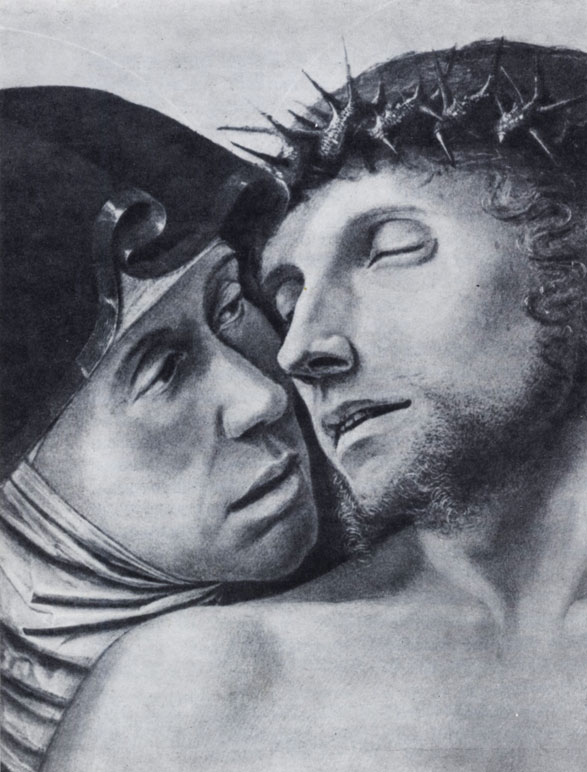
During the 1480s, Giovanni Bellini takes a decisive step forward in his work and becomes one of the founders of the art of the High Renaissance. The originality of the art of the mature Giovanni Bellini stands out clearly when comparing his "Transfiguration" (1480s) with his early "Transfiguration" (Venice, Museo Correr). In the "Transfiguration" of the Correr Museum, the rigidly traced figures of Christ and the prophets are located on a small rock, reminiscent of both a large pedestal to the monument and an iconic "bream". The figures, somewhat angular in their movements, in which the unity of life characteristic and poetic elation of gesture has not yet been achieved, are distinguished by stereoscopicity. Light and cold-clear, almost flashy colors of volumetrically modeled figures are surrounded by a cold-transparent atmosphere. The figures themselves, despite the bold use of colored shadows, are still distinguished by a uniform uniformity of illumination and a certain static character.
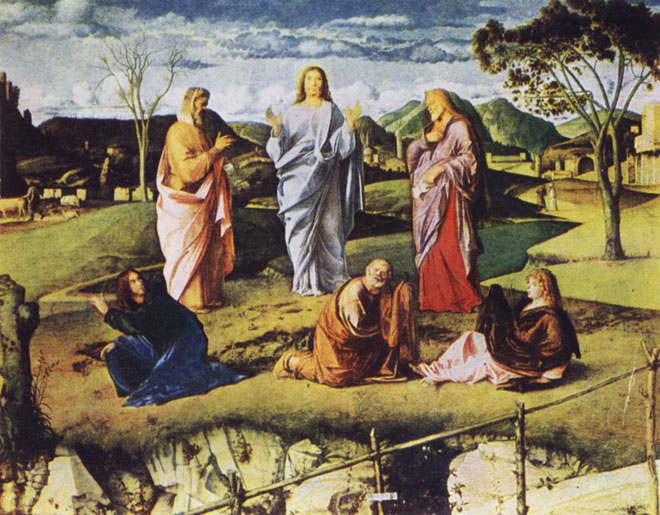
The next stage after the art of Giovanni Bellini and Cima da Conegliano was the work of Giorgione, the first master of the Venetian school, who belonged entirely to the High Renaissance. Giorgio Barbarelli del Castelfranco (1477/78 - 1510), nicknamed Giorgione, was a junior contemporary and student of Giovanni Bellini. Giorgione, like Leonardo da Vinci, reveals the refined harmony of a spiritually rich and physically perfect person. Just like Leonardo, Giorgione's work is distinguished by deep intellectualism and, it would seem, crystalline rationality. But, unlike Leonardo, whose deep lyricism of art is very hidden and, as it were, subordinated to the pathos of rational intellectualism, in Giorgione the lyrical principle, in its clear agreement with the rational principle, makes itself felt more directly and with greater force.
In the painting of Giorgione, nature, the natural environment, begin to play a more important role than in the work of Bellini and Leonardo.
If we still cannot say that Giorgione depicts a single air environment that connects the figures and objects of the landscape into a single plein-air whole, then we, in any case, have the right to assert that the figurative emotional atmosphere in which both the characters and nature live in Giorgione is the atmosphere is already optically common both for the background and for the characters in the picture. A peculiar example of the introduction of figures into the natural environment and the remelting of the experience of Bellini and Leonardo into something organically new - "Giorgionev", is his drawing "St. Elizabeth with the baby John", in which a special, somewhat crystal clear and cool atmosphere is very subtly conveyed by means of graphics, so inherent in the creations of Giorgione.
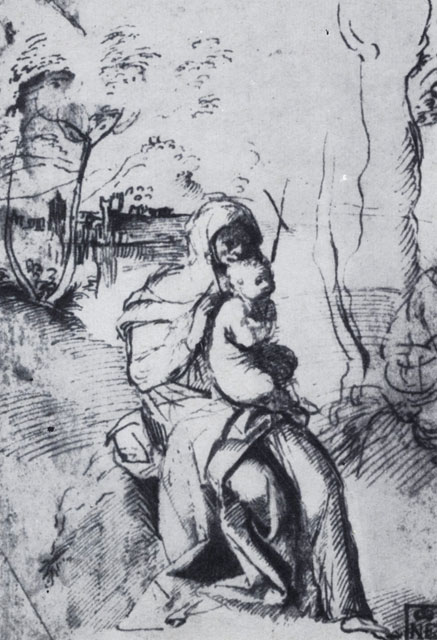
Few works of both Giorgione himself and his circle have survived to our time. A number of attributions are controversial. However, it should be noted that the first complete exhibition of works by Giorgione and the Giorgionescos, held in Venice in 1958, made it possible not only to make a number of clarifications in the circle of the master’s works, but also to attribute to Giorgione a number of previously controversial works, helped to more fully and clearly present the character of his creativity in general.
Relatively early works by Giorgione, completed before 1505, include his Adoration of the Shepherds in the Washington Museum and Adoration of the Magi in the National Gallery in London. In "The Adoration of the Magi" (London), despite the well-known fragmentation of the drawing and the insurmountable rigidity of the color, the master's interest in conveying the inner spiritual world of the characters is already felt. The initial period of creativity Giorgione completes his wonderful composition "Madonna of Castelfranco" (c. 1504, Castelfranco, Cathedral).
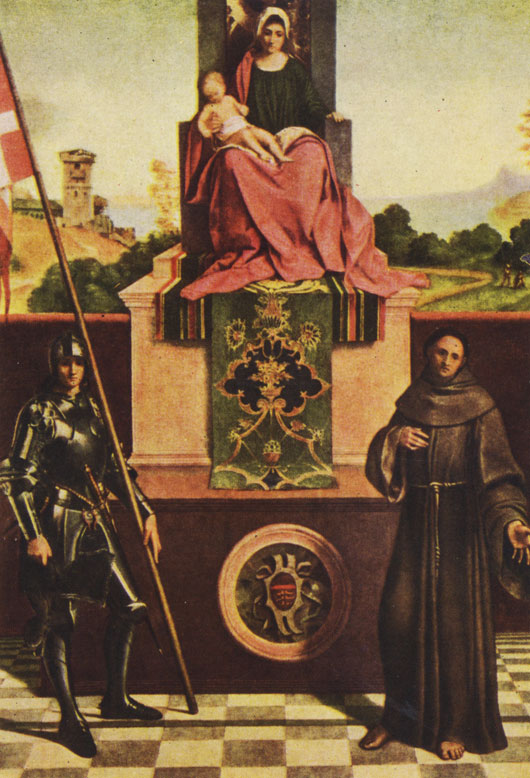
From 1505, the period of the artist's creative maturity began, soon interrupted by his fatal illness. During this short five years, his main masterpieces were created: "Judith", "Thunderstorm", "Sleeping Venus", "Concert" and most of the few portraits. It is in these works that the mastery of the special coloristic and figuratively expressive possibilities of oil painting, inherent in the great painters of the Venetian school, is revealed. It must be said that the Venetians, who were not the first creators and distributors of oil painting, were actually among the first to discover the specific possibilities and features of oil painting.
It should be noted that characteristic features The Venetian school was precisely the predominant development of oil painting and the much weaker development of fresco painting. During the transition from the medieval system to the Renaissance realistic system of monumental painting, the Venetians, naturally, like most peoples who passed from the Middle Ages to the Renaissance stage in the development of artistic culture, almost completely abandoned mosaics. Its highly brilliant and decorative chromaticity could no longer fully meet the new artistic challenges. Of course, the mosaic technique continued to be used, but its role is becoming less and less noticeable. Using the mosaic technique, it was still possible to achieve results in the Renaissance that relatively satisfy the aesthetic needs of the time. But just the specific properties of mosaic smalt, its unique sonorous radiance, surreal shimmer and, at the same time, increased decorativeness of the overall effect could not be fully applied under the conditions of the new artistic ideal. True, the increased light radiance of the iridescent shimmering mosaic painting, although transformed, indirectly, but influenced the Renaissance painting of Venice, which always gravitated towards sonorous clarity and radiant richness of color. But the very stylistic system with which the mosaic was associated, and consequently its technique, had, with a few exceptions, to leave the sphere of large monumental painting. The mosaic technique itself, now more often used for more private and narrow purposes, more of a decorative and applied nature, was not completely forgotten by the Venetians. Moreover, the Venetian mosaic workshops were one of those centers that brought the traditions of mosaic technology, in particular smalt, to our time.
Stained glass painting also retained some significance due to its “luminosity”, although it must be admitted that it never had the same significance either in Venice or in Italy as a whole, that in gothic culture France and Germany. An idea of the Renaissance plastic rethinking of the visionary radiance of medieval stained glass painting is given by "St. George" (16th century) by Mochetto in the church of San Giovanni e Paolo.
In general, in the art of the Renaissance, the development of monumental painting proceeded either in the forms of fresco painting, or on the basis of the partial development of tempera, and mainly on the monumental and decorative use of oil painting (wall panels).
Fresco is a technique with which such masterpieces as the Masaccio cycle, Raphael's stanzas and the murals of Michelangelo's Sistine Chapel were created in the Early and High Renaissance. But in the Venetian climate, she very early discovered her instability and did not have in the 16th century widespread. Thus, the frescoes of the German Compound "Fondaco dei Tedeschi" (1508), executed by Giorgione with the participation of the young Titian, were almost completely destroyed. Only a few half-faded fragments, spoiled by dampness, have survived, among them the figure of a naked woman, full of almost Praxitele charm, made by Giorgione. Therefore, the place of wall painting, in the proper sense of the word, was taken by a wall panel on canvas, designed for a specific room and performed using the technique of oil painting.
Oil painting received a particularly wide and rich development in Venice, however, not only because it seemed the most convenient way to replace the fresco with another painting technique adapted to a humid climate, but also because the desire to convey the image of a person in close connection with the natural environment around him environment, interest in the realistic embodiment of the tonal and coloristic richness of the visible world could be revealed with particular completeness and flexibility precisely in the technique of oil painting. In this regard, tempera painting on boards in easel compositions, pleasing with its great color strength and clearly radiant sonority, but more decorative in nature, naturally had to give way to oil, and this process of displacing tempera with oil painting was especially consistently carried out in Venice. It should not be forgotten that for Venetian painters, a particularly valuable property of oil painting was its ability to be more flexible than tempera, and even with fresco, to convey light-color and spatial shades of the human environment, the ability to gently and sonorously sculpt the shape of the human body. For Giorgione, who worked relatively little in the field of large monumental compositions (his painting was, in essence, either easel in nature, or they were monumental in their general sound, but not connected with the structure of the surrounding architectural composition of the interior), these possibilities inherent in oil painting were especially valuable. It is characteristic that the soft molding of the form with chiaroscuro is also inherent in his drawings.
a feeling of the mysterious complexity of the inner spiritual world of a person, hidden behind the apparent clear transparent beauty of his noble external appearance, finds expression in the famous "Judith" (before 1504, Leningrad, the Hermitage). "Judith" is formally a composition on a biblical theme. Moreover, unlike the paintings of many Quattrocentists, it is a composition on a theme, and not an illustration of a biblical text. Therefore, the master does not depict any culminating moment from the point of view of the development of the event, as the Quattrocento masters usually did (Judith strikes Holofernes with the sword or carries his severed head along with the maid).

Against the backdrop of a calm pre-sunset landscape, under the canopy of an oak tree, leaning thoughtfully on the balustrade, slender Judith stands. The smooth tenderness of her figure is set off in contrast by the massive trunk of a mighty tree. Clothes of a soft scarlet color are permeated with a restless-broken rhythm of folds, as if a distant echo of a passing whirlwind. In her hand she holds a large double-edged sword resting on the ground with its tip, the cold shine and straightness of which contrastly emphasize the flexibility of the half-naked leg trampling Holofernes' head. An imperceptible half-smile glides across Judith's face. This composition, it would seem, conveys all the charm of the image of a young woman, coldly beautiful, which is echoed, like a kind of musical accompaniment, by the soft clarity of the surrounding peaceful nature. At the same time, the cold cutting edge of the sword, the unexpected cruelty of the motive - the tender naked foot trampling the dead head of Holofernes - bring a feeling of vague anxiety and anxiety into this seemingly harmonious, almost idyllic in mood picture.
On the whole, of course, the clear and calm purity of the dreamy mood remains the dominant motive. However, the comparison of the bliss of the image and the mysterious cruelty of the motif of the sword and the trampled head, the almost rebus complexity of this dual mood, can plunge the modern viewer into some confusion.
But Giorgione's contemporaries, apparently, were less struck by the cruelty of the contrast (Renaissance humanism was never overly sensitive), rather than attracted by that subtle transmission of the echoes of distant storms and dramatic conflicts, against which the acquisition of refined harmony, the state of serenity of the dreamily dreaming beautiful human soul.
In literature, there is sometimes an attempt to reduce the meaning of Giorgione's art to the expression of the ideals of only a small humanistically enlightened patrician elite of Venice at that time. However, this is not entirely true, or rather, not only so. The objective content of Giorgione's art is immeasurably broader and more universal than the spiritual world of that narrow social stratum with which his work is directly connected. The feeling of the refined nobility of the human soul, the striving for the ideal perfection of the beautiful image of a person living in harmony with the environment, with the surrounding world, also had a great general progressive significance for the development of culture.
As mentioned, interest in portrait sharpness is not characteristic of Giorgione's work. This does not mean at all that his characters, like the images of classical ancient art, are devoid of any concrete individual originality. His magi in the early "Adoration of the Magi" and the philosophers in "Three Philosophers" (c. 1508, Vienna, Kunsthistorisches Museum) differ from each other not only in age, but also in their appearance, in their character. However, they, and in particular the "Three Philosophers", with all the individual differences in images, are perceived by us mainly not so much as unique, vividly characterized individuals, or even more so as an image of three ages (a young man, a mature husband and an old man), but as the embodiment of various aspects , different facets of the human spirit. It is not accidental and partly justified the desire to see in three scientists the embodiment of three aspects of wisdom: the humanistic mysticism of Eastern Averroism (a man in a turban), Aristotelianism (an old man) and contemporary artist humanism (a young man inquisitively peering into the world). It is quite possible that Giorgione put this meaning into the image he created.


But the human content, the complex richness of the spiritual world of the three heroes of the picture is wider and richer than any one-sided interpretation of them.
In essence, the first such comparison within the framework of the emerging Renaissance art system was carried out in the art of Giotto - in his fresco "The Kiss of Judas". However, there the comparison of Christ and Judas was read very clearly, since it was connected with the universally known religious legend of that time, and this opposition has the character of a deep irreconcilable conflict between good and evil. The maliciously treacherous and hypocritical face of Judas acts as an antipode to the noble, exalted and strict face of Christ. Due to the clarity of the plot, the conflict of these two images has a huge immediately conscious ethical content. Moral and ethical (more precisely, moral and ethical in their fusion) superiority, moreover, the moral victory of Christ over Judas in this conflict, is undeniably clear to us.
In Giorgione, the juxtaposition of an outwardly calm, unconstrained, aristocratic figure of a noble husband and a figure of a somewhat malicious and base character occupying a dependent position in relation to her is not connected with a conflict situation, in any case, with that clear conflict intransigence of characters and their struggle, which gives such a high the tragic meaning of Giotto, brought together by the kiss of the reptile Judas and Christ, beautiful in his calmly strict spirituality ( It is curious that the embrace of Judas, foreshadowing the teacher's torment on the cross, echoes again, as it were, with the compositional motif of the meeting of Mary with Elizabeth, included by Giotto in the general cycle of the life of Christ and broadcasting about the coming birth of the Messiah.).
Clairvoyant and harmonious in its hidden complexity and mystery, the art of Giorgione is alien to open clashes and struggles of characters. And it is no coincidence that Giorgione does not catch the dramatic conflicting possibilities hidden in the motif depicted by him.
This is his difference not only from Giotto, but also from his brilliant student Titian, who, in the period of the first heyday of his still heroic and cheerful creativity, albeit in a different way than Giotto, caught in his "Denarius of Caesar", so to speak, the ethical meaning of the aesthetic opposition of the physical and spiritual nobility of Christ to the vile and brute strength of the Pharisee's character. At the same time, it is extremely instructive that Titian also refers to the well-known Gospel episode, emphatically conflicting in the nature of the plot itself, solving this topic, naturally, in terms of the absolute victory of the rational and harmonious will of a person who embodies here the Renaissance and humanistic ideal over his own opposite.
Turning to the actual portrait works of Giorgione, it should be recognized that one of the most characteristic portraits of his mature period of creativity is the wonderful "Portrait of Antonio Brocardo" (c. 1508 - 1510, Budapest, Museum of Fine Arts). In it, of course, the individual portrait features of a noble young man are accurately conveyed, but they are clearly softened and, as it were, woven into the image of a perfect person.
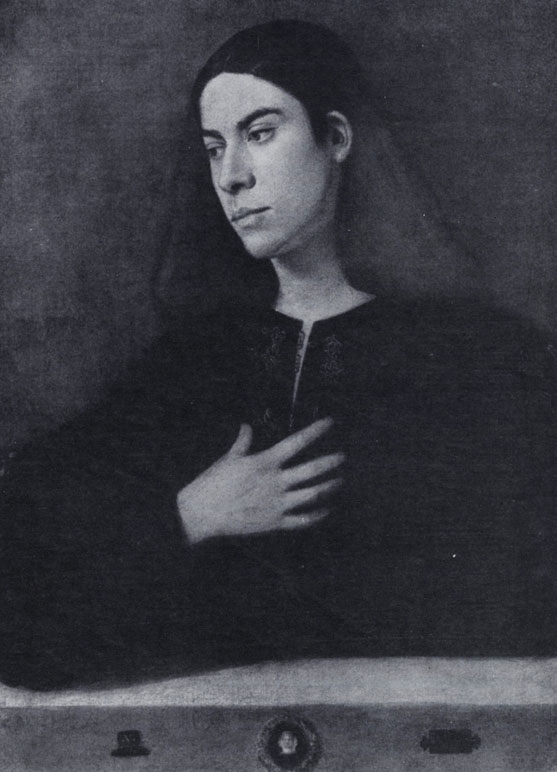
The effortlessly free movement of the young man’s hand, the energy felt in the body, half-hidden under loose-wide robes, the noble beauty of a pale swarthy face, the restrained naturalness of planting the head on a strong, slender neck, the beauty of the contour of an elastically defined mouth, the thoughtful dreaminess of a person looking into the distance and to the side from the viewer's gaze - all this creates an image of a person full of noble power, seized by a clear, calm and deep thought. The soft curve of the bay with still waters, the silent mountainous coast with solemnly calm buildings form a landscape background ( Due to the darkened background of the painting, the landscape in the reproductions is indistinguishable.), which, as always with Giorgione, does not unanimously repeat the rhythm and mood of the main figure, but, as it were, indirectly consonant with this mood.
The softness of the cut-off sculpting of the face and hand is somewhat reminiscent of Leonardo's sfumato. Leonardo and Giorgione simultaneously solved the problem of combining the plastically clear architectonics of the forms of the human body with their softened modeling, which made it possible to convey all the richness of its plastic and chiaroscuro shades - so to speak, the very "breath" of the human body. If with Leonardo it is rather a gradation of light and dark, the finest shading of the form, then with Giorgione sfumato has a special character - it is, as it were, modeling the volumes of the human body with a wide stream of soft light.
Giorgione's portraits begin a remarkable line of development of the Venetian portrait of the High Renaissance. The features of the Giorgione portrait will be further developed by Titian, who, however, unlike Giorgione, has a much sharper and stronger sense of the individual uniqueness of the depicted human character, a more dynamic perception of the world.
The work of Giorgione ends with two works - "Sleeping Venus" (c. 1508 - 1510, Dresden, Art Gallery) and the Louvre "Concert" (1508). These paintings remained unfinished, and the landscape background in them was completed by Giorgione's younger friend and student, the great Titian. "Sleeping Venus", in addition, has lost some of its pictorial qualities due to a number of damages and unsuccessful restorations. But be that as it may, it was in this work that the ideal of the unity of the physical and spiritual beauty of man was revealed with great humanistic fullness and almost ancient clarity.
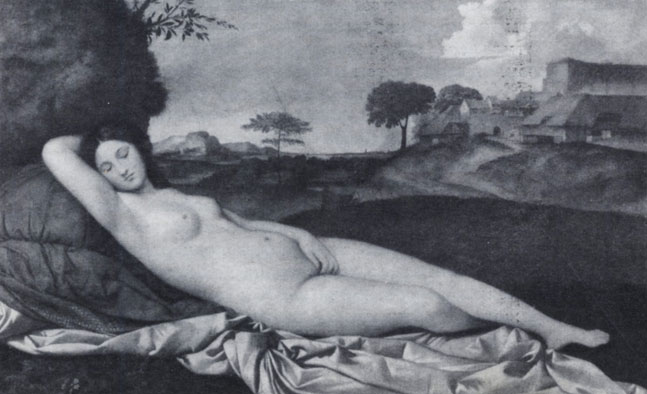
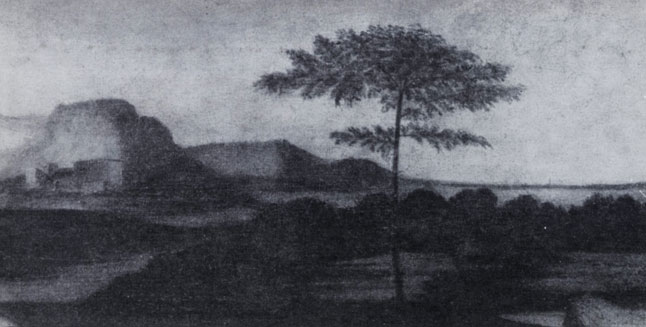
Immersed in a quiet slumber, naked Venus is depicted by Giorgione against the backdrop of a rural landscape, the calm gentle rhythm of the hills is so in harmony with her image. The atmosphere of a cloudy day softens all contours and at the same time preserves the plastic expressiveness of forms. It is characteristic that here again the specific correlation of the figure and the background is manifested, understood as a kind of accompaniment to the spiritual state of the protagonist. It is no coincidence that the tensely calm rhythm of the hills, combined in the landscape with the wide rhythms of meadows and pastures, enters into a peculiarly consonant contrast with the soft, elongated smoothness of the contours of the body, which, in turn, is contrasted by the restless soft folds of the fabric on which the naked Venus reclines. Although the landscape was completed not by Giorgione himself, but by Titian, the unity of the figurative structure of the picture as a whole is indisputably based on the fact that the landscape is not just in unison with the image of Venus and not indifferently related to it, but is in that complex relationship in which the line is found in music. melodies of the singer and the choir accompanying him in contrast. Giorgione transfers to the sphere of the relationship "man - nature" the principle of decision that the Greeks of the classical period used in their statuary images, showing the relationship between the life of the body and the draperies of light clothing thrown over it. There, the rhythm of the draperies was, as it were, an echo, an echo of the life and movement of the human body, at the same time obeying in its movement a different nature of its inert being than the elastic-living nature of a slender human body. So in the game of draperies of statues of the 5th - 4th centuries BC. e. a rhythm was revealed, contrastingly shading the clear, elastically "rounded" plasticity of the body itself.
Like other creations of the High Renaissance, George's Venus in its perfect beauty is closed and, as it were, "alienated", and at the same time "mutually related" both to the viewer and to the music of the nature surrounding her, consonant with her beauty. It is no coincidence that she is immersed in clear dreams of a quiet sleep. The right hand thrown behind the head creates a single rhythmic curve that embraces the body and closes all forms into a single smooth contour.
A serenely light forehead, calmly arched eyebrows, softly lowered eyelids and a beautiful strict mouth create an image of transparent purity indescribable in words.
Everything is full of that crystal transparency, which is achievable only when a clear, unclouded spirit lives in a perfect body.
"Concert" depicts against the backdrop of a calmly solemn landscape, two young men in magnificent clothes and two naked women, forming an unconstrainedly free group. The rounded crowns of trees, the calmly slow movement of moist clouds are in amazing harmony with the free, wide rhythms of the clothes and movements of young men, with the luxurious beauty of naked women. The lacquer darkened with time gave the picture a warm, almost hot golden color. In fact, her painting was originally characterized by a balanced overall tone. It was achieved by an accurate and subtle harmonic juxtaposition of restrainedly cold and moderately warm tones. It was precisely this subtle and complex, acquired through precisely captured contrasts, that the soft neutrality of the general tone not only created the unity characteristic of Giorgione between the refined differentiation of shades and the calm clarity of the coloristic whole, but also somewhat softened that joyfully sensual hymn to the magnificent beauty and enjoyment of life, which is embodied in the picture. .
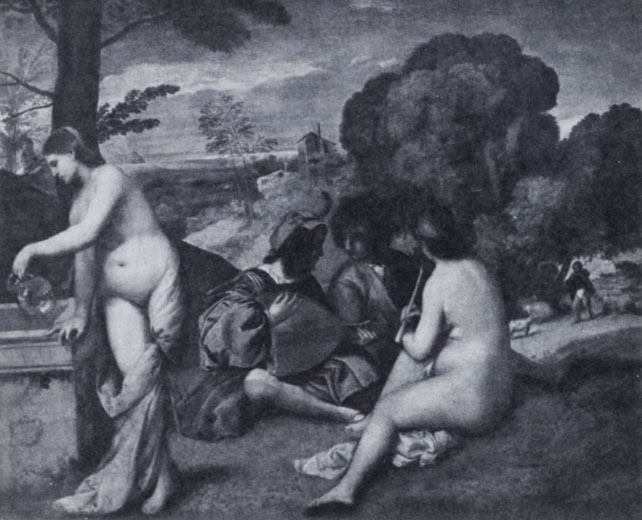
To a greater extent than other works by Giorgione, the "Concert" seems to prepare the appearance of Titian. At the same time, the significance of this late work by Giorgione is not only in its, so to speak, preparatory role, but in the fact that it once again reveals, not repeated by anyone in the future, the peculiar charm of his creative personality. The sensual joy of being in Titian also sounds like a bright and upbeat excited hymn to human happiness, its natural right to enjoyment. In Giorgione, the sensual joy of the motive is softened by dreamy contemplation, subordinated to a clear, enlightenedly balanced harmony of a holistic view of life.






